A Kayaking Trip – San Josef Bay to Port Hardy
Paddling around the top of Vancouver Island has been on my bucket list of paddling trips for decades. The relatively untouched wilderness and exposed coastline of this region makes it a paddler’s paradise. The entire shore area along the northern tip of Vancouver Island is protected by Cape Scott Provincial Park. The park encompasses an area running from Shushartie Bay on the northeast coast, about 35 km from Port Hardy, running around the tip of the island to just south of San Josef Bay on the west coast.
The north end of Vancouver Island is one of the most dangerous passages for boaters in British Columbia. Tidal currents can range in speed up to 3 knots or more in Scott Channel and just east of here the currents are slightly weaker but can still produce significant rips and overfalls. Further along the northern tip of the island, at the Tatnall Reefs and Nahwitti Bar, currents can exceed 5 knots. Heavy seas and strong winds in both these areas can combine with currents to create extremely dangerous conditions. Strong northwest winds, which rise at times to gale force 35 to 45 knots, are fairly common off the north coast of Vancouver Island in the summer and fog is a very regular occurrence.
Our plans were to kayak around the northern tip of the island, but if you’re more inclined to travel on foot, there is a hiking trail running around the tip which was established in 2008. We were able to explore portions of the North Coast Trail and it certainly gives you a very different perspective of the area. If you decide you might like to hike this area, here is what BC Parks has to say about the trail on their website and from the few kilometers that we explored, they are not being overly dramatic:
“This is a very challenging route and is not recommended for inexperienced hikers. Many sections require hikers to climb over or along fallen trees, to cross through deep mud, and to use fixed ropes to climb up and over steep sections. It is not recommended for those with a fear of heights. The trail is located in a wilderness area with minimal supplies or equipment of any kind. It is not regularly patrolled, so hikers should be completely self sufficient. It is strongly recommended that all hikers carry a satellite phone or VHF radio in case of emergency. Cell phones do not work in the park, and assistance may be days away in case of an accident.”
The History of the Cape Scott Region
Prior to white settlement of the area, three First Nations peoples shared the Cape Scott region. The Yutlinuk lived on the Scott Islands and sadly died out in the early 1800s. The Nakumgilisala and Tlatlasikwala amalgamated in the mid 1850s and moved to Hope Island where they lived until 1954. At that point, with their population reduced to 32, they joined the Koskimo people in Quatsino Sound. Today they are known as the Nahwitti and two of their reserves are located within the boundaries of Cape Scott Provincial Park.
From 1897 to 1907 the first white settlement at Cape Scott was started by a group of Danish settlers. Most of these were from Minnesota, Iowa, Nebraska and North Dakota. They established a small business centre at Fisherman Bay and farmed the meadow lands at Hansen Lagoon. The colony had started with an agreement with the the provincial government who agreed to build a road running from Holberg to the San Josef River, near San Josef Bay, and on to Fisherman Bay. The road would provide the essential link to transport the beef and dairy products the settlers were going to produce, to market.
In the end, the provincial government of the day, fearing a backlash for establishing a “little Denmark”, withdrew their land lease and road construction promise. This, along with the isolation, the rain, the wind, the tides, and the ever encroaching rain forest, forced many of the settlers to abandon their farms and seek work in the surrounding logging and fishing communities.
By 1909 there were less than 60 people at Cape Scott. However, in 1913 another wave of settlers had arrived from other parts of Canada, the US and Europe to occupy the land that the government had opened for pre-emption. Some of them took up residence in the homes vacated by the Danes near Hansen Lagoon. Others took up land and built homes at Fisherman Bay and San Josef Bay with the population peaking at over 1000 in 1913. Eventually, the same hardships the Danes had experienced along with conscription for service in the First World War, brought an end to the second group of settlers as well.
A few artifacts, decaying driftwood fences posts and remnants of old buildings being reclaimed by the forest are all that remains of these communities. The only year-round residents remaining are the lighthouse keepers at the Cape Scott light station.
The Kayaking Trip
Logistically, kayaking around the north end of Vancouver Island is not one of the easiest trips to organize as it entails some form of shuttle to get transportation to both ends of the trip. Fortunately, thanks to Heidi and Dugald, my paddling partners, we had a very good solution arranged.
Day 1 – San Josef Bay to the Helen Islands
The paddling portion of the trip began on a wet Friday afternoon after driving up from Campbell River where we had stayed overnight with our good friend Brenda. Brenda was to be a key component of our trip as she had very kindly offered to drive up with us in her vehicle to Port Hardy and solve the problem of the vehicle shuttle for us. We left her vehicle parked at the Wildwoods Campground in Port Hardy, which offers long term parking to kayakers and hikers heading for Cape Scott Provincial Park. The campground is about 2 kilometers from where we would ultimately take out at Bear Cove.
We all drove out to the put in on the San Josef River in my truck where we could begin our paddle back to Port Hardy. Brenda would return in my truck to her vehicle at Wildwoods Campground, park it, and drive home. The result being my truck would be waiting for us when we paddled into Port Hardy. Thank you Brenda!
The San Juan river put-in is the only way to get out to San Josef Bay in loaded kayaks, as the hiking trail is a 45 minute walk without boats and gear. The river is affected by the tides and an ideal launch is around high tide, which avoids having to get out and drag your kayak over a couple of shallow bars that become exposed at low tides. Dugald and I had that experience on a previous trip to Esperanza Inlet.
We managed to get the boats loaded and paddle out into San Josef Bay before the rain started late in the afternoon. The high tide helped flatten the surf in the river channel at the entrance to the bay, providing a clear passage into the bay. However, with winds blowing 10-12 knots, choppy seas and constant showers, sometimes heavy, it was a wet paddle on the way to our first nights camp.
With the foul weather and a late start it was a fortuitous that it wasn’t far to the campsite on the Helen Islands. The Helen Islands are located at the entrance to Sea Otter Bay. We were able to camp on the lee side of the islands, so we were at least out of the wind and blowing drizzle. We set up the tarp as our first priority and assembled the tents underneath it to keep them as dry as possible before moving them to their respective sites. After that it was time to start dinner and settle in for the night.
Day 2 – Helen Islands, Around Cape Scott, to Experiment Bight
The morning brought more grey skies, but at least the wind had eased and the rain had stopped. We set out into 2-3 meter swells around Cape Russell and then turned northwest towards Cape Scott. Conditions remained good as we paddled up the coast with light winds at our backs. There were a lot of sea birds on the water and a considerable variety of species.
Our initial plan was to paddle into Guise Bay on the south side of Cape Scot and camp there. However, with favourable conditions on the water, unfavourable conditions in Guise Bay due to large surf, and the forecast for the next couple of days a little uncertain, we decided to continue on and get around Cape Scott while the conditions were good.
As we approached the cape, the tide had turned against us. There were light winds opposing the current which made conditions a bit choppy. In spite of this we had a pretty easy run of it. The worst we encountered was a 3 knot rip as we rounded the last point into Experiment Bight. This required some more aggressive paddling and some surfing of the waves for assistance in making headway. All good fun!
Once we were around the most northerly point of Cape Scott it was clear sailing into Experiment Bight, where we set up camp in the west corner under clearing skies. In fact, we were able to enjoy a good of bit of sunshine through the afternoon.
Experiment Bight is bounded by a large sandy beach, beautiful to look at, but hell to camp in. Sand gets in everything! Up behind our campsite is a sandy isthmus of dunes connecting Cape Scott to rest of Vancouver Island. The dunes are covered by dune grass and other stabilizing plants and notable are the remains of wood fence posts left over from N.P Jensen’s attempt to create pasture land on these dunes around 1910.
While we were cooking dinner a tiny dusky shrew wandered into camp. This tiny creature, no bigger than your thumb, completely ignored our presence as he scrambled around looking for sand fleas, some of them almost half his size!
Cape Scott Lighthouse
The Cape Scott lighthouse is not one of the most picturesque nor historic lighthouses on the coast. It was originally built in 1960 with the tower being located on the old foundation of a World War II radar tower. The radar site was built in 1943 as part of the chain of radar stations for surveillance of the Canadian/US Pacific Coast. The lighthouse tower was replaced in 1981 and the station is still manned, unlike so many lighthouses on the coast. Interestingly enough, neither the lighthouse or any of the station’s buildings are visible from the water as you paddle around the cape.
I would have liked more time to explore Cape Scott and the light station, but weather concerns meant we needed to press on to a more sheltered location the next morning. There were 25-30 knot northwest winds in the forecast and we wanted to be in the much more sheltered waters of Fisherman Bay, a few miles along the coast, before that happened.
Day 3 – Experiment Bight to Fisherman Bay
We set off in the morning in light rain showers and relatively calm conditions with a low band of fog hanging over Cape Scott. The fog gradually burned off as the morning progressed. Our destination was Fisherman Bay only 5 1/2 nautical miles (nm) away. On the way we saw a few sea lions and sea otters and passed a black bear browsing on sedge grass on a beach near Frederiksen Point.
Fisherman Bay is a deeper horseshoe bay separated by a headland from Nissen Bight, where the Cape Scott Provincial Park campsite is located. Nissen Bight is the preferred camp spot for backpackers as there is lots of sandy beach to spread out on, 2 kms worth! There is a water supply at the east end of the beach and bear caches at the western end. We preferred Fisherman Bay with its steeper cobble beach, which meant no sand and easier access to the water at low tides and its very sheltered location if the northwest winds came up. These features also makes it the preferred water taxi pick up point for hikers completing the North Coast Trail arriving from Shushartie Bay. We watched a rather trail shocked group of hikers loading up while we were enjoying lunch that day.
Fisherman Bay is where the first Danish settlers arrived. Little remains of the original settlement apart from the odd piece of machinery up in the trees, an old log dock broken away from its original location and the remains of the old corduroy road leading towards Hansen Lagoon.
Day 4 – Hiking to the Cape Scott Settlement Sites
I was curious to explore some of the old settlement spots located a few kilometers away, so I set off the next morning to check some of these out. The junction with the Cape Scott Trail is about 2 km away and while the trail starts out in great shape, it quickly turns into sections of deep mud. Dugald set out with me but decided his only pair of hiking shoes for this trip weren’t going to stand up to the continuous abuse of the quagmire, and decided to turn back. Being a sucker for punishment, I decided to carry on. Traveling light, it was mostly possible to stay along the edge of the mud holes and avoid the worst of it, but I still got pretty muddy, having to stop at a stream to rinse off before getting back to camp.
The junction of the North Coast and Cape Scott trails is very close to the location of one of the early settlement sites. There is not much remaining but a few artifacts collected along the trail. Nearby, a short distance off the Cape Scott Trail, are the remains of an old wood stove and a large 6 foot polished granite grave stone commemorating the death of young William Christensen who died in 1906 at the age of 12 from blood poisoning after stepping on a rusty nail. Looking around at the forest growth since the time of the settlement, the condition today’s hiking trails are in and an understanding of the ferocity of the weather this area receives, this site, with its lonely grave stone was a sobering reminder of how tough conditions were for those early pioneers.
I continued along the Cape Scott trail heading west towards Hansen Lagoon and the location of the second settlement. There is a placard on the edge of the trail identifying the spot and some artifacts lying on the side of the trail. There aren’t really any remains of buildings, which included the community hall and school house, except a few rotten boards that the forest hasn’t yet reclaimed. Off on a short side path I found the foundation site of a building with some artifacts lying around and an abandoned tractor.
One of the last residents in this area was Alfred Spencer, whose homestead was just to the east of Hansen Lagoon. He left here in 1956 and apparently his home stood in relatively good shape until 1969, when someone burned it to the ground.
Not far west from the settlement site is Hansen Lagoon where another placard explains the dike construction. All that remains here are some of rotting posts that fenced in the pasture land created by the dykes which were built near the mouth of the Fisherman River, the first being built in 1899 and the second in 1905.
I returned to our camp after 3 1/2 hours on the trail, hiking, exploring, photographing and chatting with hikers, of which there were a surprising number on the Cape Scott Trail. I passed over 30 hikers in groups ranging from 2 to 10. Eventually, I emerged from the gloom of the forest into beautiful sunshine at Fisherman Bay and enjoyed some quiet downtime to contemplate all that I had seen. That evening we chowed down on Heidi’s delightful pesto pasta and carrot salad dinner! A black bear wandered onto the beach while we were eating providing some entertainment. After dinner we walked across to Nissen Bight and along the length of the beach as the sun set making for a pleasant end to the day.
Day 5 – Fisherman Bay to Shuttleworth Bight
Sunshine greeted us in the morning, and we set off with dry gear in beautiful, flat calm conditions for the 8 nm paddle to Shuttleworth Bight. It was definitely a day for marine wildlife. There were large packs of sea lions roaming around and lots of sea otters. It was so calm and quiet you could hear the sea otters making mewling sounds around us. The sea lions were very curious and would pop up in packs around us barking like mad.
Just off Christensen Point Dugald thought we were in a strong current because the kelp just beneath the surface was streaming strongly to the right. That was not the case. It was a pack of sea lions swimming just under the surface. They then popped up directly in front of his kayak forcing a strong course correction! After the rather rambunctious sea lions left, a lone sea otter popped up in front of my kayak and looked me as if to ask, ‘what was all the fuss about?’ Beyond the sea lions and sea otters there were lots of sea birds including ancient murrelets, marbled murrelets, rhinoceros auklets, murres, pacific loons and common loons.
Coming around the final point into Shuttleworth Bight we spotted a large group of kayakers on the beach, so we chose to head into the Strandby River estuary instead of landing on the beach. However, we also wanted to see if there was a more protected spot to camp and perhaps something with less sand. We landed on a cobble beach on the river’s edge and after having some lunch and a little exploration, decided that a spot just a few yards up the beach at the junction of a saltwater lagoon and the river, would be an ideal spot to set up camp. A little work with the Bear Gryllis machete cleared a couple of small tent sites back in the forest and we were all set!
After we had camp set up, Dugald and I set off in our kayaks to find some fresh water while the tide was still high and the river navigable. We had to paddle a kilometer or so upstream to find a spot where the fresh water was flowing freely clear of the tide waters. On the way we passed under the North Coast Trail cable car crossing the river, which we both decided would be worth a hike back to at some point and try it out.
With the sun out and the temperature warm it was a perfect afternoon to get washed up and do some laundry. A dinner of a delicious jambalaya and cabbage salad and wine, followed by sipping rum and chocolate was the perfect repast while we watched the evening light slip away.
A combination of such a beautiful spot and a desire to check out some of the North Coast Trail and the cable car crossing made it an easy decision to spend another day at Shuttleworth Bight. This area has some of the most intact old growth forest around any of Cape Scott’s main river systems so is well worth exploring.
Day 6 – Hiking the North Coast Trail to the Strandby River Crossing
Dugald and I set off in the morning for the cable car crossing on a section of the trail that ran just behind our tent sites. The trail started out nice and flat and hard packed but it quickly turned into sections of deep mud and dead fall. The hike turned into a substantial workout to cover the kilometer or so to the cable car crossing and took us about 45 minutes. For us, it was tough enough just carrying some water and a camera, but we passed three groups of backpackers, fully loaded negotiating the same stuff. This trail definitely requires a solid level of fitness and fortitude to deal with this kind of trail mile after mile!
Dugald and I were like a couple of kids at the cable car crossing. First you climb the tower and pull the car towards you, as it naturally hangs in the middle of the river. It takes a bit of effort to pull it in but with two people working it’s fairly easy. Holding on to the structure until both people are in and secure you just let go and enjoy the ride as the car takes off by gravity towards the middle of the river. Big smiles make for good photo opportunities and it’s great fun until it runs out of steam on the up hill portion. It takes some good solid grunt work to pull the car and its load of passengers up to the tower on the opposite side. We continued on for a ways towards the beach at Shuttleworth Bight, but the gnarliness of the trail was relentless and we just didn’t seem to be getting any closer to the beach. Knowing we had to do all this over again on the return trip and lunch was back at camp, we decided to abandon the effort and turn around.
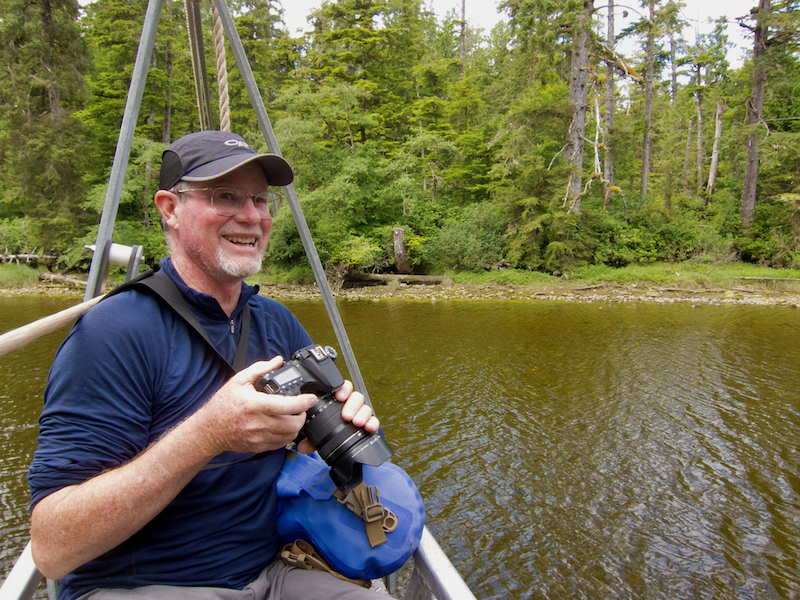
Big smiles as we ride the cable car over the Strandby River at Shuttleworth Bight – Dugald Nasmith photo
After lunch I went off for an exploration of an historical portion of Shuttleworth Bight. There was a settlement here beginning back in 1892 with the creation of a telegraph line between Shushartie Bay and Cape Scott. Subsequently it became a good location for shallow drafted boats to take shelter in the river mouth and so it became an outpost community of the Cape Scott Settlement. There was a store, a church, school and post office here by 1915, but 1920 the settlement was largely abandoned. One of the families that settled here were the Shuttleworths, and a portion of property along the Strandby River has remained private property and is not part of the provincial park. There is an old lodge near the river, but it looks like it has not seen use for many years as the salal has completely cut off access from the river and the only remains of a former dock are a couple of pilings. The veranda at the back of the lodge has collapsed, but otherwise, the building is still in fairly decent shape.
The dinner that night was Mediterranean, which was pitas stuffed with tabouli, cabbage slaw and hummus…delightful! We were entertained by a huge flock of gulls flying around the beach at Shuttleworth Bight with a stunning background formed by a large hill called the Northwest Nipple.
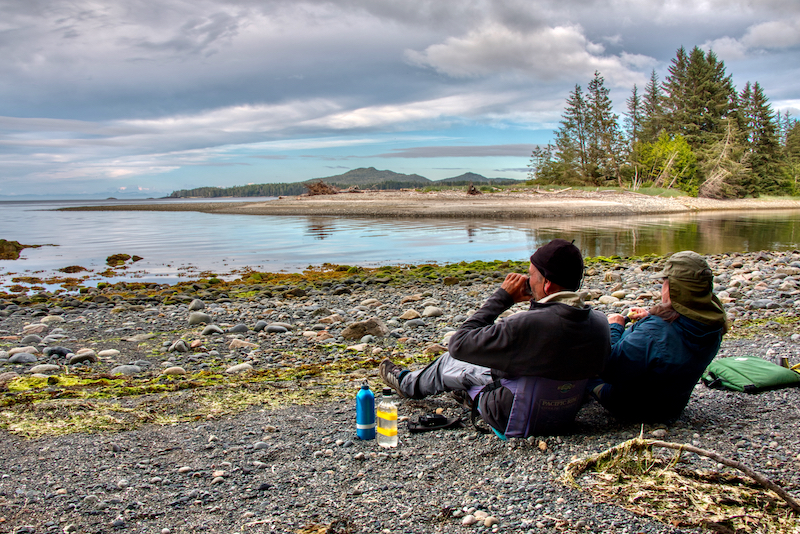
Enjoying evening coffee at Shuttleworth Bight looking over the Strandby River and the Northwest Nipple in the distance
I was woken early the next morning by a symphony of Swanson’s Thrush and decided I may as well get up and try to catch the the sunrise over the Northwest Nipple. It turned out to be worth the effort. We had breakfast and packed up for our 6.5 nm paddle to Cape Sutil, the most northerly point on Vancouver Island.
Day 7 – Shuttleworth Bight to Cape Sutil
The morning started with blue sky and not a cloud to be seen, but the fog started rolling in as we crossed Shuttleworth Bight. It was flat calm on the water, but at times visibility was reduced to zero. Just as we left the river mouth, a harbour porpoise with a youngster swam past us. There were also whales on the water with us, but although we could hear them blowing, we couldn’t see them through the fog.
At times the fog was so thick we literally almost ran into a headland just before Cape Sutil. We felt our way around the point and saw a couple of hikers on the beach. It turned out to be a couple we had met back at Nissen Bight. Embarassingly, we thought the point we were at was Cape Sutil, but the hikers told us they didn’t think so and after another, rather more careful look at our charts and GPS, we confirmed that.
As we finally rounded Cape Sutil, the fog was beginning to lift and the sun started streaming through exposing a stunningly beautiful vista with aquamarine water and white sandy beaches. Picture perfect! We quickly landed for a short break just inside the point then paddled further into the bight to have a look at the Cape Scott Provincial Park campsite which has a Yurt for the rangers to use, a pit toilet (without walls) and bear caches. Apparently, freshwater can be difficult to find here in late summer, however, we did find a decent trickle running off the embankment onto the beach where we were camped.
After a quick exploration of the park camp and ranger station we got back in our boats and headed back to the beach inside Cape Sutil, just beyond the First Nations Reserve which encompasses the most northerly portion of the beach. Cape Sutil is the site of the former fortified First Nations village of “Nahwitti” and is rich in cultural heritage. The village was shelled in 1850 by the HMS Daedalus in retaliation for the killing of three British Navy deserters. I guess the navy was pissed off they lost the opportunity to kill them themselves. The village was deserted permanently in 1851 after being shelled a second time.
As we settled into camp life on the beach, the fog would come and go, trading places with the sun for a period of time. A flock of nine common loons with a couple young cruised close by the beach. It is not often that you find these usually solitary birds in a group like this. An osprey was also patrolling the waters and finally bagged a fish just a few feet off the beach right in front us as we were having our dinner.
Day 8 – Cape Sutil to Vansittart Island
After a hearty breakfast of grits with bacon & onion, we left Cape Sutil in relatively clear skies & sunshine, but there were fog patches all around. We crossed the bight, paddling towards the coast passing the Nahwitti River mouth, which is another Provincial Park campsite. From here we began moving towards the Tatnall Reefs. The reefs were formed by a glacial moraine which created a submarine ridge of debris extending over 3 kms from shore. This can be a particularly gnarly section of the north island to navigate with currents that can reach 5 knots or more. Put that against north westerly winds, add a large rolling swell and conditions here can be dramatic. Fortunately for us, the currents were light, winds were calm and other than zero visibility due to the thick fog, our crossing of the reefs was uneventful. Navigating through the Tatnall Reefs nearer to shore is the best option for small boaters. Attempting to go out and around puts you a long way off shore and out over the Nahwitti Bar where the westerly ebb, which can run over 5 knots. When that runs against an opposing wind, it can create very large breaking seas, which can be a hazard even for larger boats.
Working our way through the reefs, we approached Skinner Creek, another provincial park campsite, though not really suitable for kayakers due to its exposure to surf. There were hundreds of gulls sitting all over the cobble beach. Dugald passed them uneventfully looking for a place to land just beyond them, but Heidi and I remained offshore. As we waited for Dugald, we spotted a bald eagle approaching the beach. The eagle’s low pass created pandemonium as hundreds of gulls took to the air, the entire swarm stampeded out over our kayaks. We both ducked as the gull-pocalypse thundered overhead convinced we were going to be caught in a major shit storm! Miraculously we escaped unscathed, but what a sight and what a cacophony of sound as these hundreds of gulls circled overhead!!
Once we were past Skinner Creek the fog began to thin and burn off creating some beautiful ethereal lighting as the sun rays penetrated the fog shrouded trees on shore and reflected in the glowing emerald green water. Shortly after, we stopped for lunch on a beautiful gravel beach and watched as a minke whale cruised by just a few feet off the rocks.
Our time on Vancouver Island and Cape Scott Provincial Park was now over. After lunch, we began the 1 1/2 nm crossing of Goletas Channel, heading over to Hope Island. We worked our way along the Hope Island shoreline and turned up into Bate Passage. Our next campsite would be on Vansittart Island, about 12 nm from our start at Cape Sutil. A couple of humpbacks were circulating through Bate Passage and Shadwell Passage in their search for food, but they never got very close, we usually only heard or saw the tell tale blow spouts.
There is a very well developed campsite on the southwest corner of Vansittart Island complete with a work station, benches and decent tent sites. The site is accessed from the bay on the north side which has a sandy beach. The only negative is it’s a bit of hike up to the campsite on a path through the forest. The shorter alternative route crosses some really treacherous rock and was not worth the risk of falling or twisting an ankle. The site faces Shadwell Passage on the south side with spectacular views of Nigei and Hope Islands and Bate Passage.
Day 9 – Exploring Vansittart Island
This was an exceptional campsite in a beautiful location so we decided to spend another day and did a circumnavigation of the island the next day. There were lots of harbour seals on the rocks just offshore in Shadwell Passage and an amazing number of bald eagles in the trees all around the island.
After we got back and had some lunch Dugald and I set off to explore the forest behind our campsite. Wandering through an old forest like this is really interesting, almost mystical. Luscious moss and fern undergrowth, giant trees and some very gnarly trees, it is very awe inspiring. Both of us, armed with our cameras, lost ourselves for a couple of hours trying to capture some of this wonder.
Later that afternoon four people in two double kayaks landed on the beach looking for a place to camp. Unfortunately there really wasn’t room for another group at this spot. We told them of another great spot just around the next point we had explored on our day paddle, but they didn’t seem interested as there was a light wind blowing onto that shore that they didn’t like. They continued walking around for a while, sometimes walking right through the middle of our camp, in their fruitless search for a spot. We speculated that one of them appeared to be guide and that we may have disrupted his plans for using this site, and he may have been getting a bit desperate. Whatever the case, it was a little rude as they never asked for permission, which we would have happily have given, nor apologized for stomping through the middle our campsite without notice. Eventually, they got back in their boats and headed south towards the southwest tip of Nigei Island where there is another good campsite.
Day 10 – Vansittart Island to Loquillilla Cove
The morning brought more overcast skies and drizzle as we set off across Bate Passage for Nigei Island. Wearing glasses in these kind of conditions makes for really horrid visibility and taking photos without water spots all over the lens is a real challenge. We worked our way down the northwest side of Nigei Island, me constantly wiping down my glasses. We stopped for a break at the Willies Island campsite for a look around. After the break we paddled around the north western tip of the island into Goletas Channel and on towards our next campsite at Loquillilla Cove another 5 nm down the south coast.
Loquillilla Cove is a lovely spot with large gravel and cobble beach at the end of a long bay. There are good tent sites up under the trees and a good water supply from a stream at the north end of the beach and gorgeous views east down Goletas Channel and across to Vancouver Island. While eating a delicious meal of Jambalaya, we watched a pod of harbour porpoises swimming by at the entrance to the cove.
Day 11 – Loquillilla Cove to Balaklava Island
The section of Nigei Island from Loquillilla Cove to the south eastern tip at Boxer Point is remarkable for the cliffs rising several hundred feet from the water. There are no places to land along this section of the coast, but the scenery is stunning! Our destination for the day was a campsite on the southern tip of Balaklava Island. On arrival, there was already a couple of kayakers camping there, so we headed for an alternative on the western side of the island about three quarters of the way up Browning Passage. This turned out to be fortuitous as this was another great campsite on the site of an old log dump.
On approach to the camp there was a power boat anchored in the bay initially making us wonder if this site was occupied as well, but it turned out to be some researchers studying bull kelp in the area. The beach was fairly steep and made up of broken shale making for an easy landing and a short carry up to the campsite.
Just after we landed, the sun came out making for a gorgeous afternoon around camp, perfect for setting up tents, exploring, taking pictures and just lounging about. There is a logging road leading from the camp, which at one time allowed some hiking around the island, but the section behind the campsite is now so overgrown the road was inaccessible.
Day 12 – Balaklava Island & Nigei Island Exploration
We decided to take another layover day and do some further exploration of the area. In the morning we set off up Browning Passage to a lagoon on the north eastern end of Nigei Island. The lagoon is winding and narrow with lots of small islands making for some interesting exploration. It is also the site of the Browning Pass Hide Away Resort, a floating assortment of old buildings some fairly decent, some looking quite derelict. There was also an old fishing boat and the cabin of an old fishing boat set on a barge of logs at the far end of the lagoon, someones floating cabin. Since the lagoon has no name on the charts, and with the poor condition of the structures located here, Dugald named it ‘Junkyard Lagoon’.
Coming back from ‘Junkyard Lagoon’ we paddled south down Browning Passage hugging the Nigei Island shoreline. On the way, we passed a large dive charter boat with 8 divers on board. Browning Passage is apparently one of the top dive sites in the world. The late Jacques Cousteau rated one of the dives here among the top 10 in the world. The world famous Browning Wall is an underwater rock face that stretches out in a rainbow of colour created by marine invertebrates such as sponges, soft corals, giant acorn barnacles and more.
We continued along Browning Passage, rounding Hussar Point at the entrance to Port Alexander, and landed on a beach at the site of a former fortified First Nations village where several houses were once located near a large overhanging cliff. We had some lunch before getting back in our boats and paddling back up Browning Passage to our campsite. The remainder of the day at camp was spent relaxing in the sunshine and warm weather and pondering what to do over the next couple of days as the weather forecast was starting to deteriorate.
Day 13 – Balaklava Island to Port Hardy
We woke to a foggy morning with the sunshine attempting to break through. Our original plan was to head east and explore some of God’s Pocket Marine Park over the next couple of days, but the forecast was making us reconsider our options. Instead, we decided to cross Goletas Channel back to Vancouver Island sooner than later.
Conditions on the water were flat calm as we departed. The paddle east along Balaklava Island with fog banks drifting around and the sun poking through, was stunningly beautiful. By the time we reached the southeast tip of the island, however, the fog was making visibility across Goletas Channel nonexistent, but through breaks in it, we were able to pick a destination on Vancouver Island, set our compasses and start our crossing.
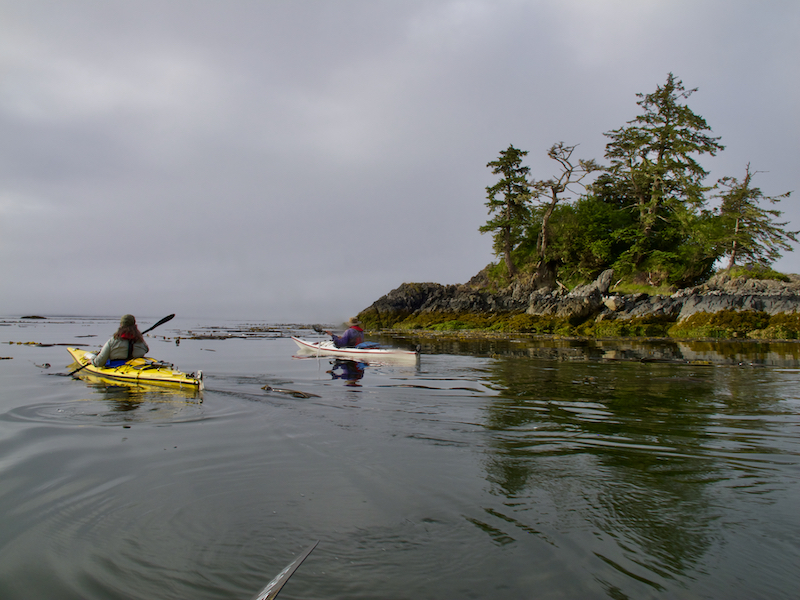
Passing Jerome Island at the southeast tip of Balaklava Island with the fog obscuring Goletas Channel
We were heading for Songhees Creek, the site of a good campsite. The only issue was that high winds were forecast to come up from the southeast in the afternoon or evening, which would blow straight onto the beach. Along with the winds, heavy rains were also in the forecast. On arrival at Songhees and after a short break, we made the final decision to cut the trip short by a couple of days and head on in to Port Hardy that day. Another group of paddlers from Vancouver, arriving here at the same time, made the same choice.
We continued down the coast in beautiful sunshine and sparkling waters, eventually turning up the passage behind Duval Island near the entrance to Hardy Bay. We stopped briefly for a quick break and a few snacks before carrying on. We set course across Hardy Bay towards Bear Cove. Bear Cove is the location of the BC Ferries terminal for ferries heading up the inside passage as well as the location of public dock and boat ramp.
As we crossed Hardy Bay we could see a Coast Guard ship at anchor in Bear Cove. The vessel remained stationary for most of our crossing, but just as we getting close, we realized that the ship was slowly starting to move directly towards us. Fortunately, we passed uneventfully. At Bear Cove there is a large boat ramp for power boaters and an older, smaller ramp for kayakers, making for an easy take out.
Heidi and Dugald took care of unpacking the boats while I hiked the 2 kilometers down the road to the Wildwoods Campsite where the truck was parked. After a quick cleanup and some lunch it is was on the road for the 6 1/2 hour drive back to Victoria and the end of an epic trip.
Trip Map
More Kayaking Adventures
For posts on other kayaking adventures click this link: Kayaking Adventures
Photos
For more images of this trip or to purchase images, check out our sister website this link: Kayaking Around the Top of Vancouver Island

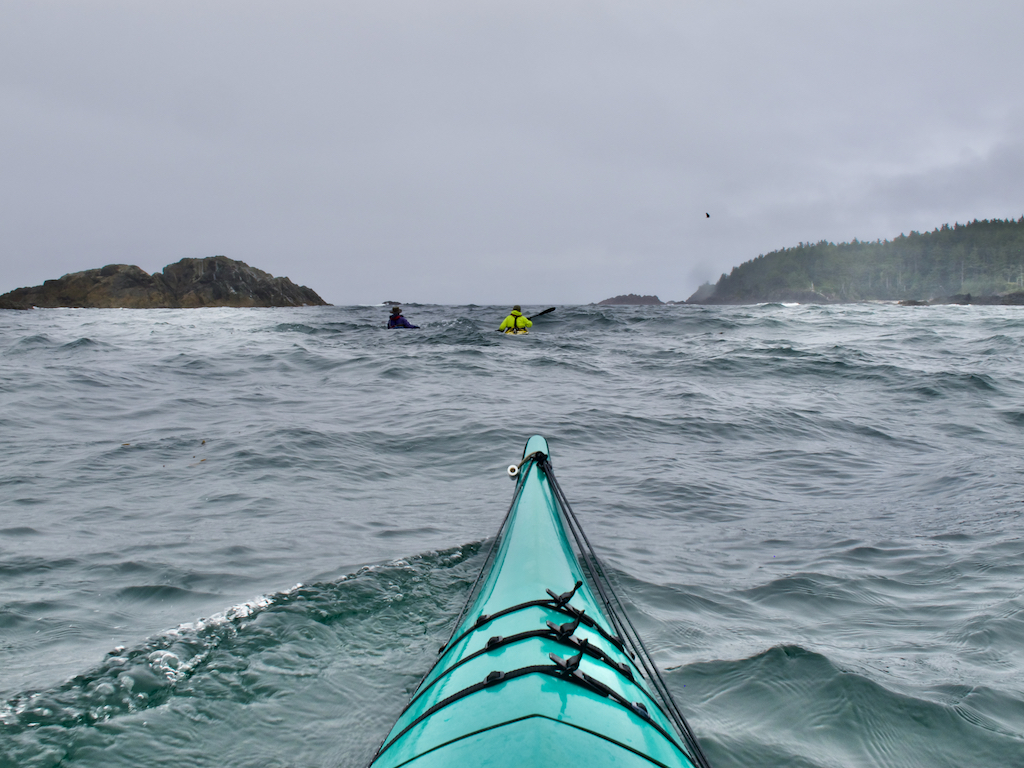
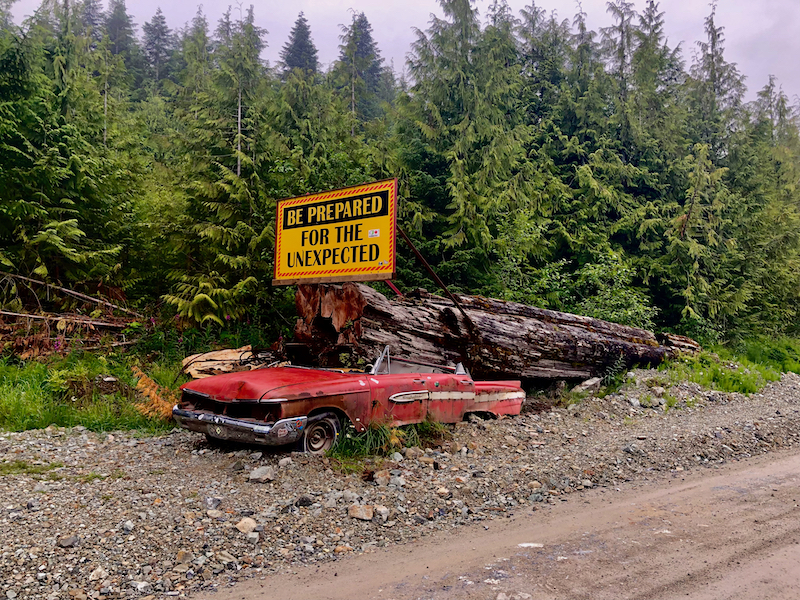
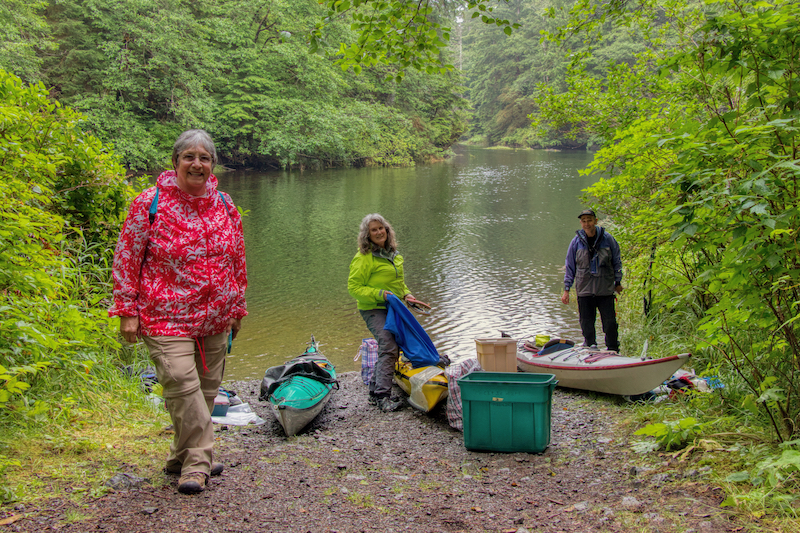
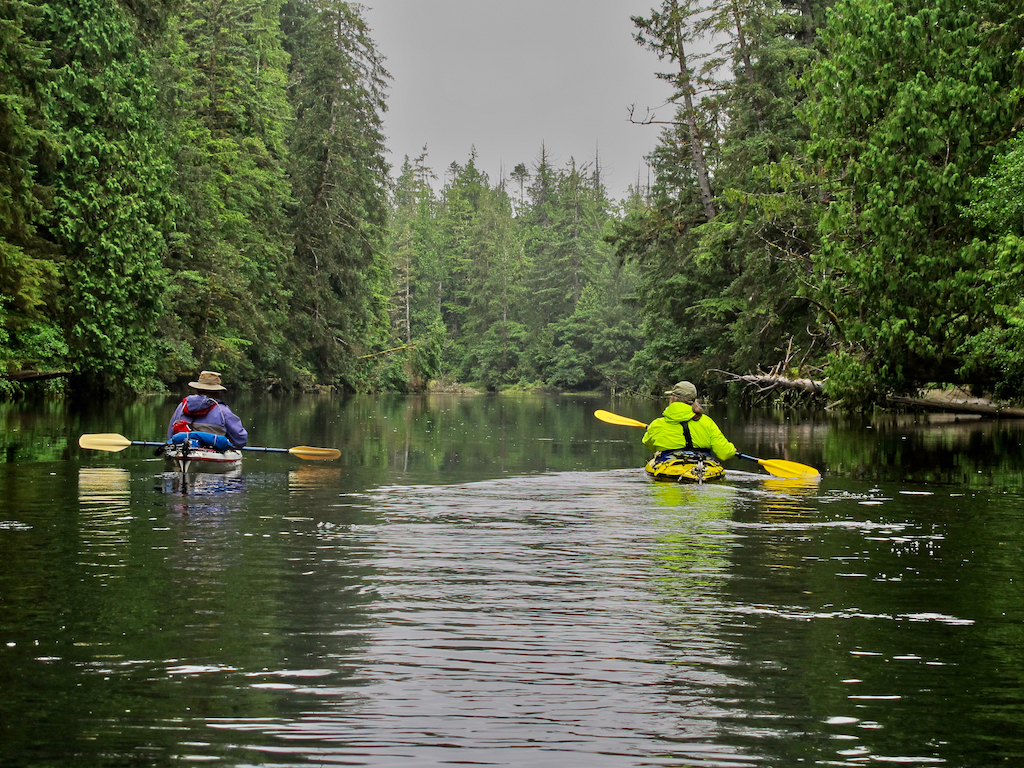
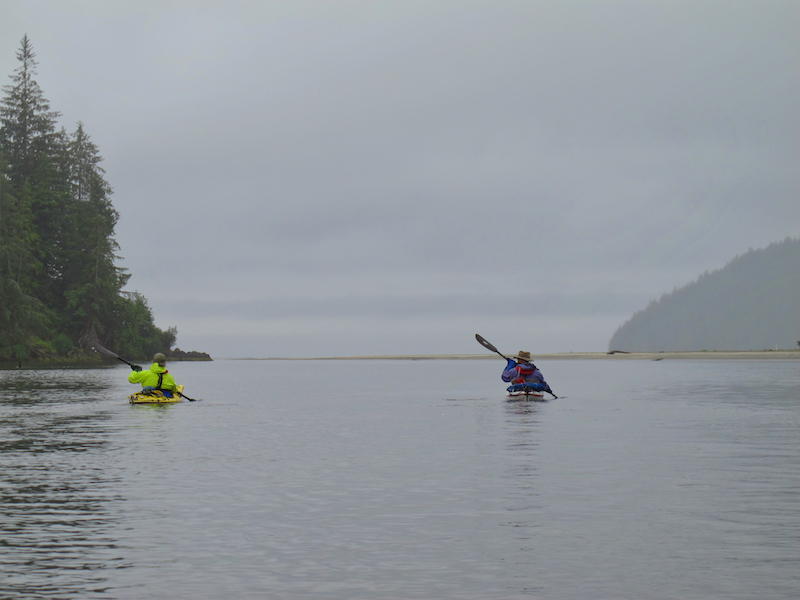
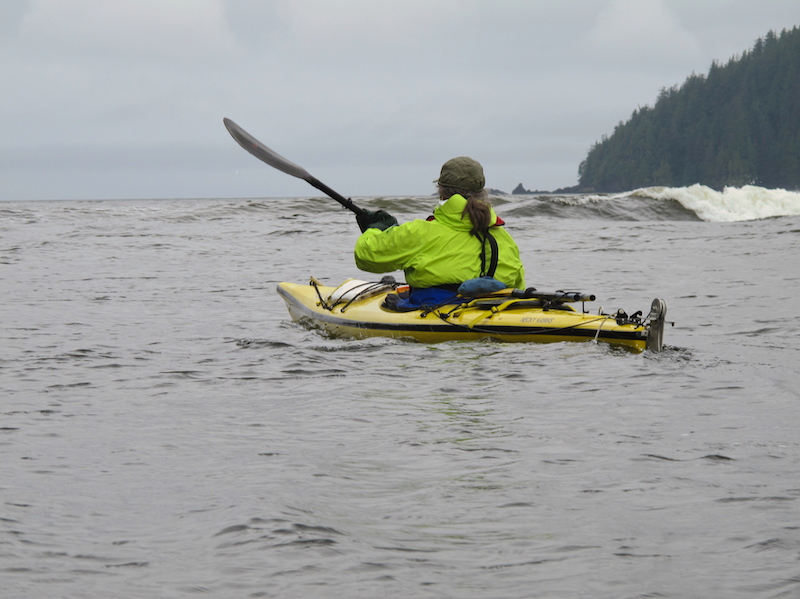
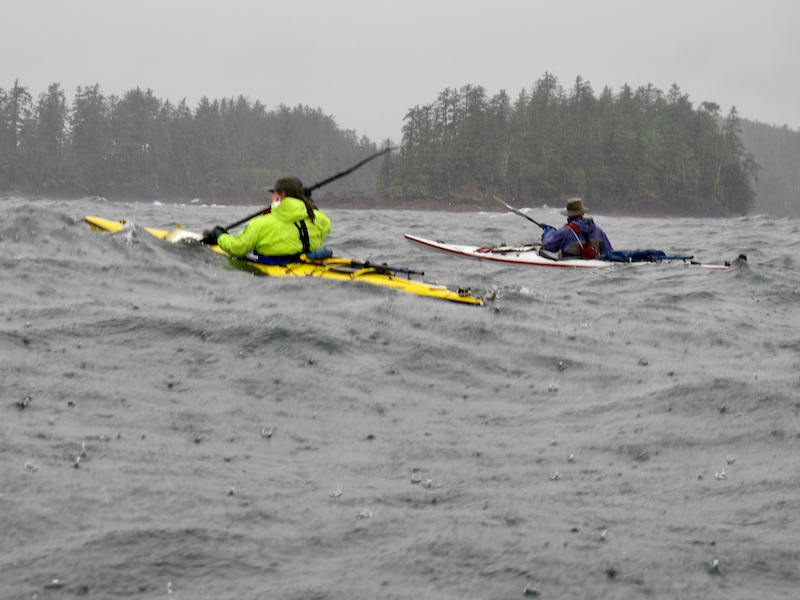
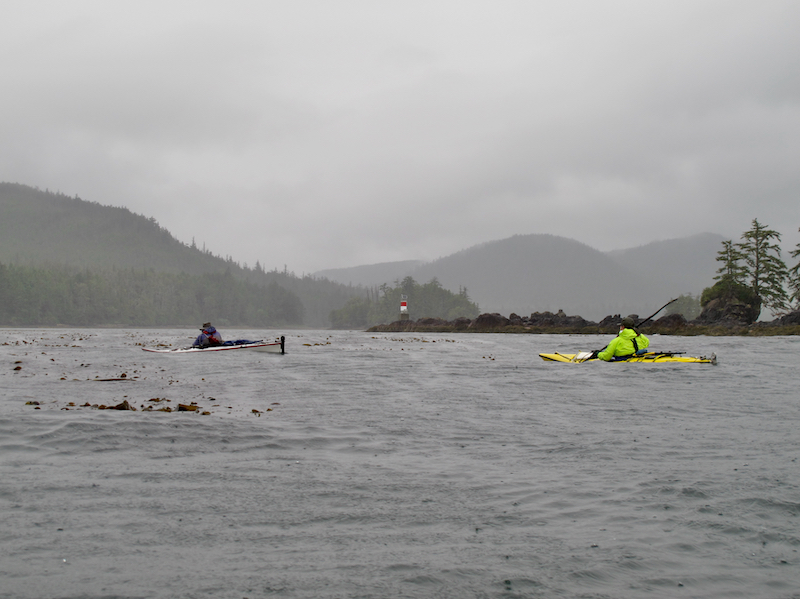
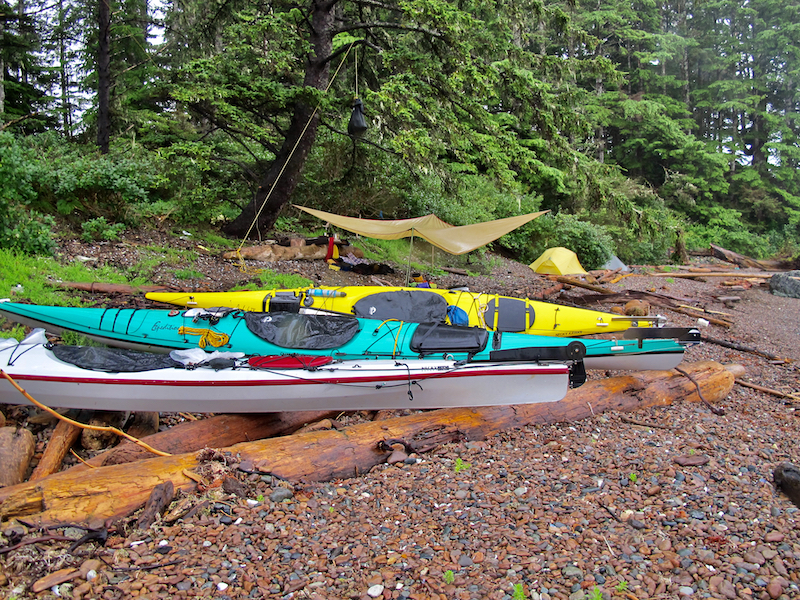
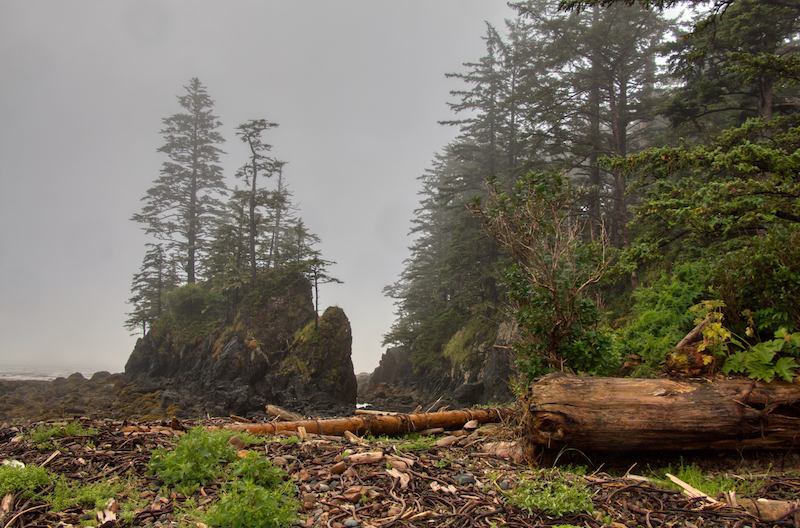
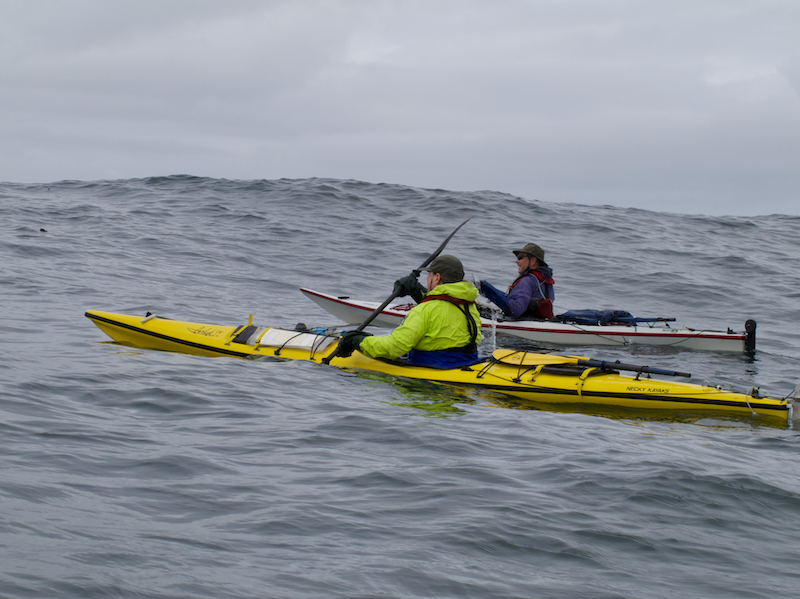
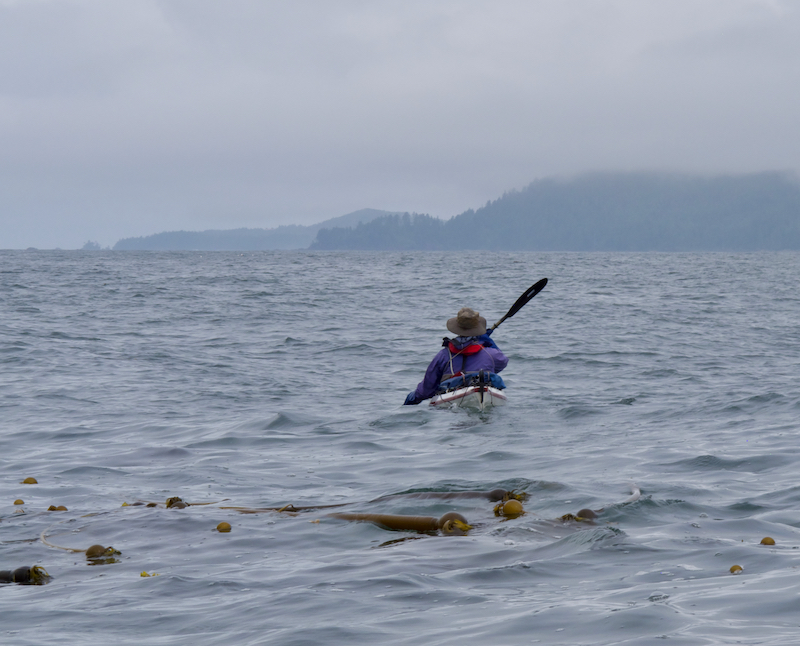
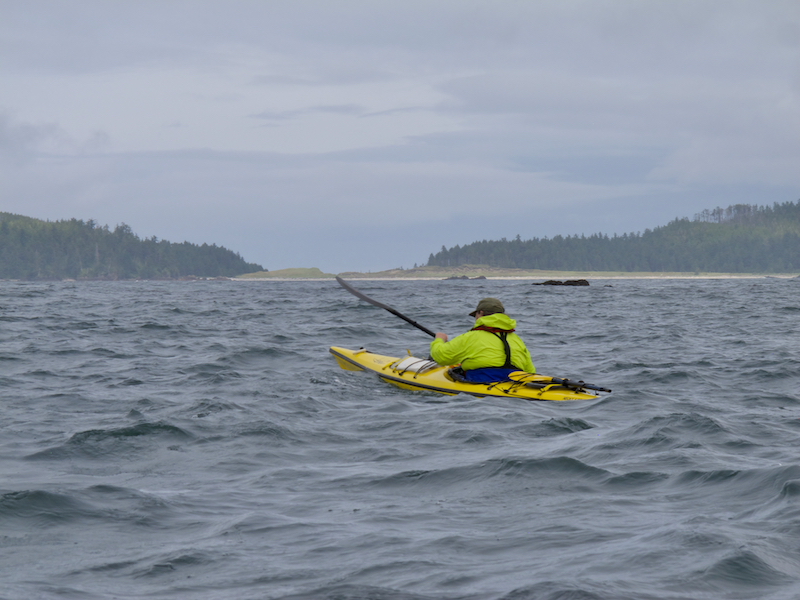
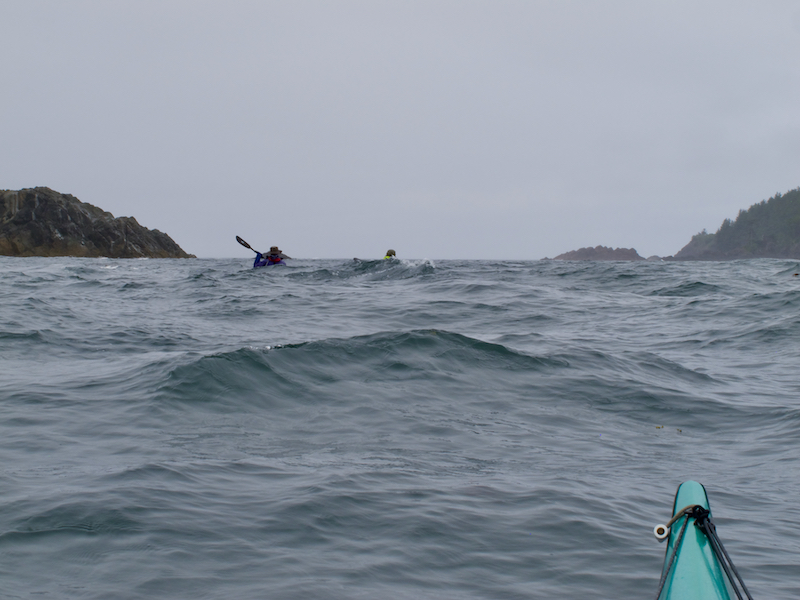
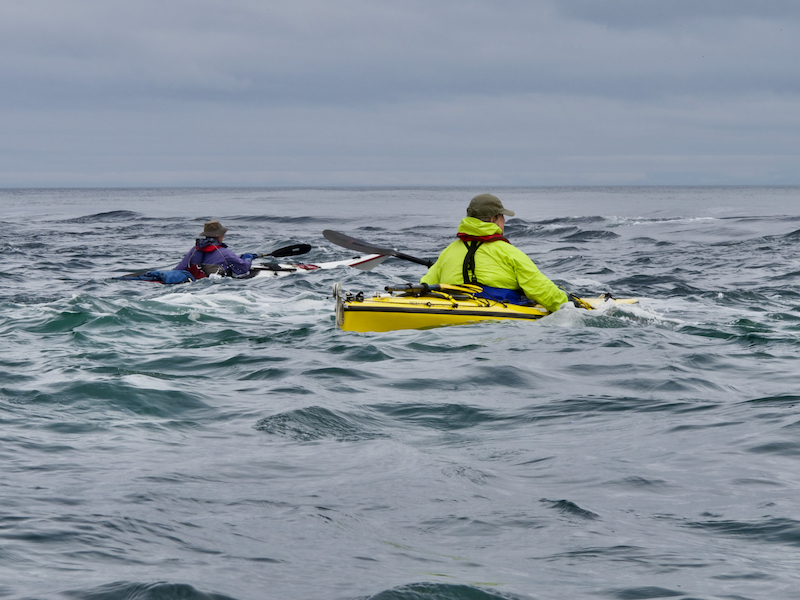
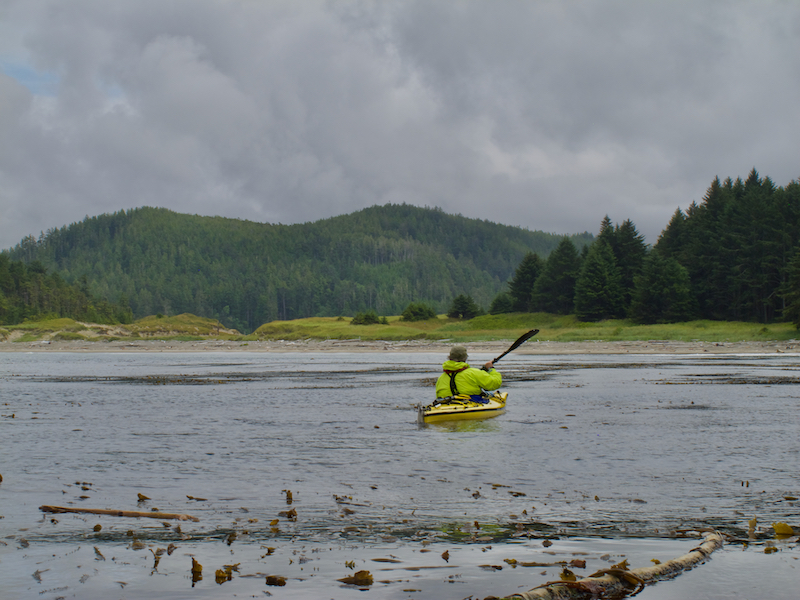
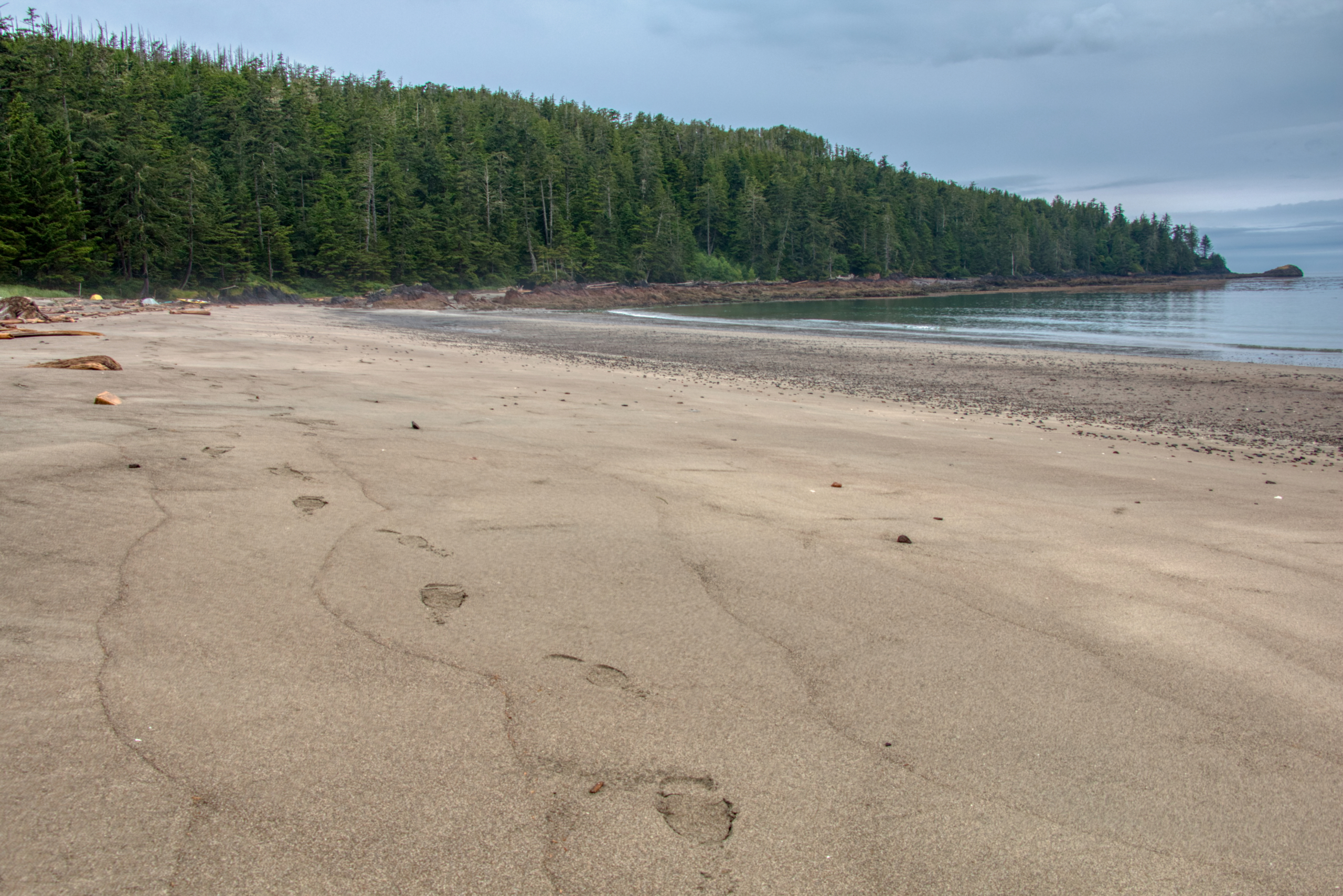
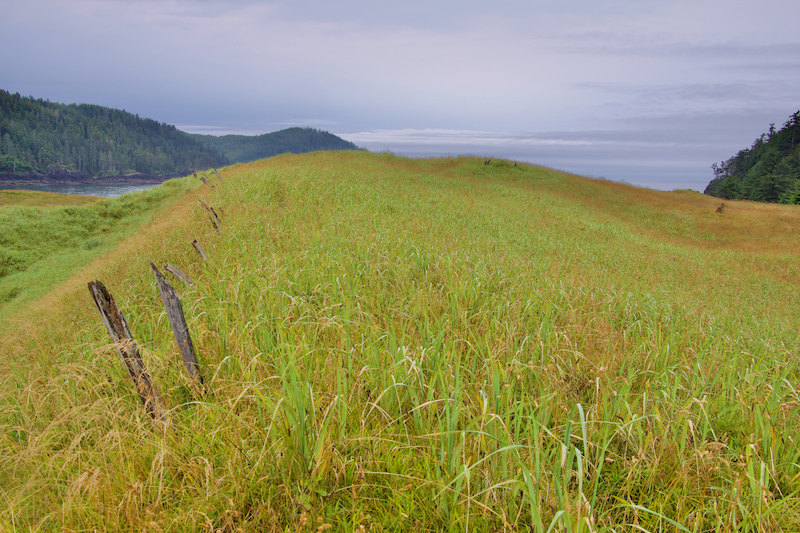
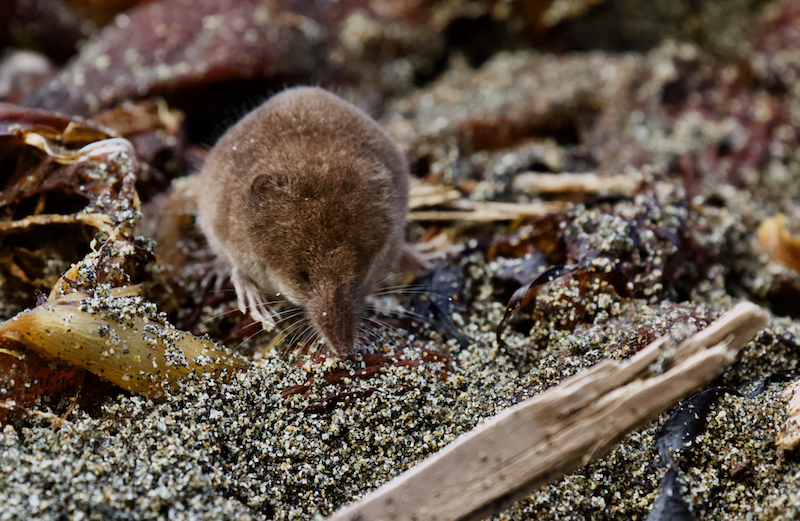
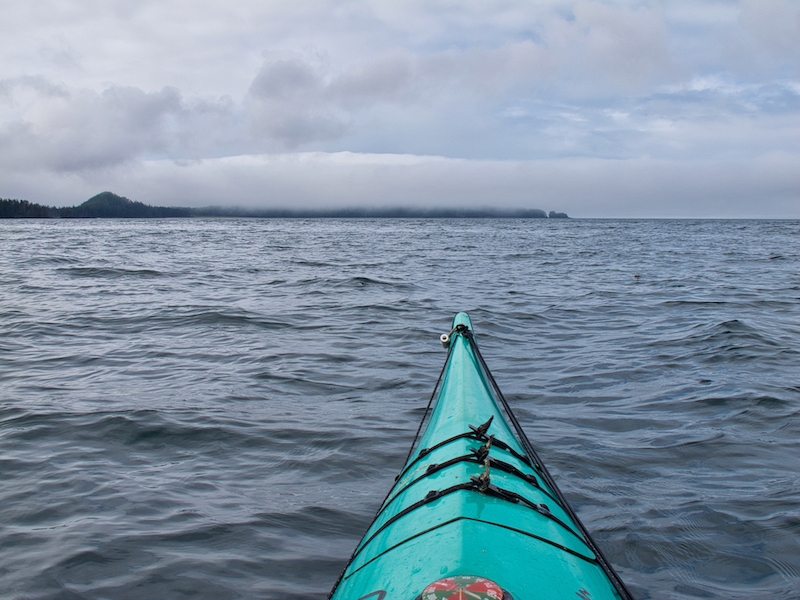
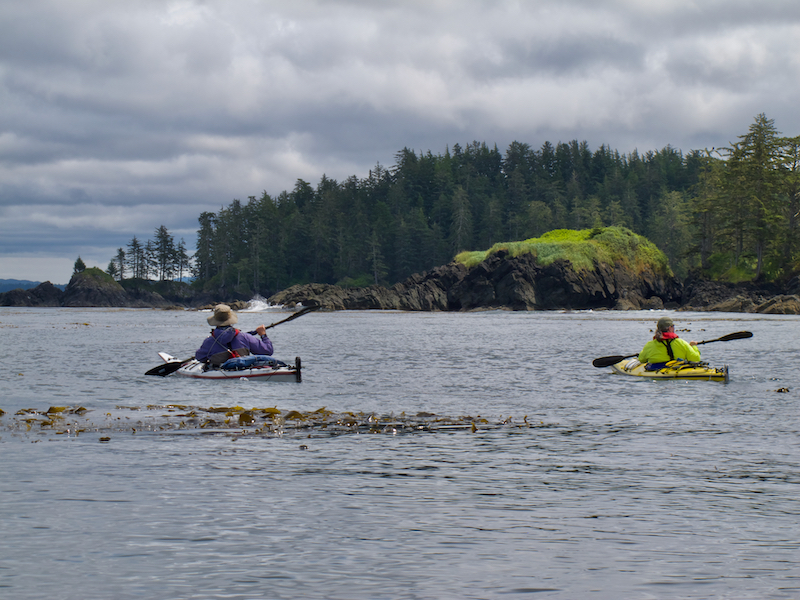
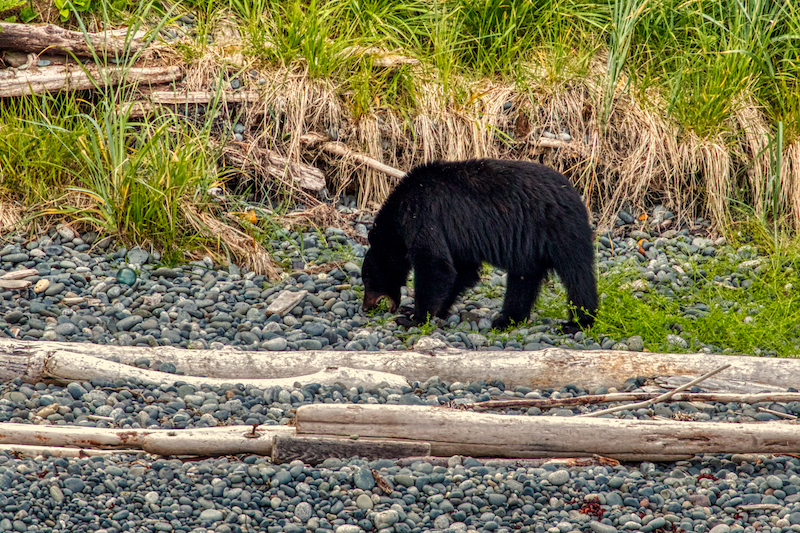
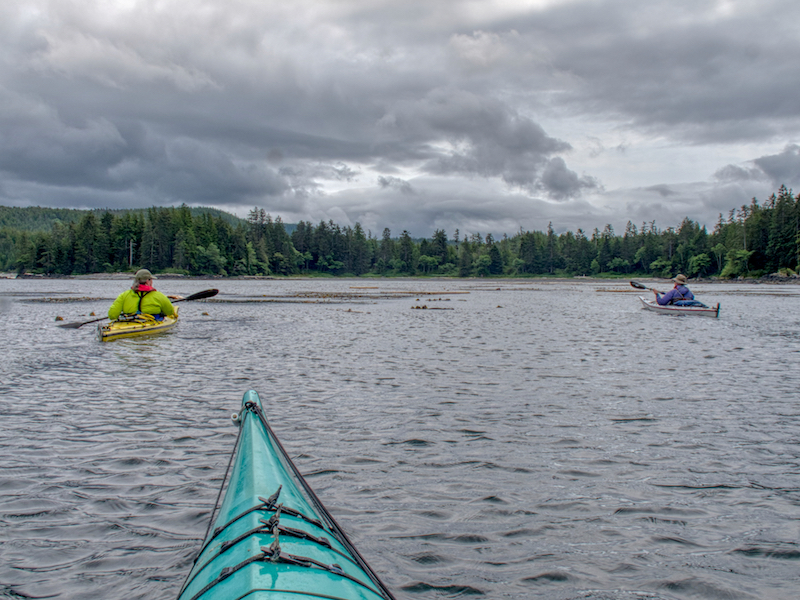
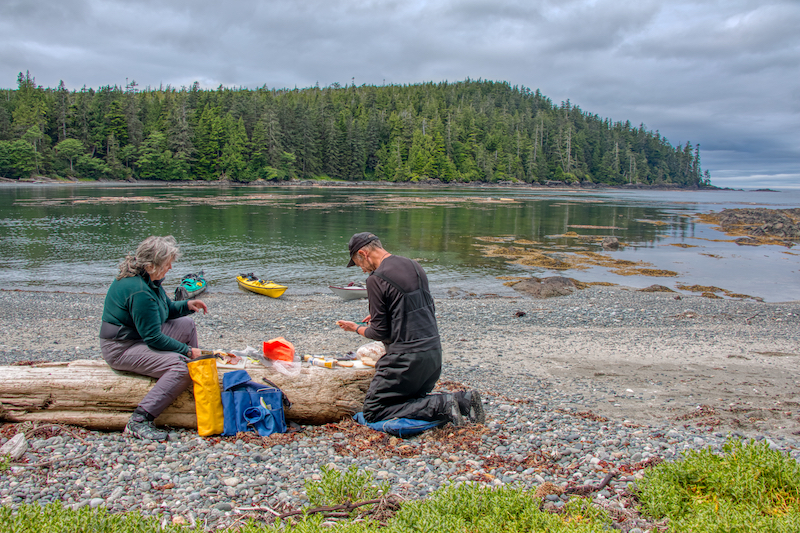

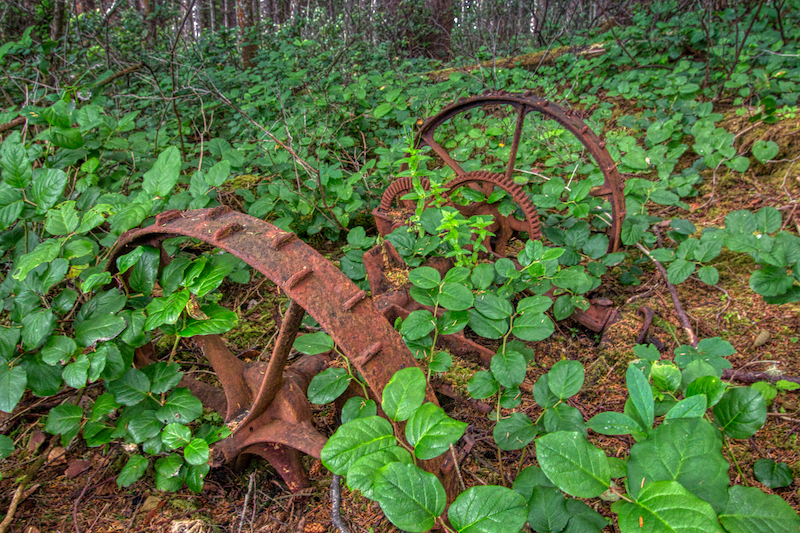
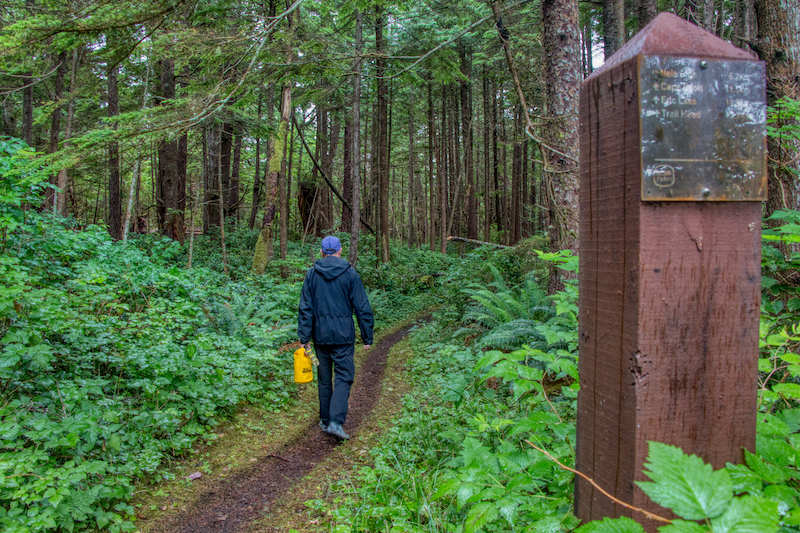
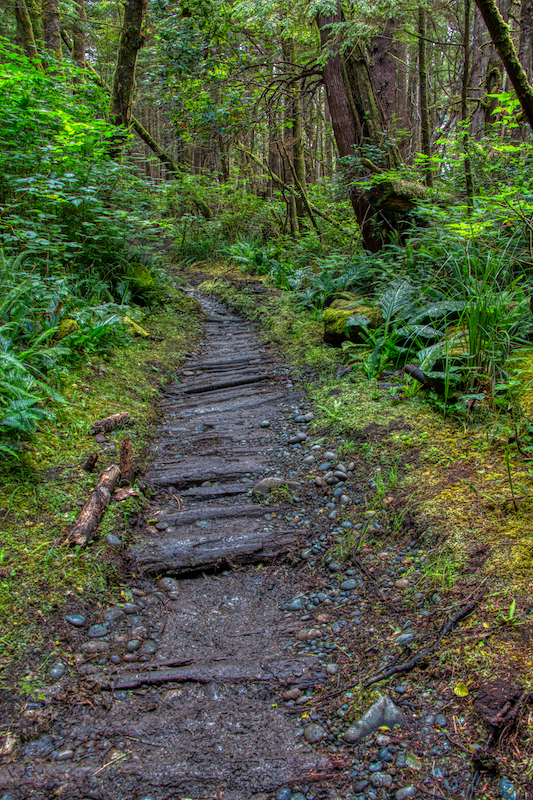
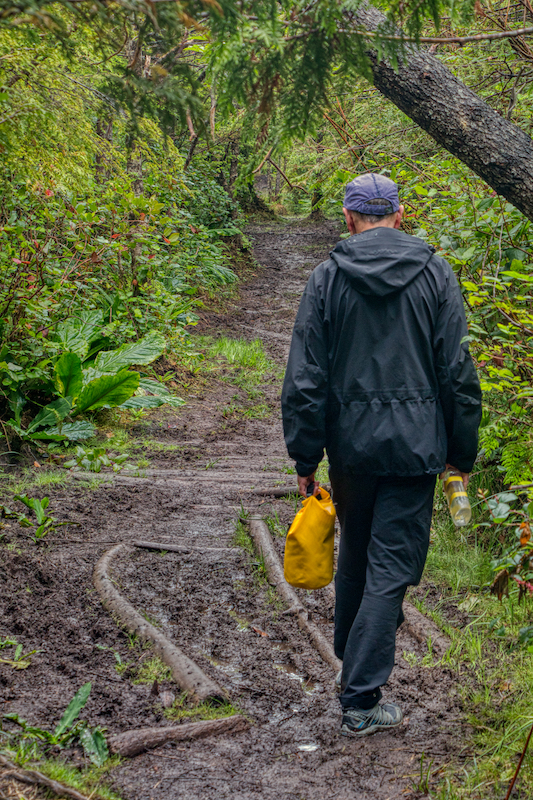
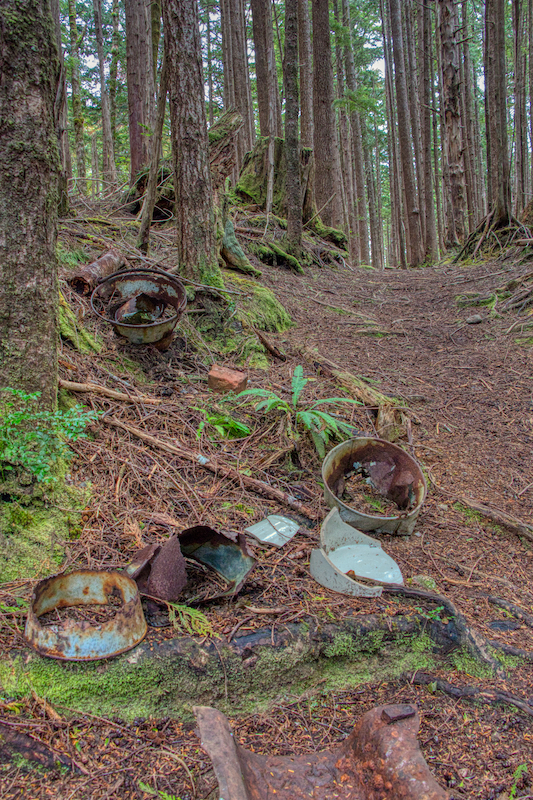
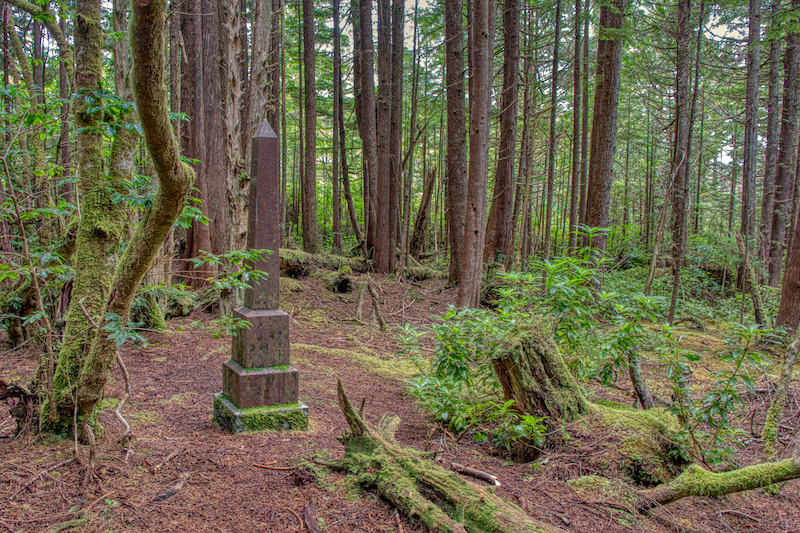
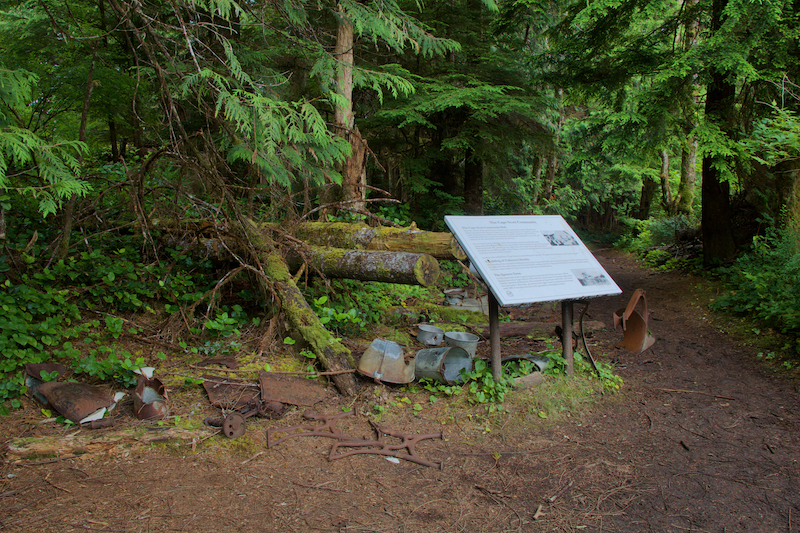
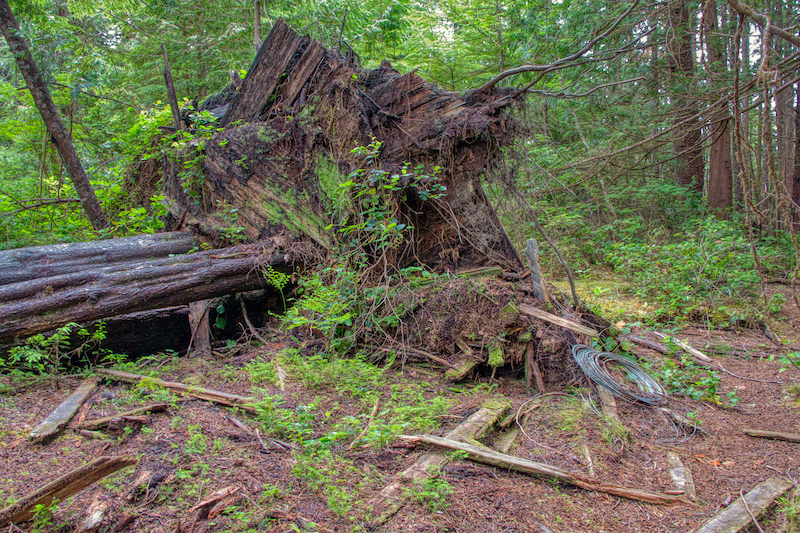
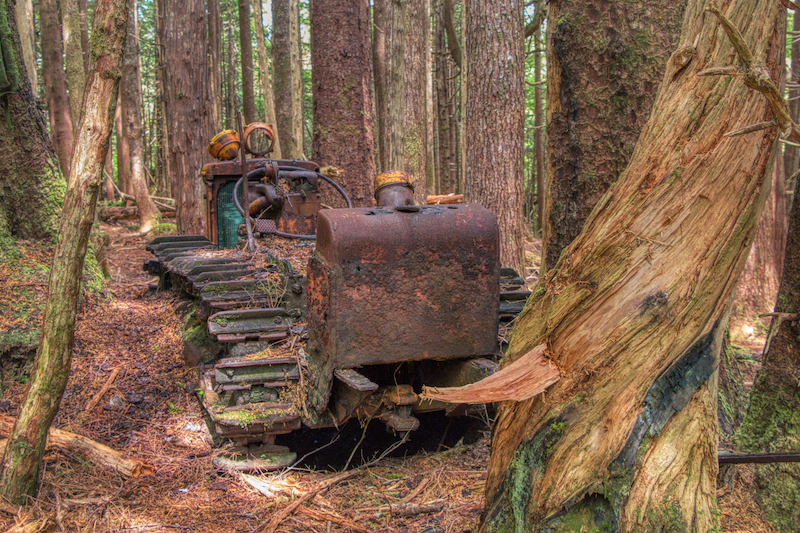
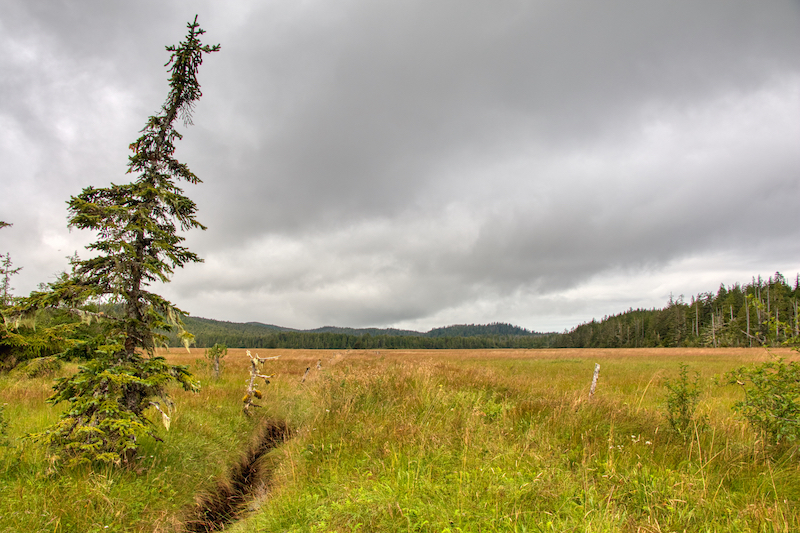
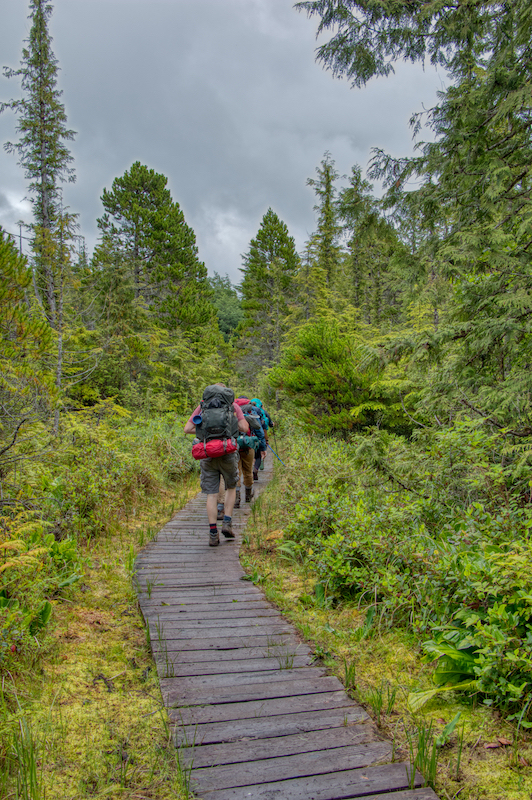
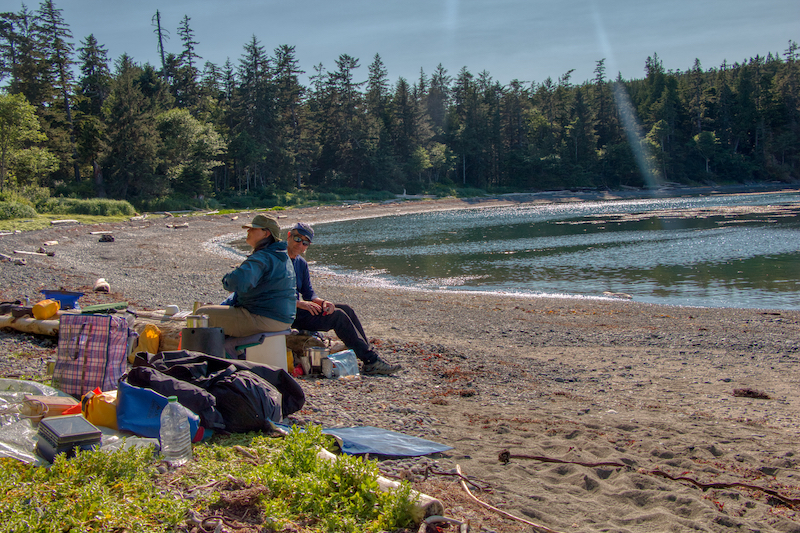
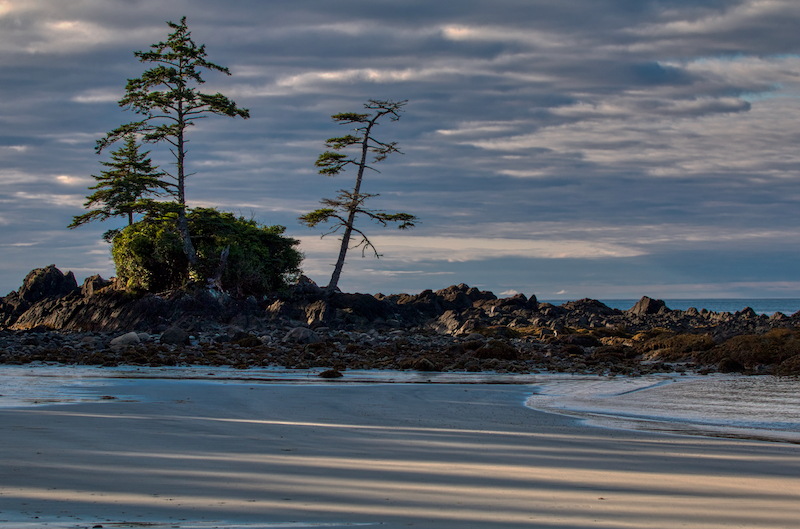
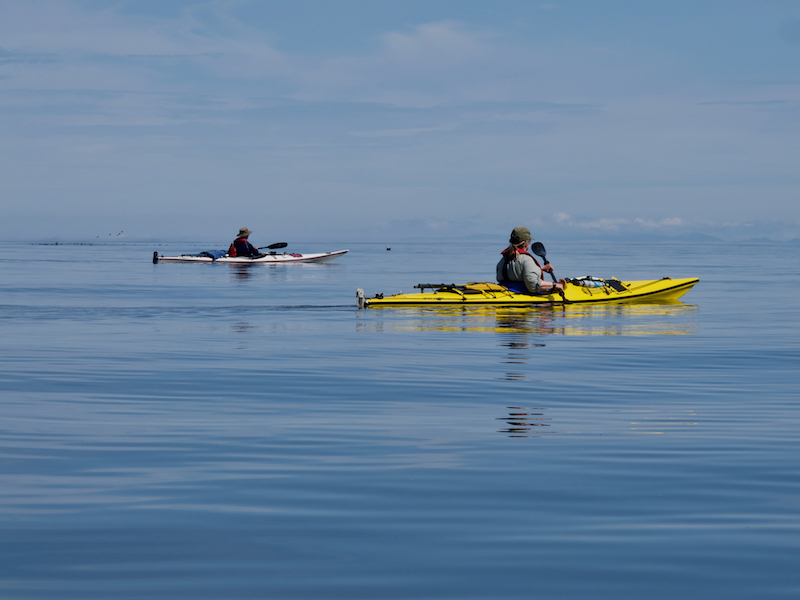
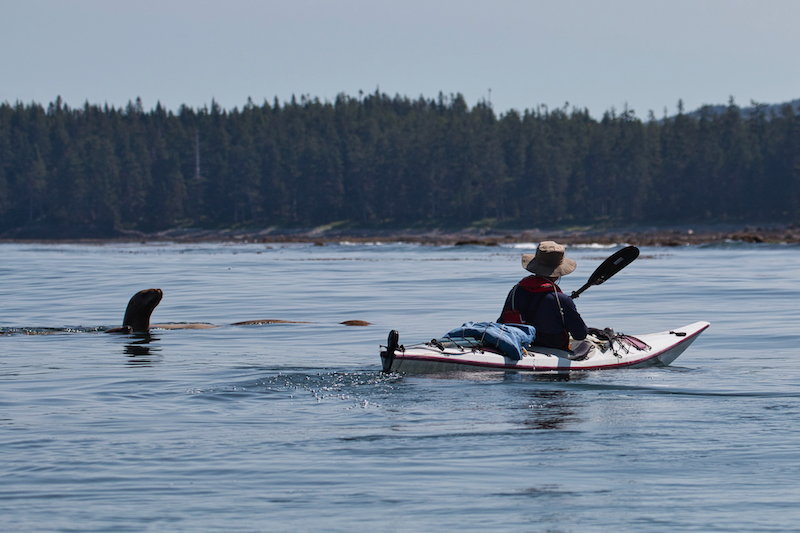
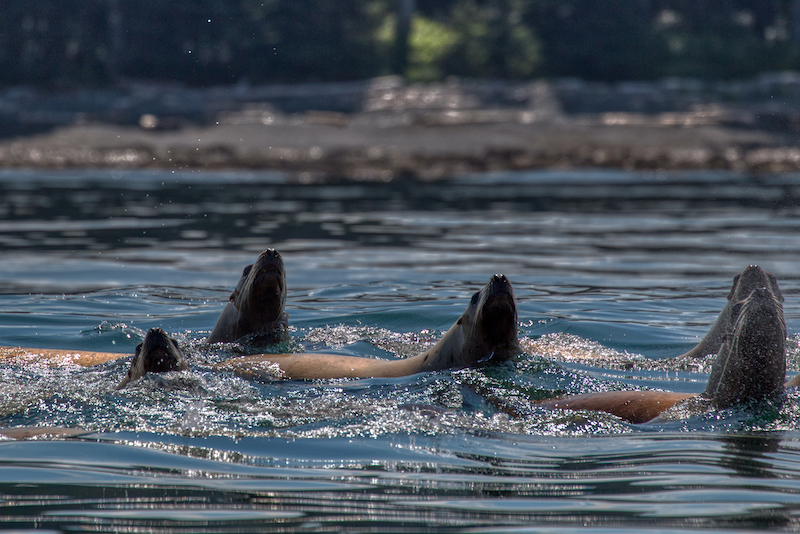
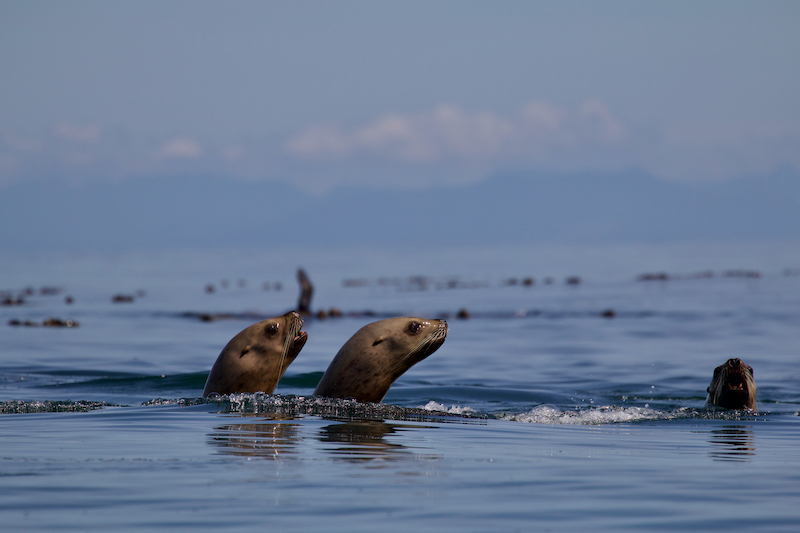
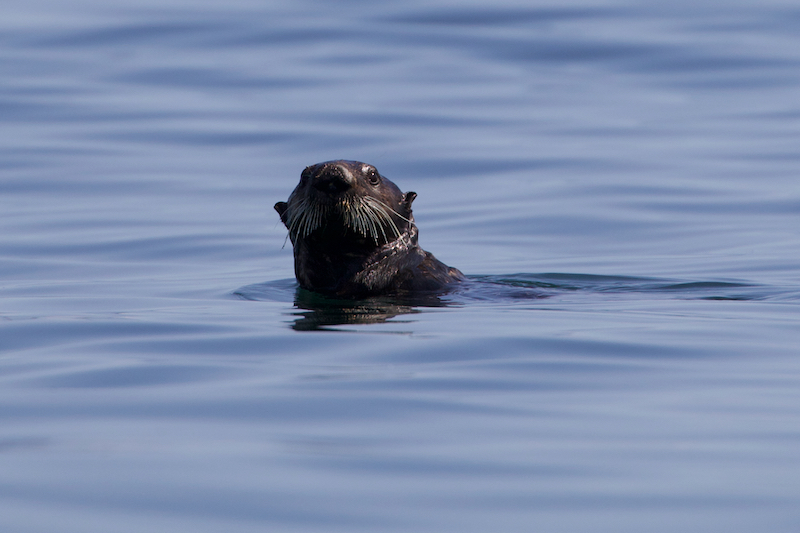
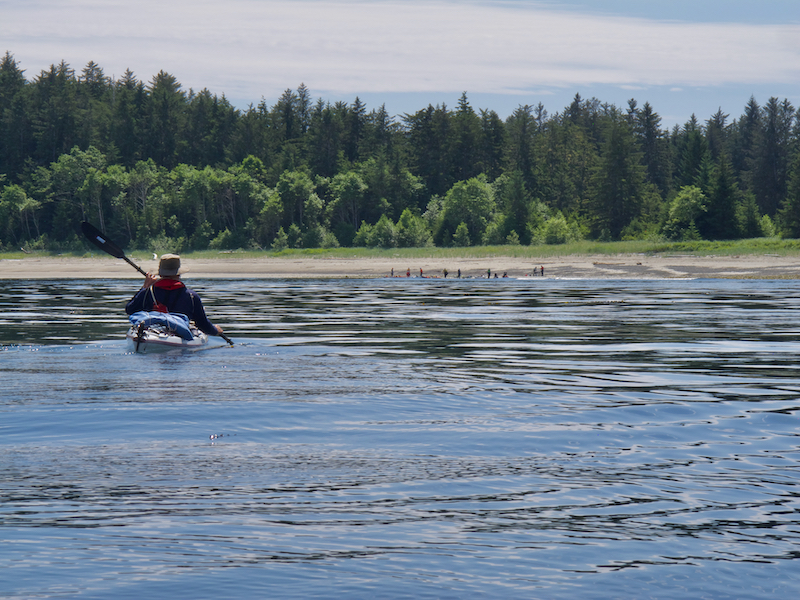
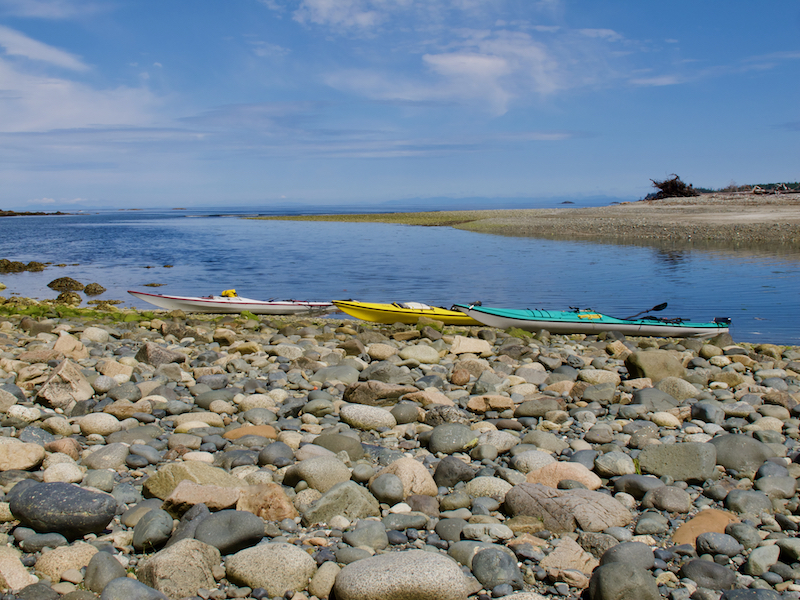
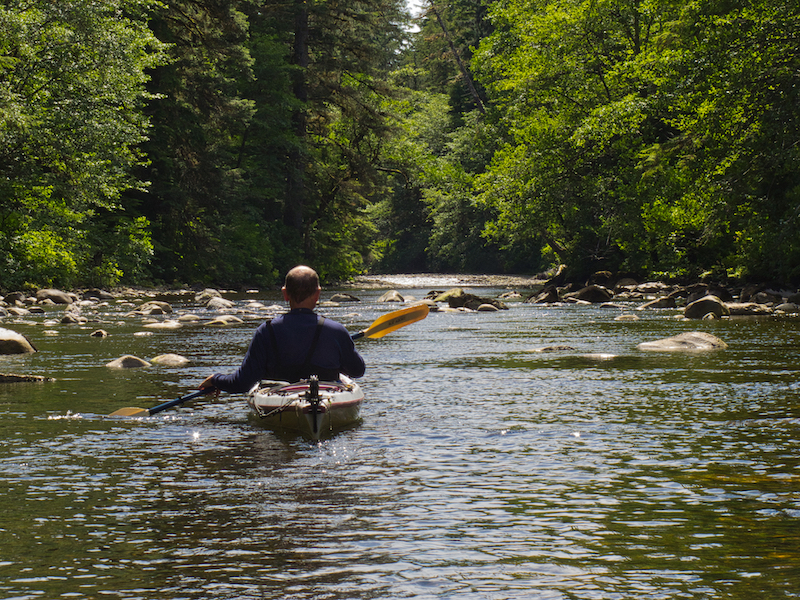
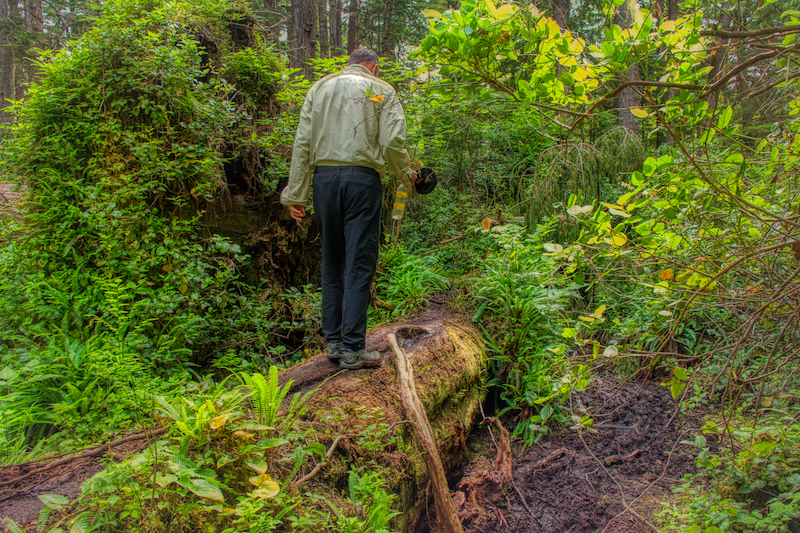
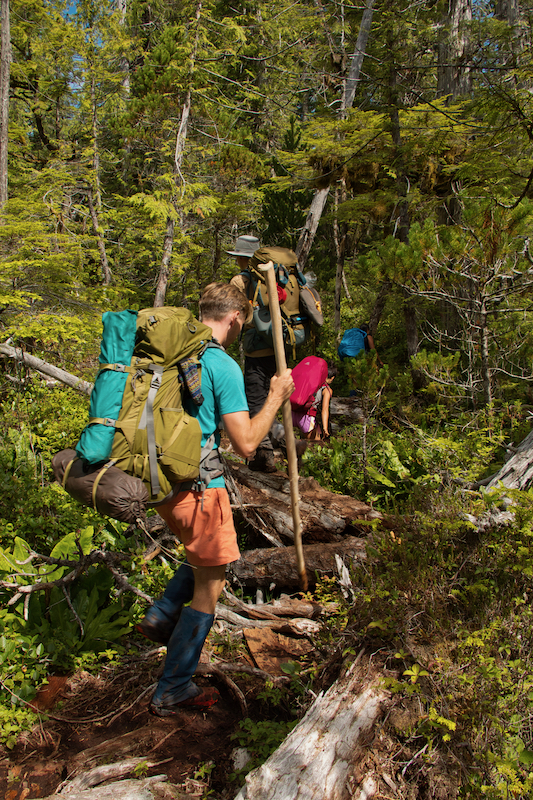
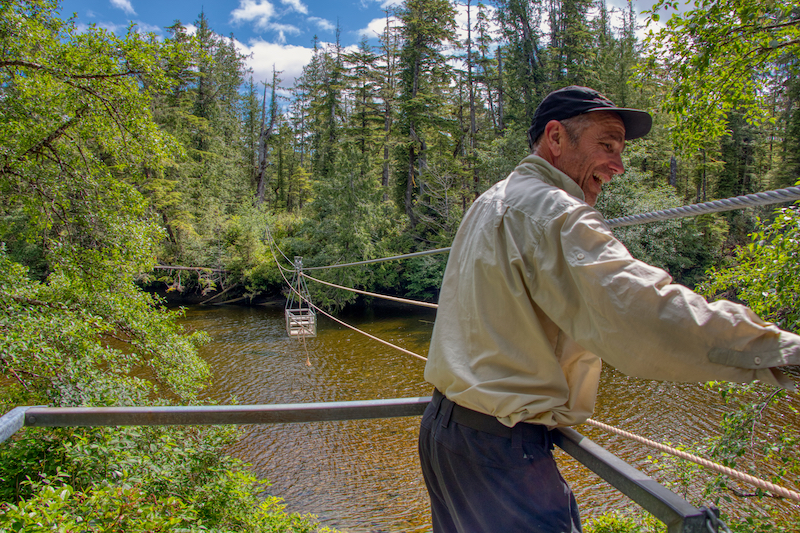
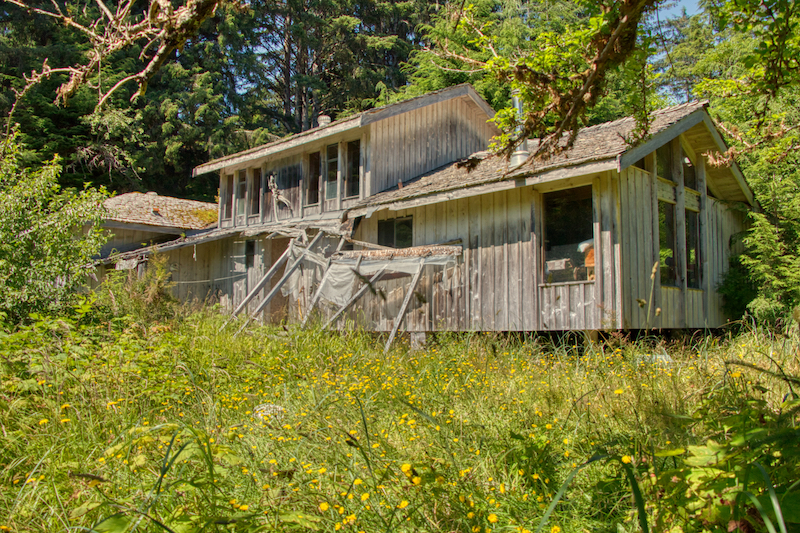
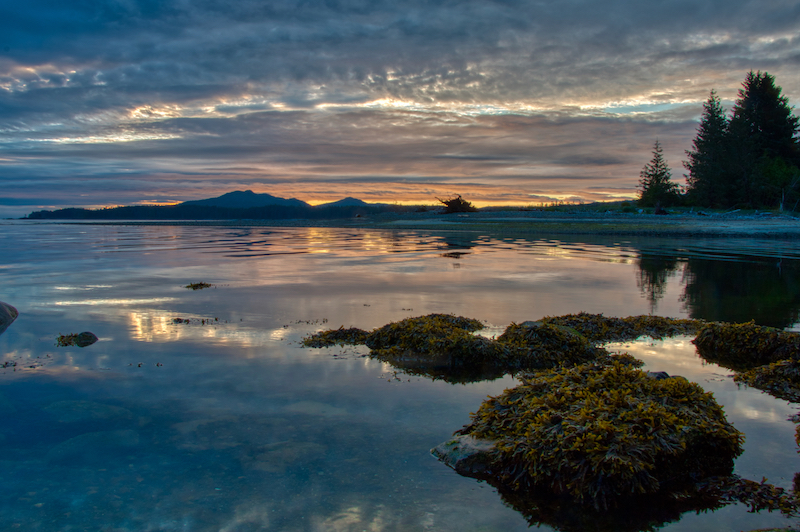
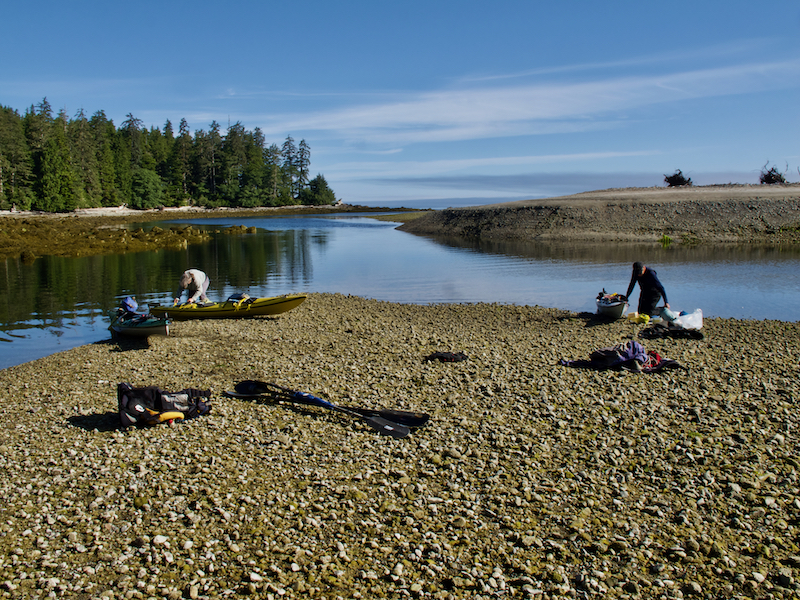
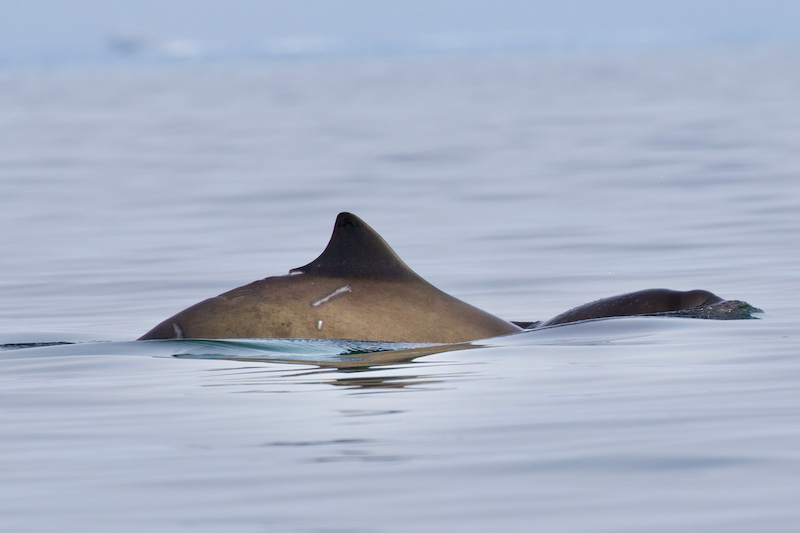
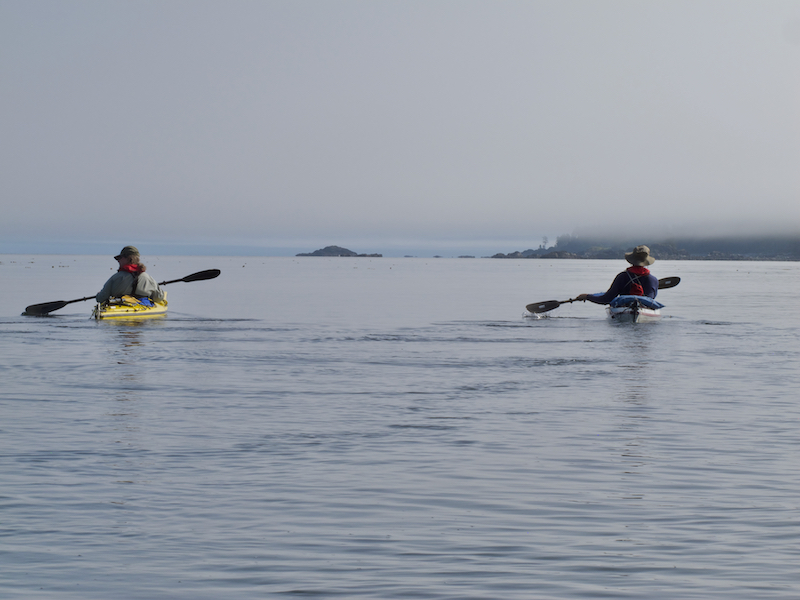
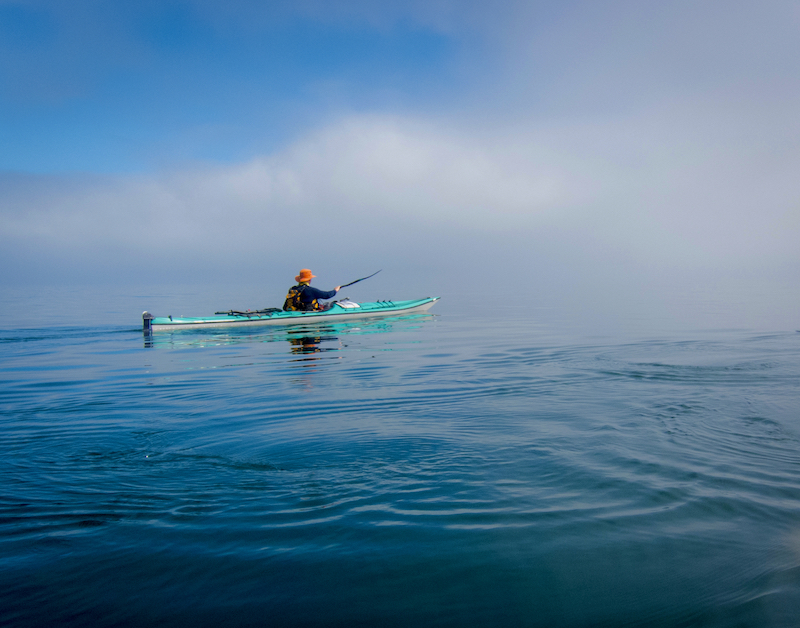
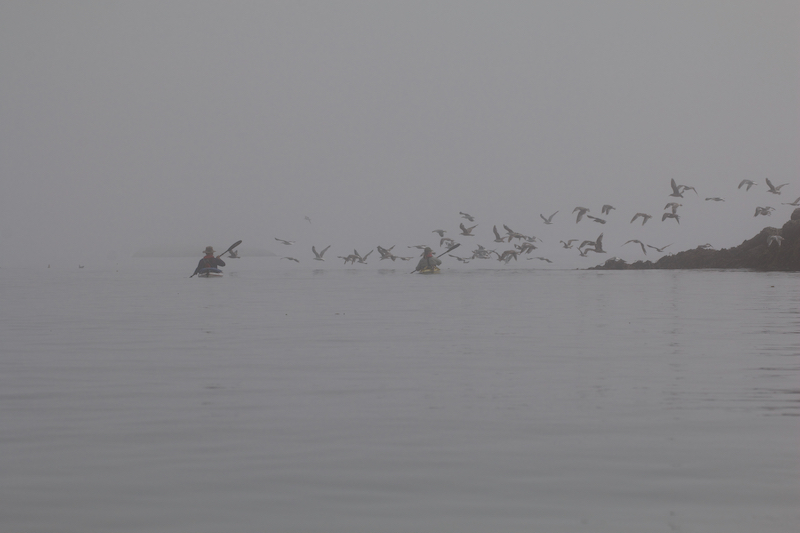
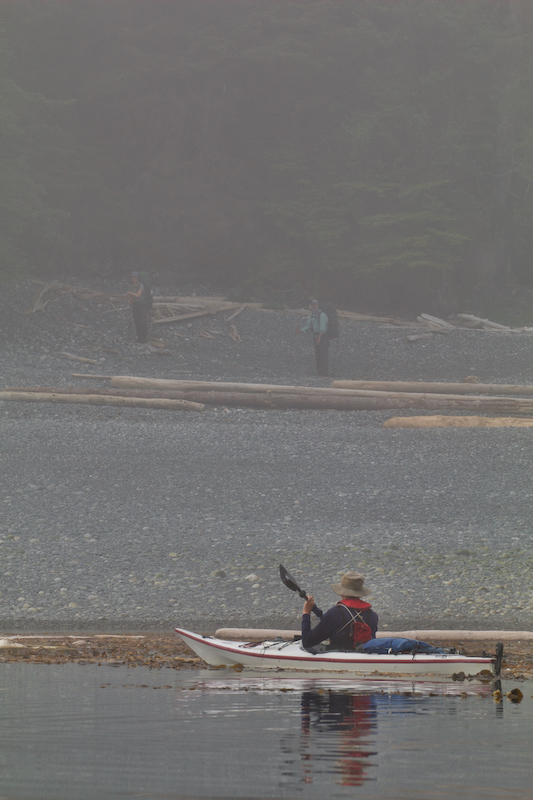
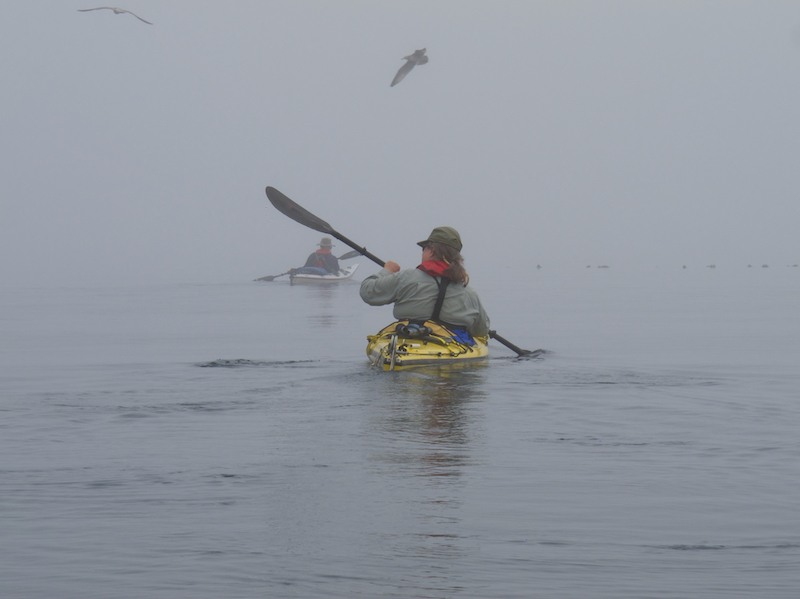
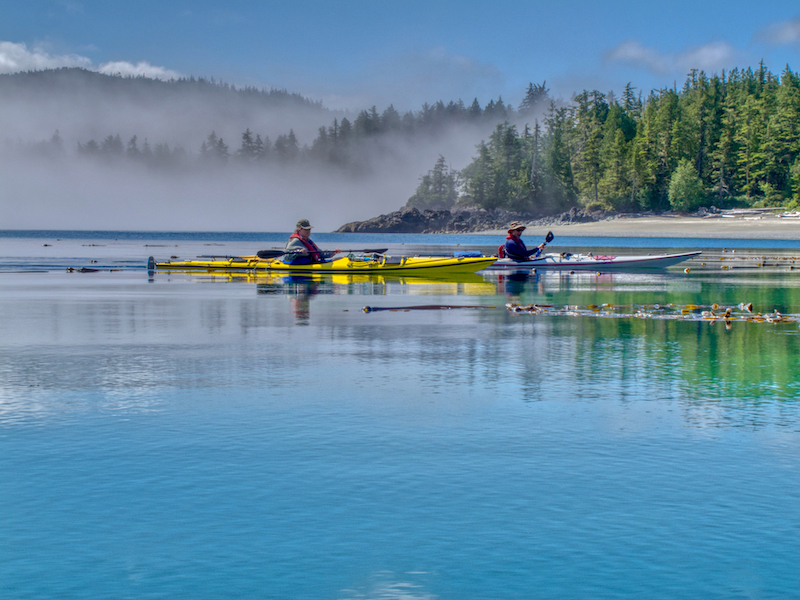
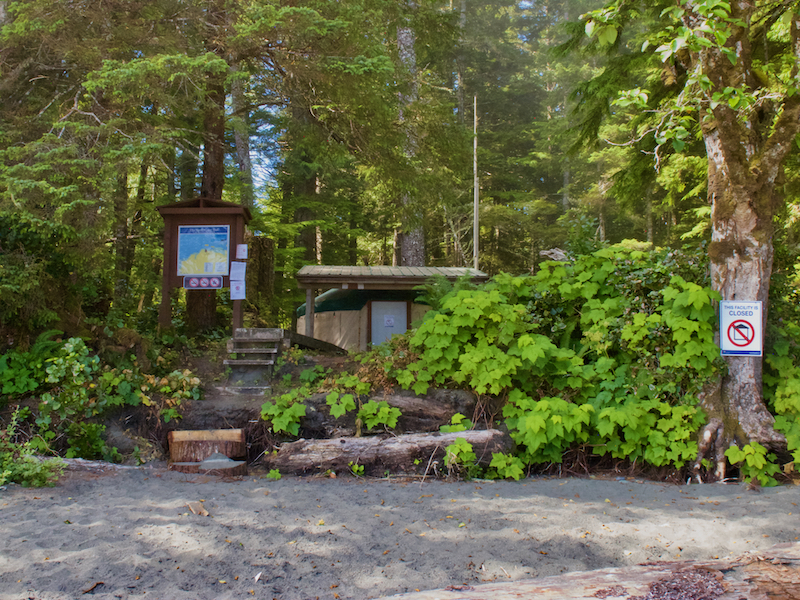
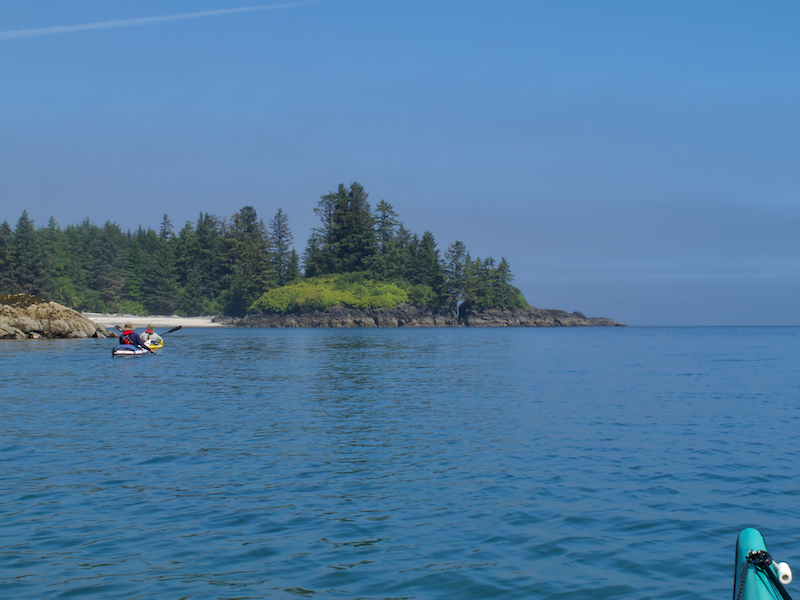
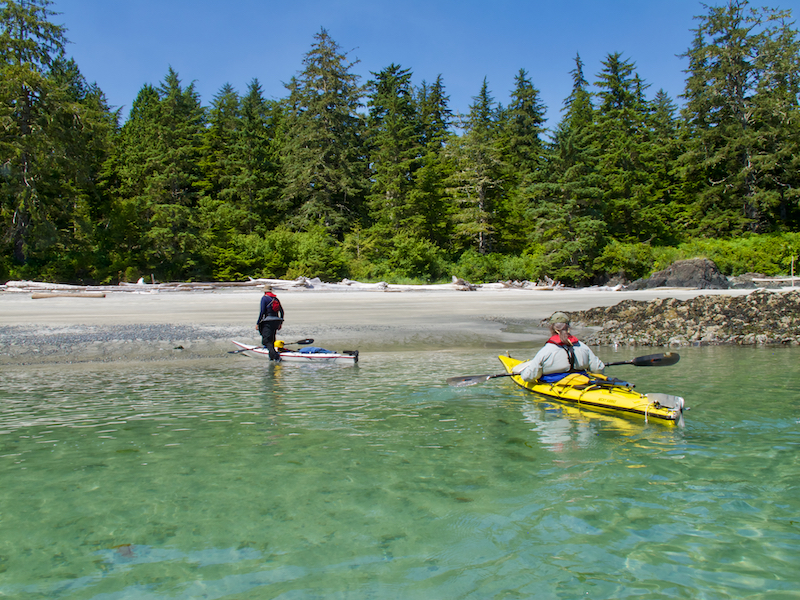
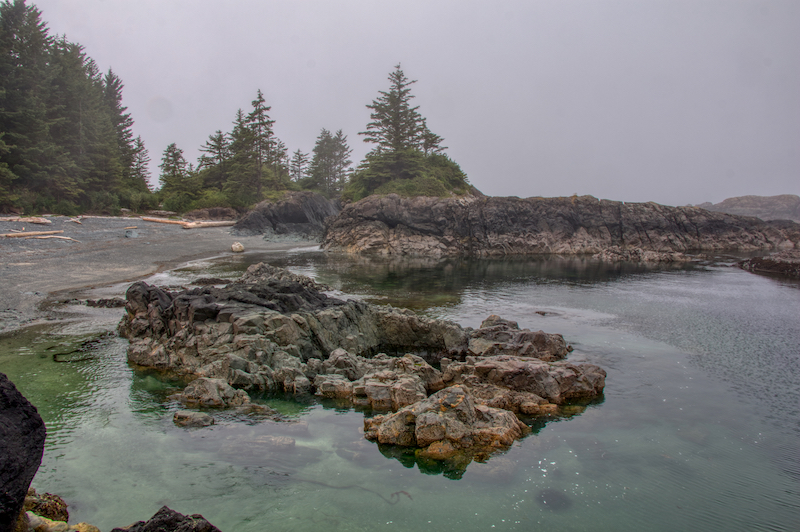
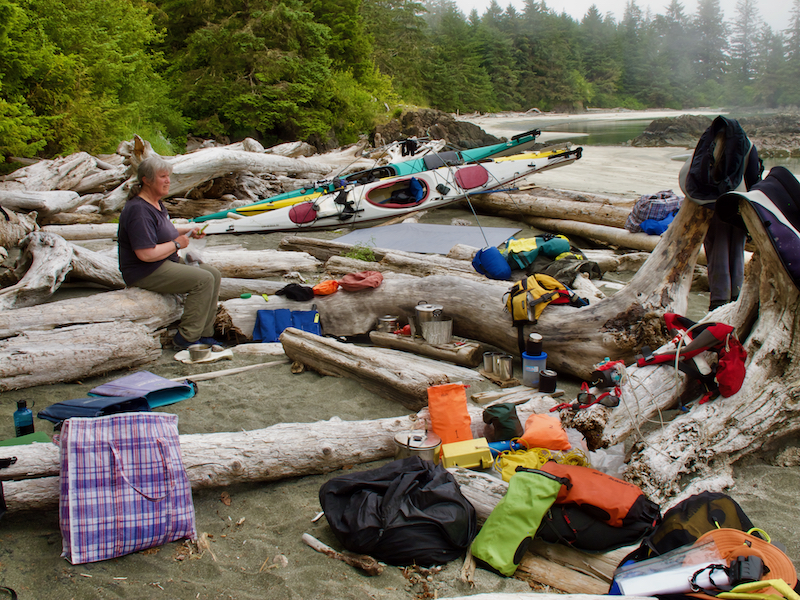
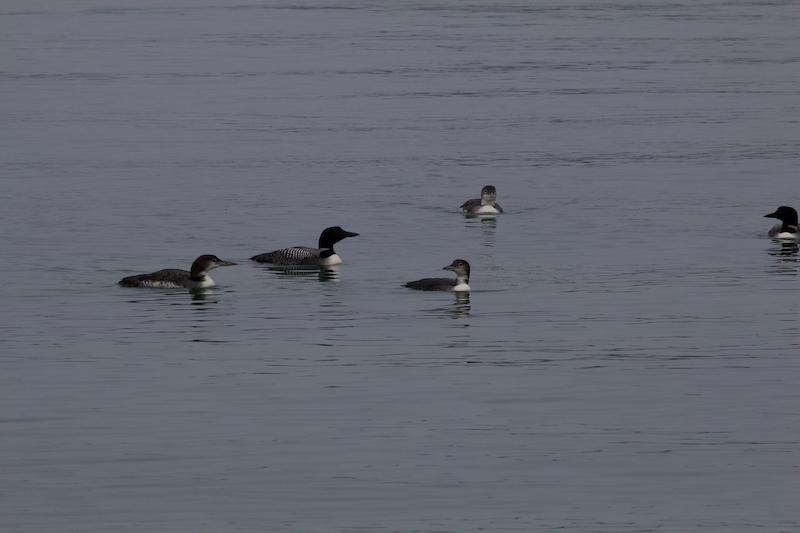
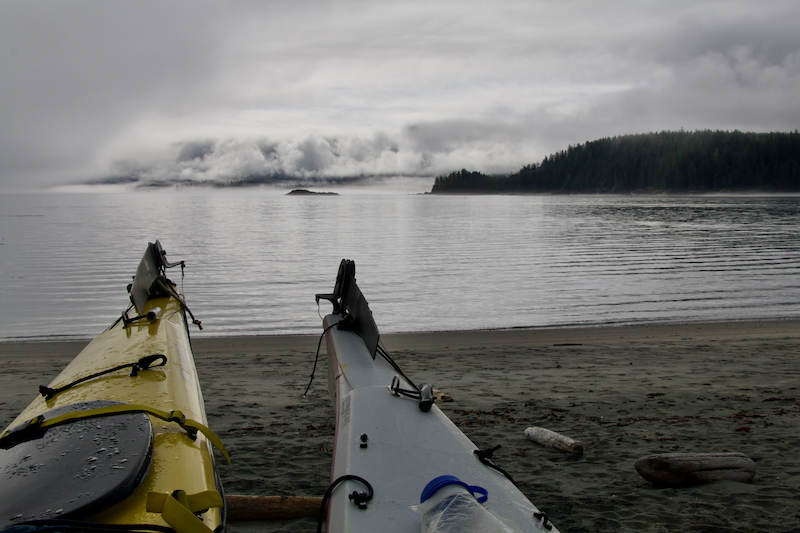
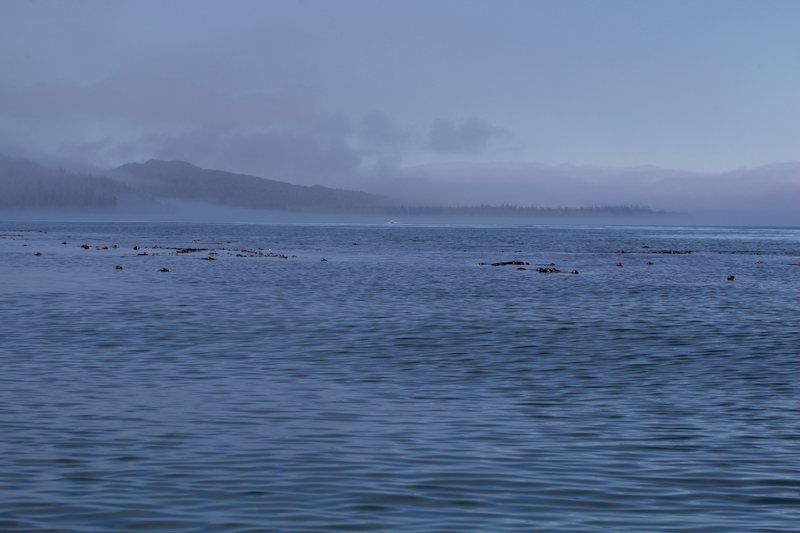
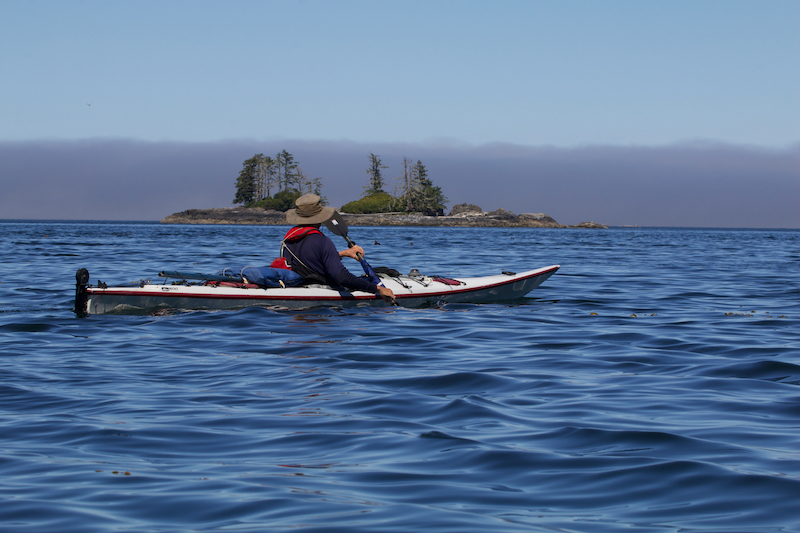
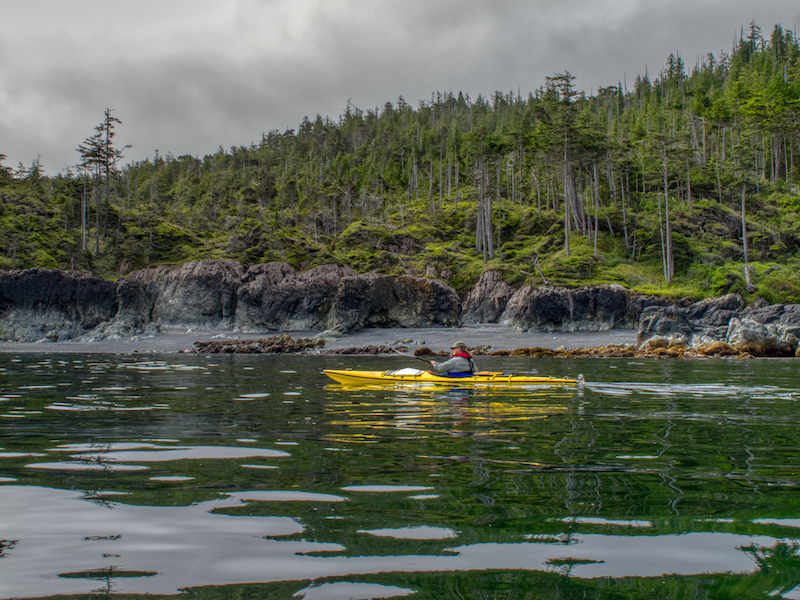
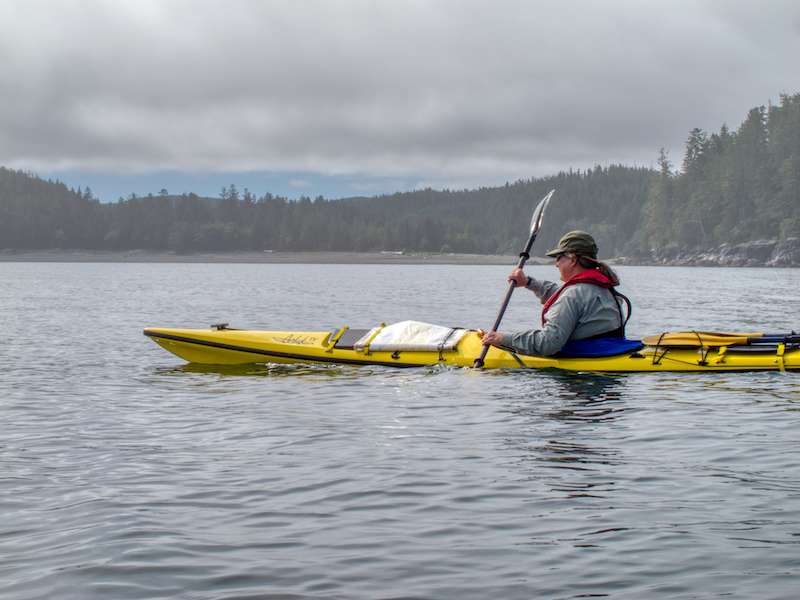
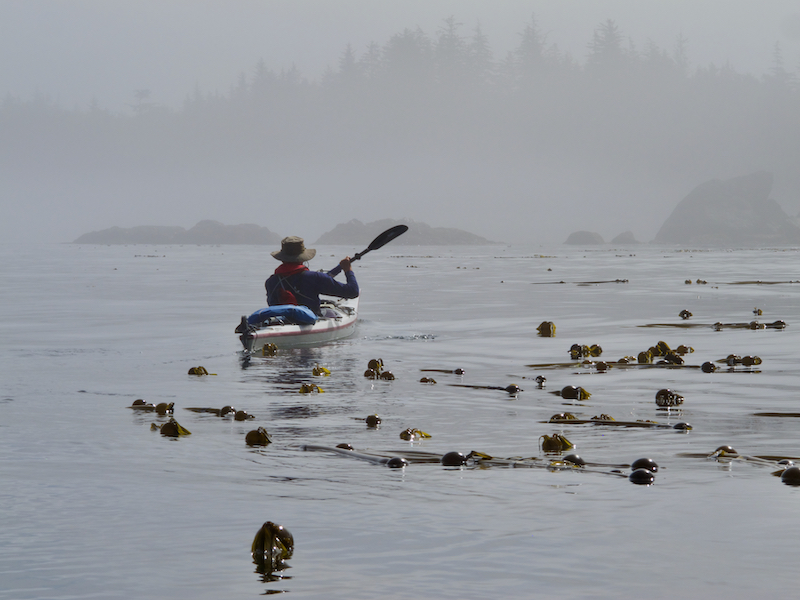
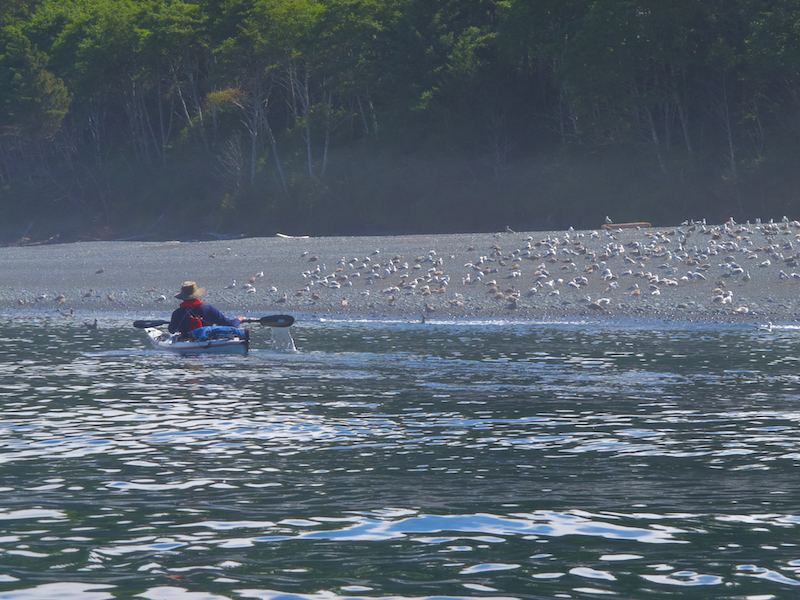
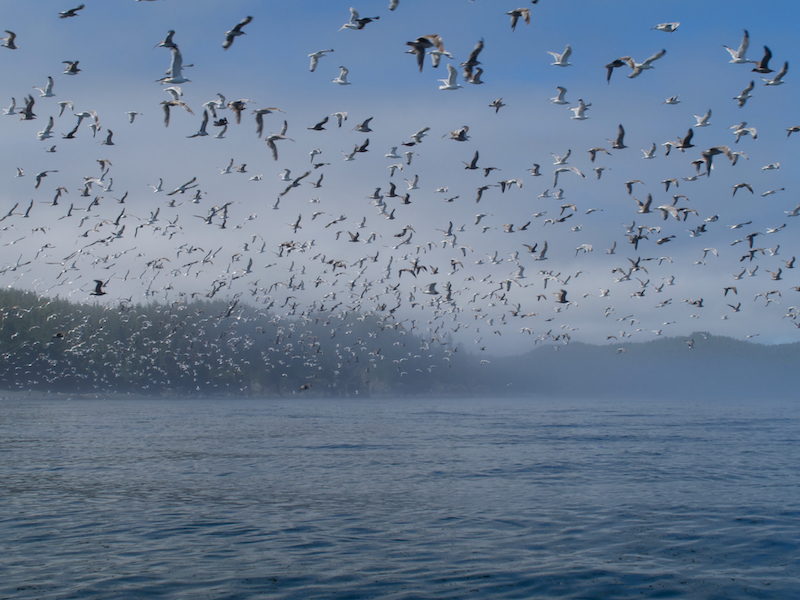
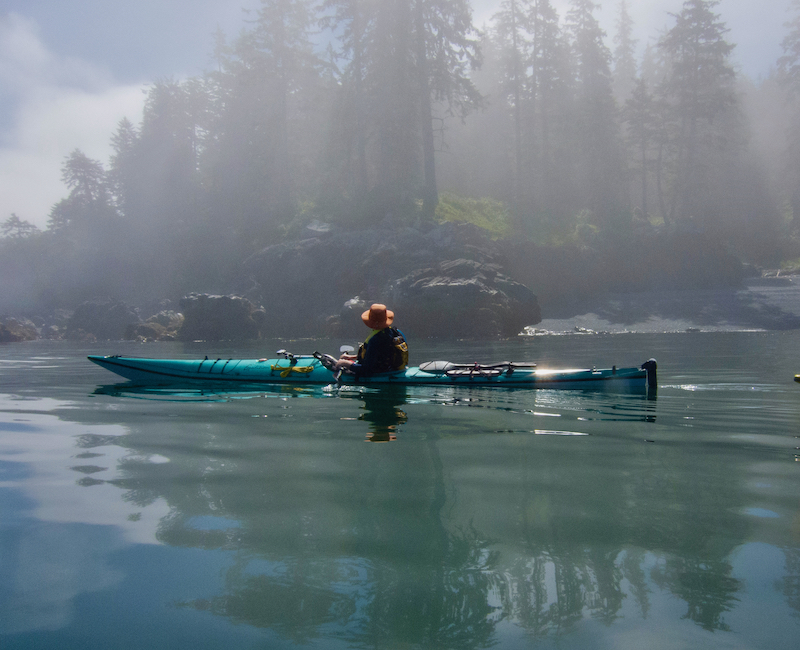
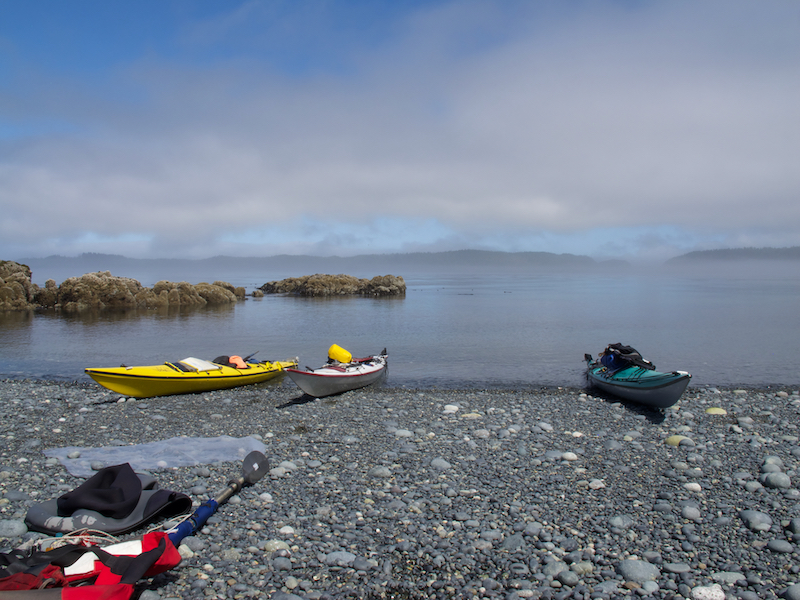
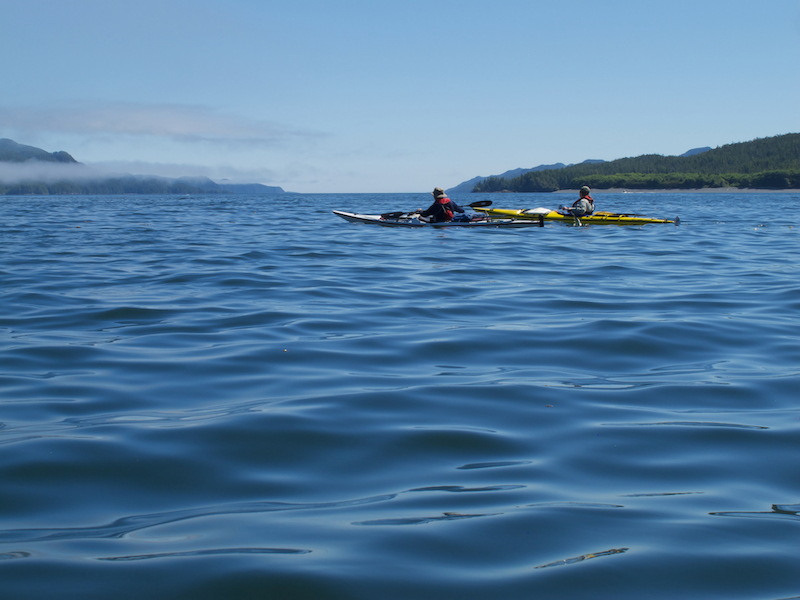
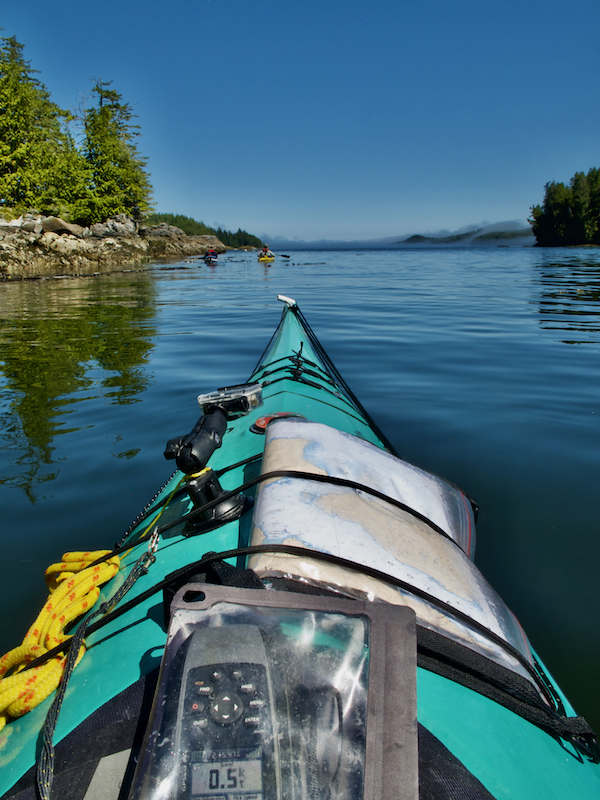
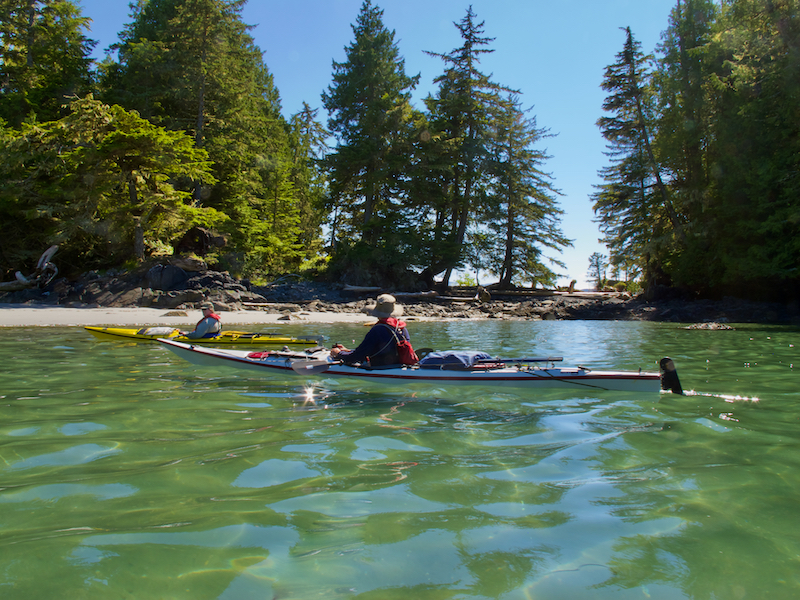
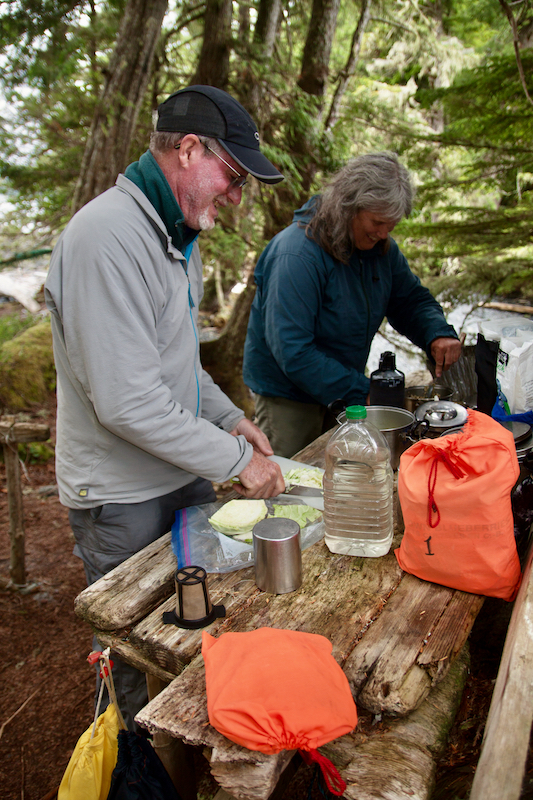
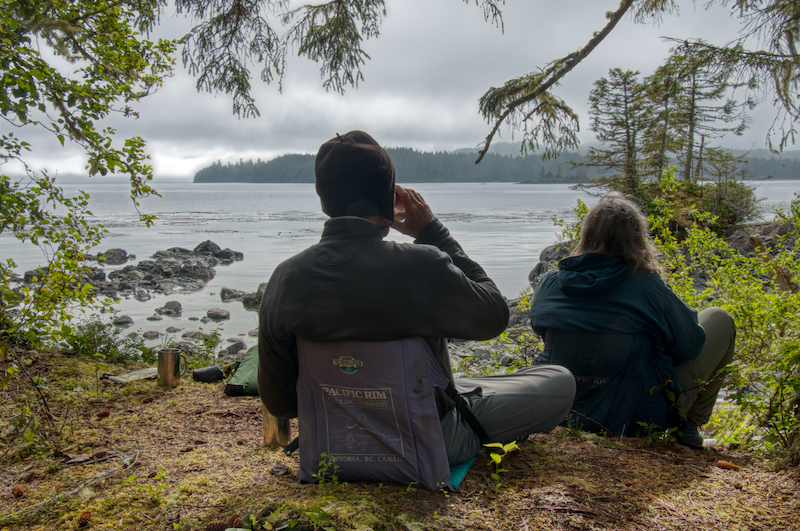
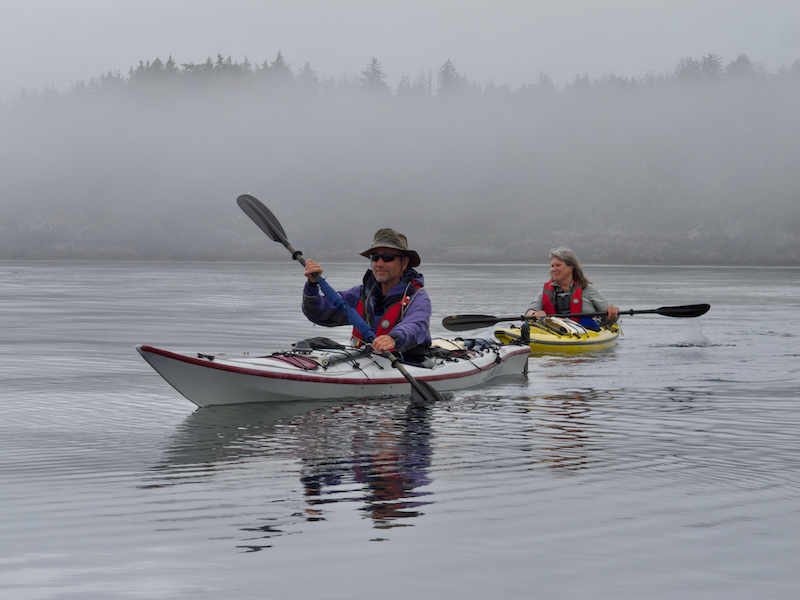
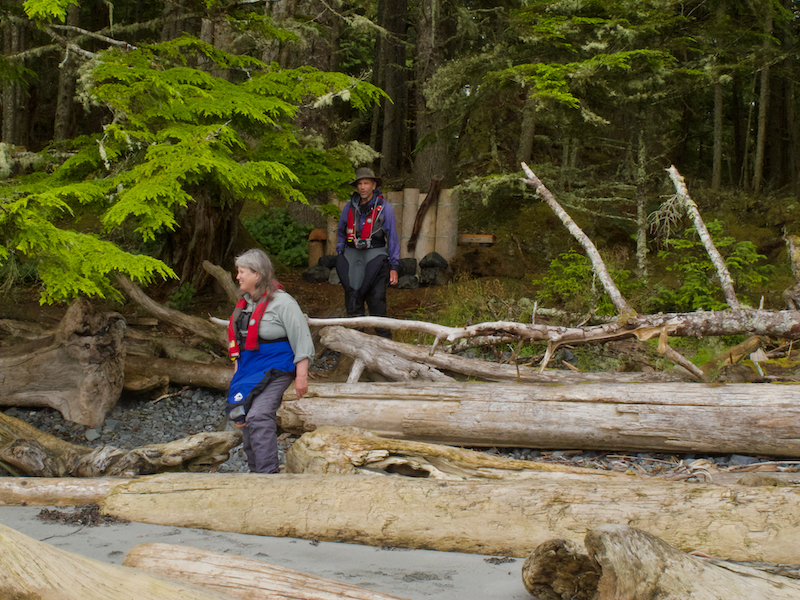
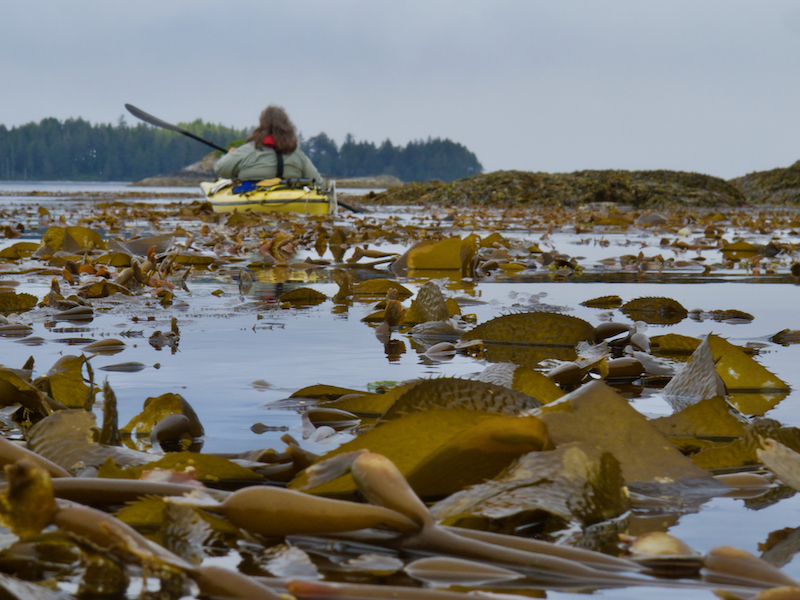
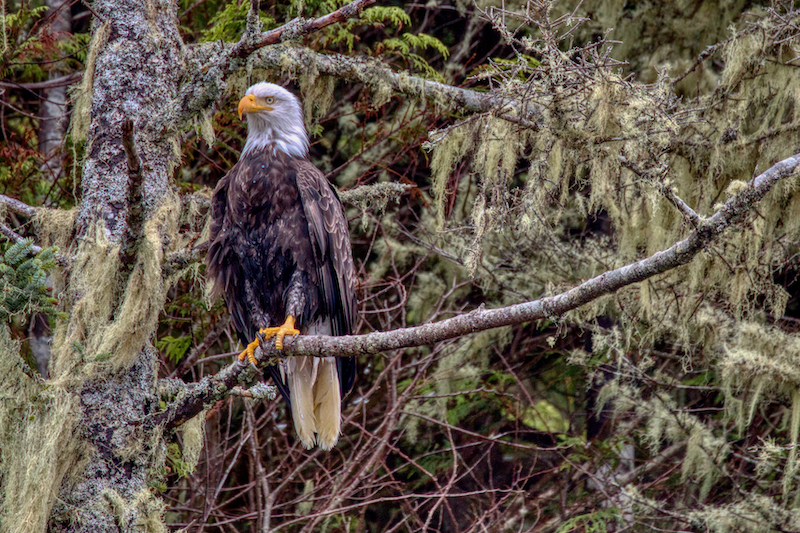
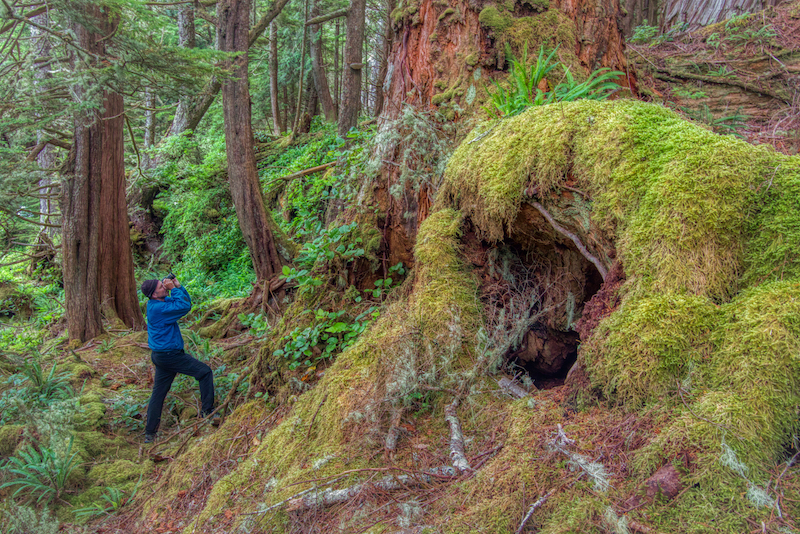
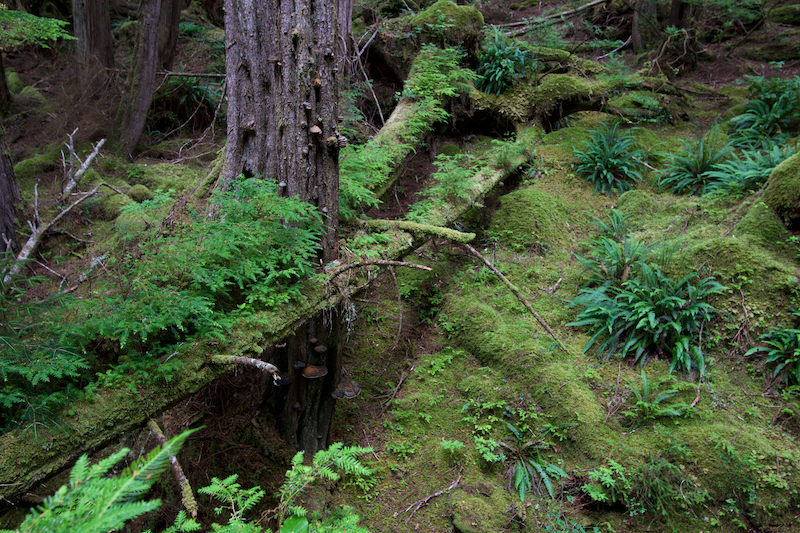
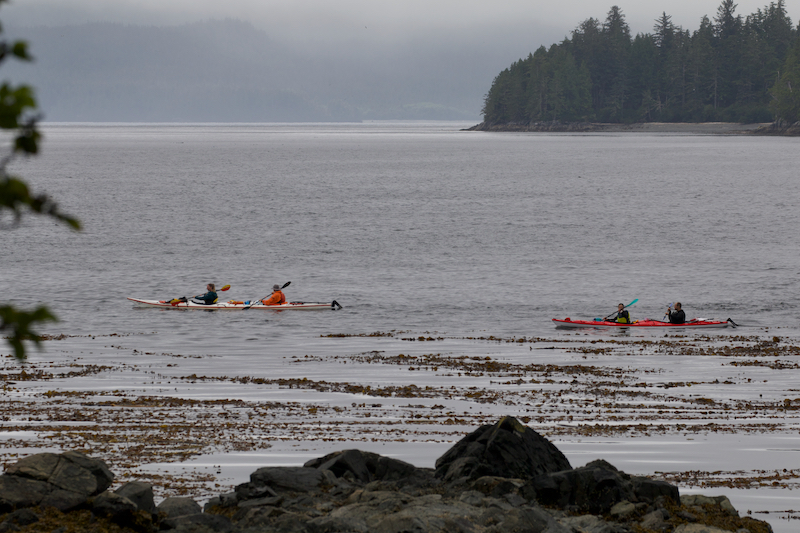
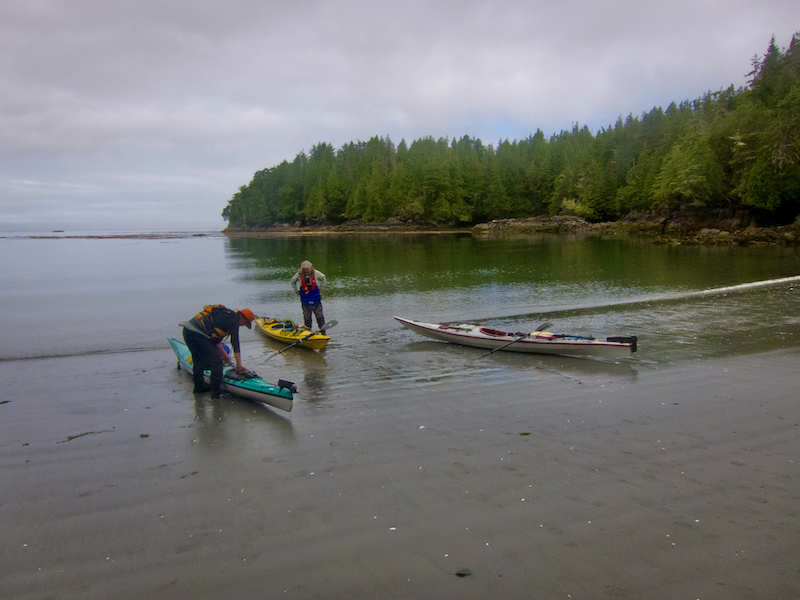
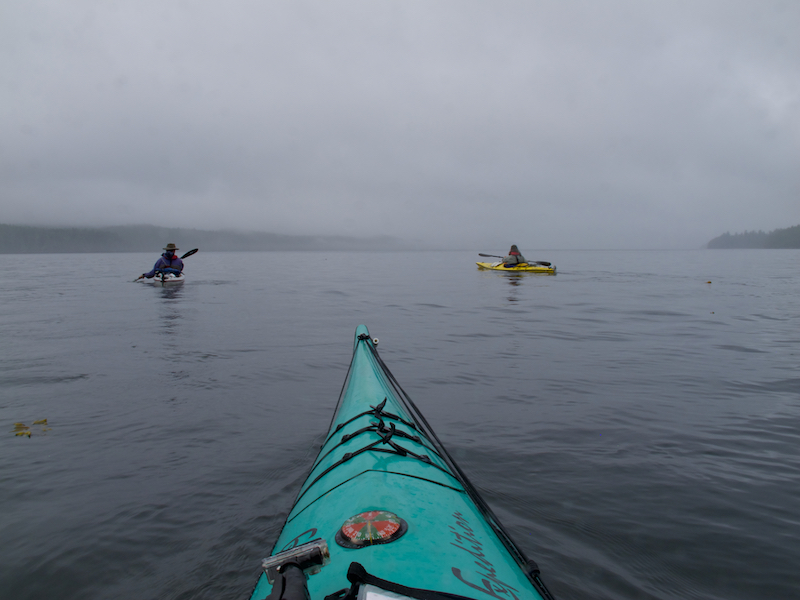
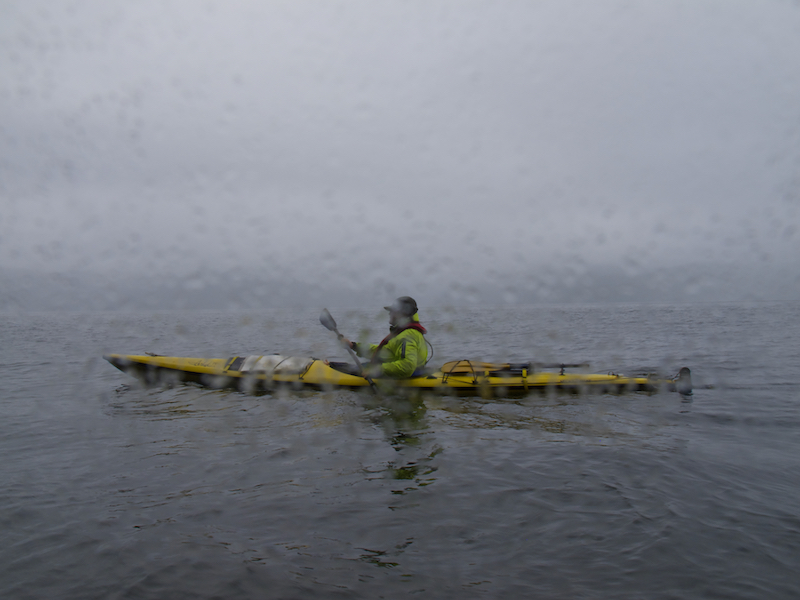
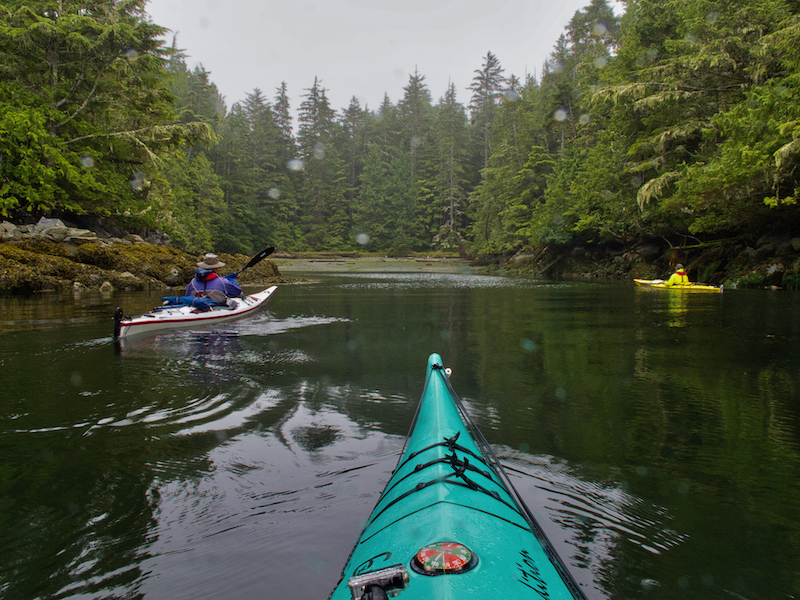
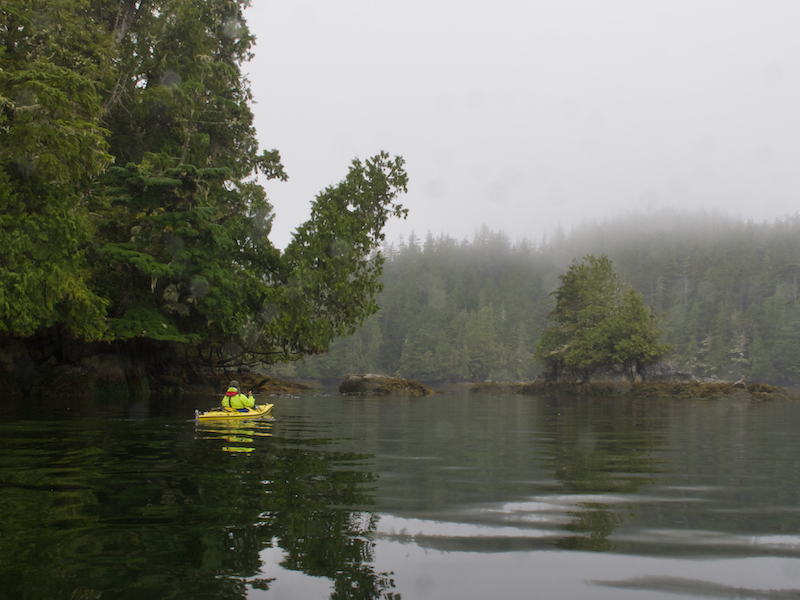
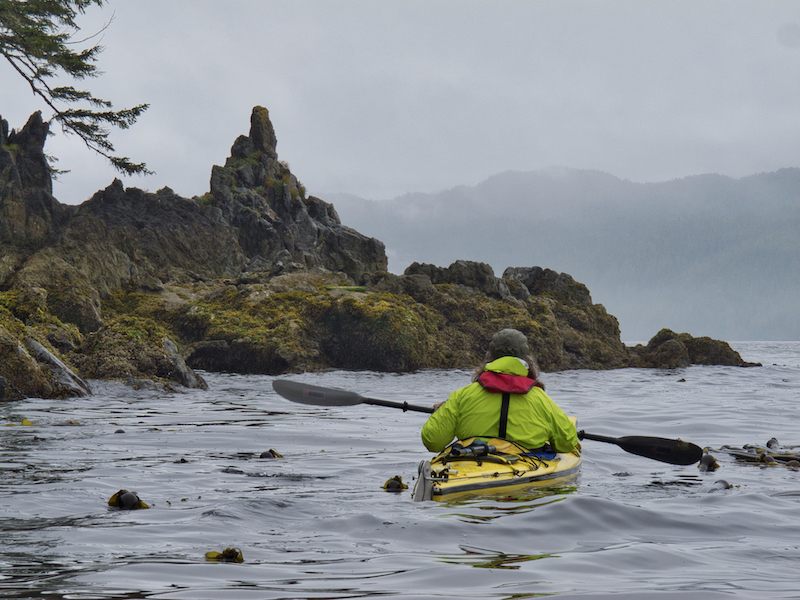
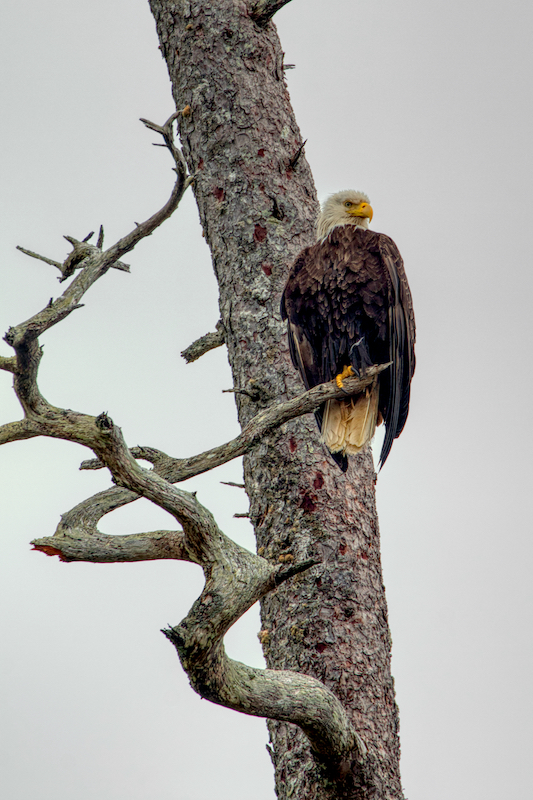
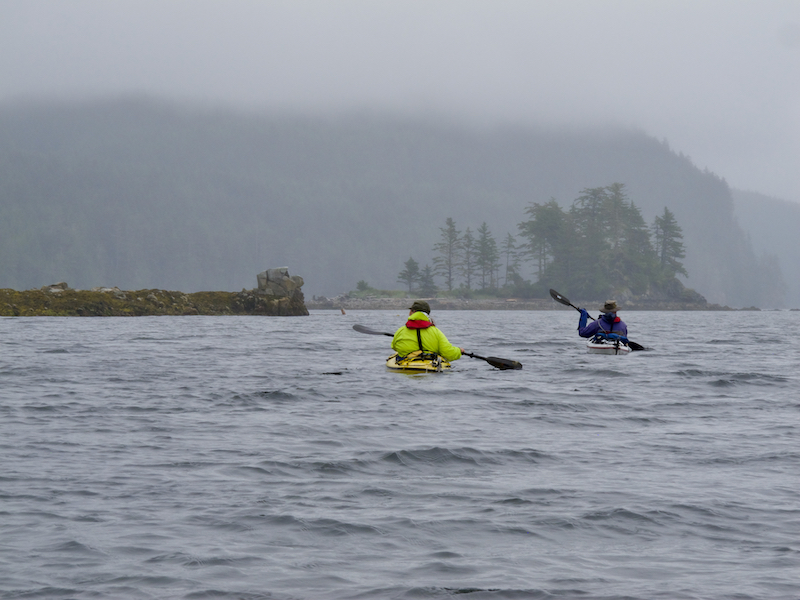
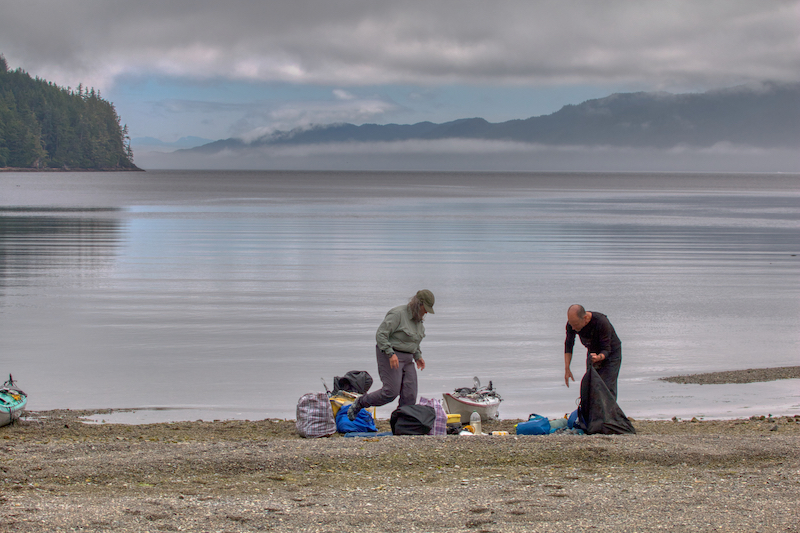
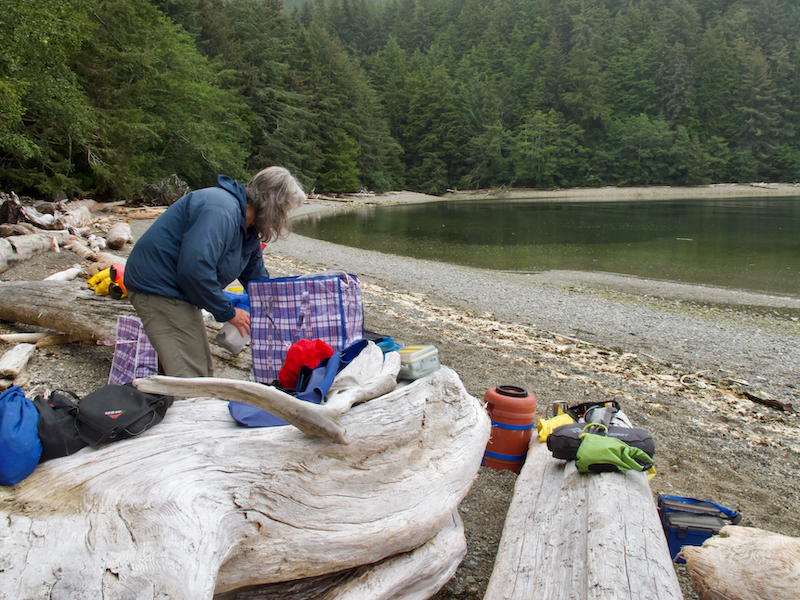
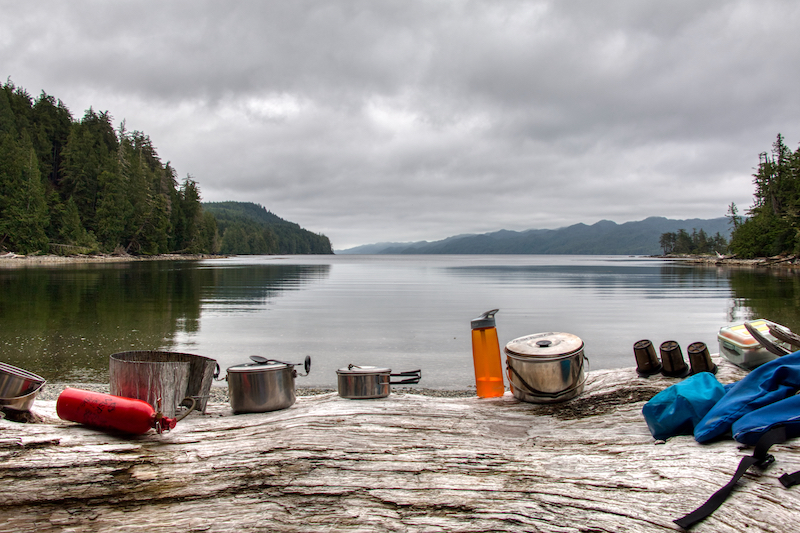
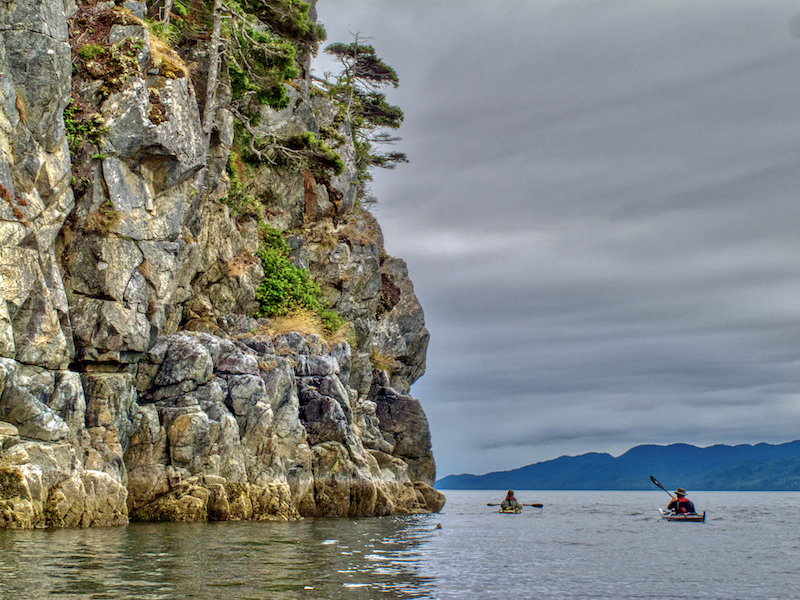
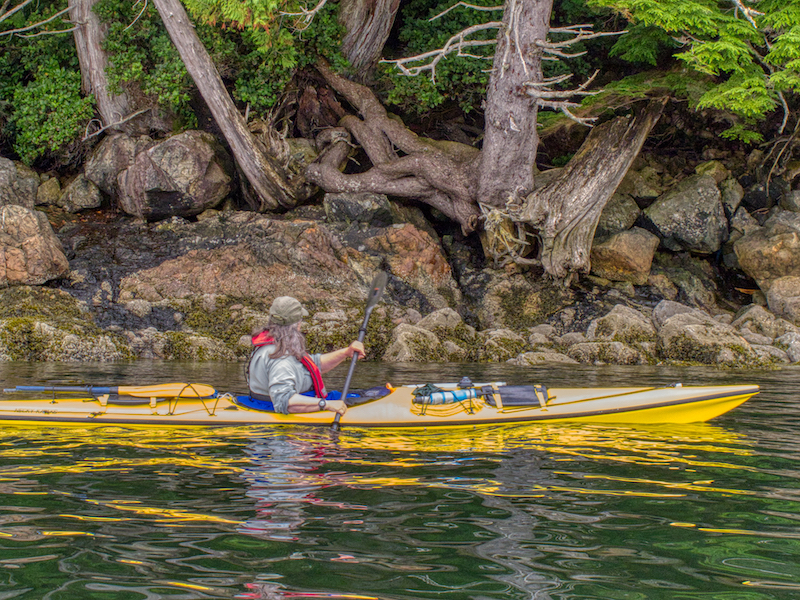
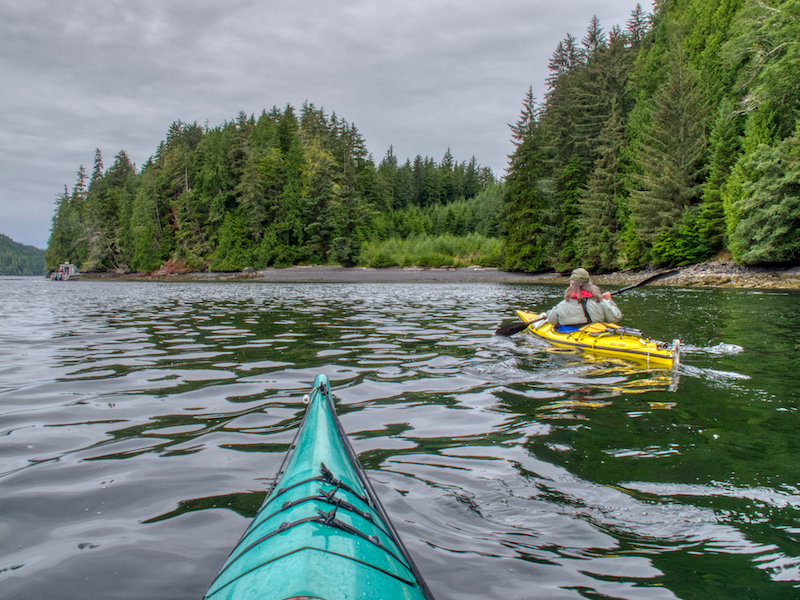
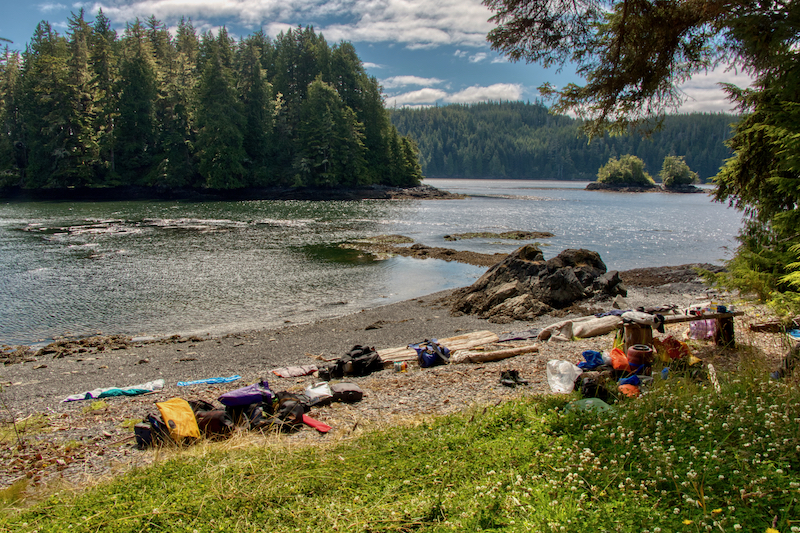
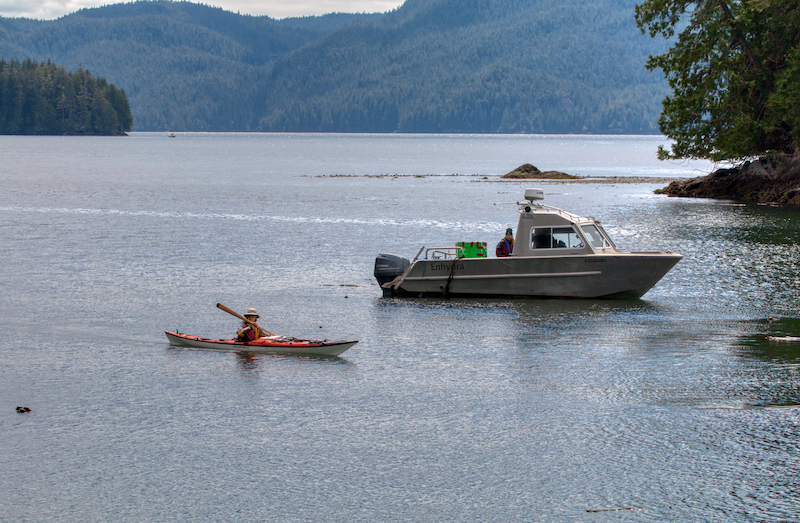
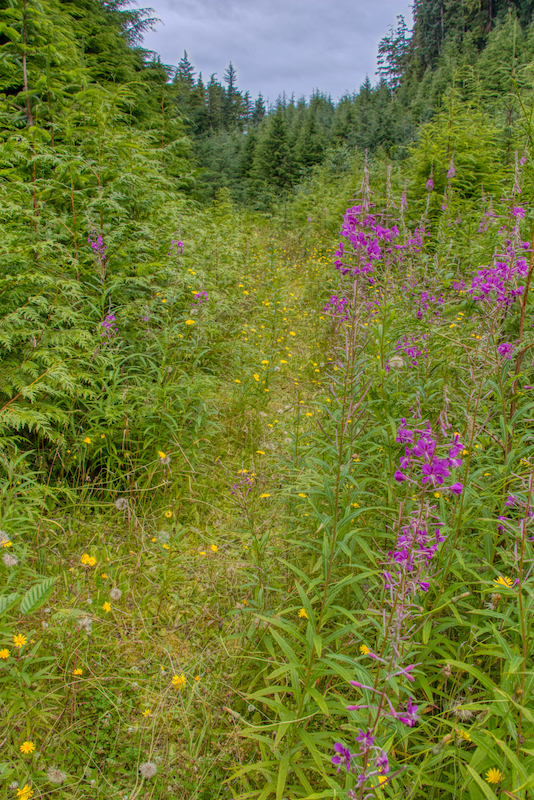
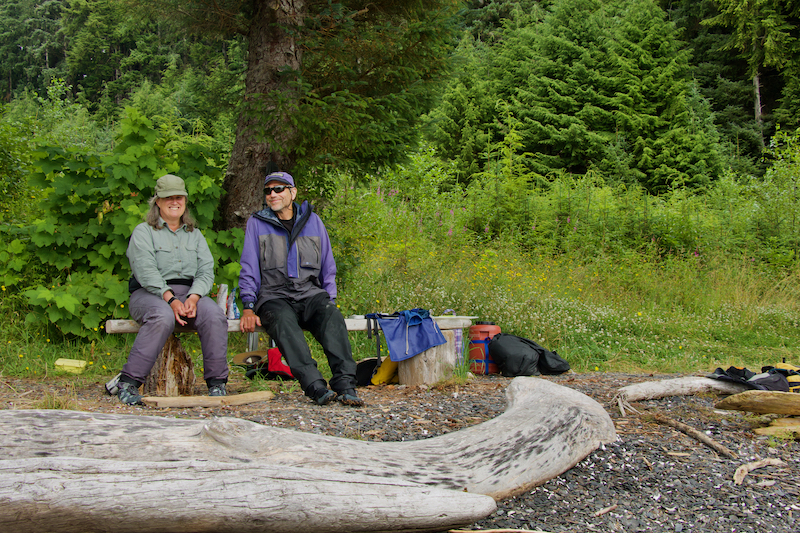
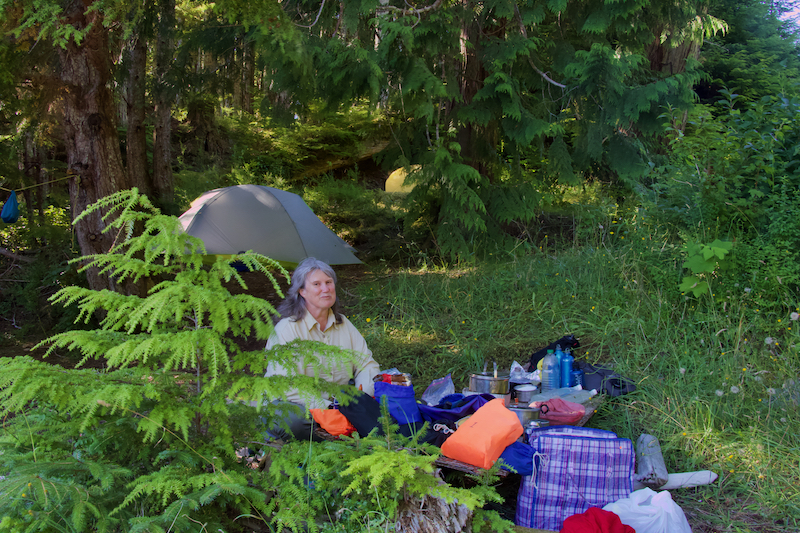
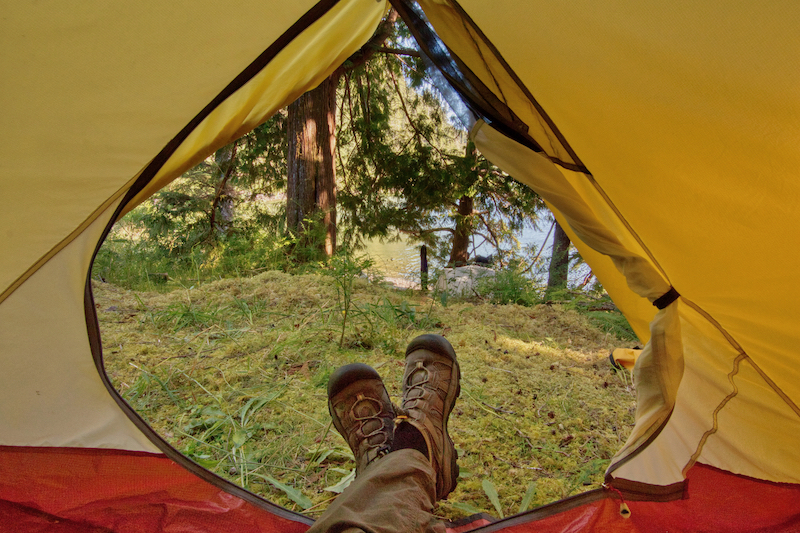
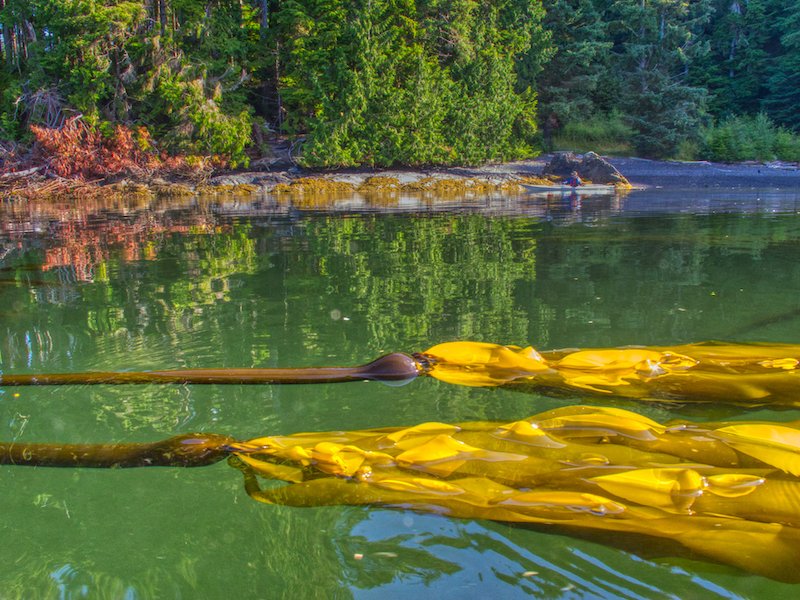
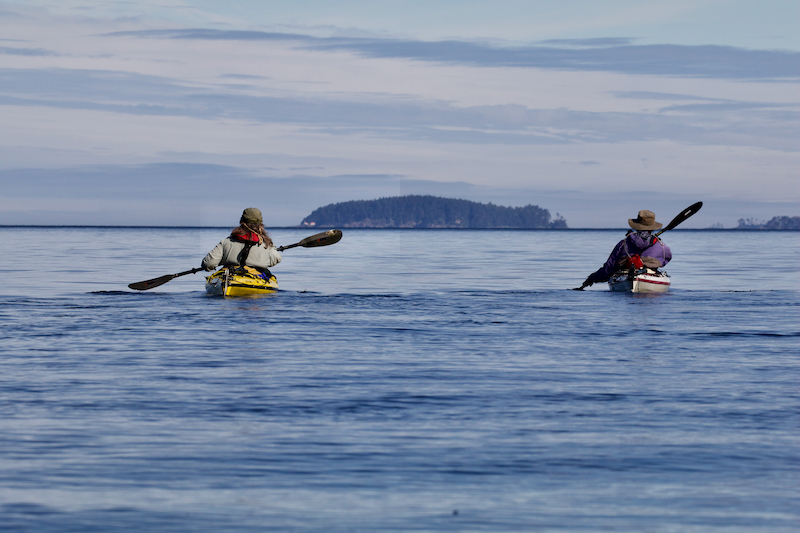
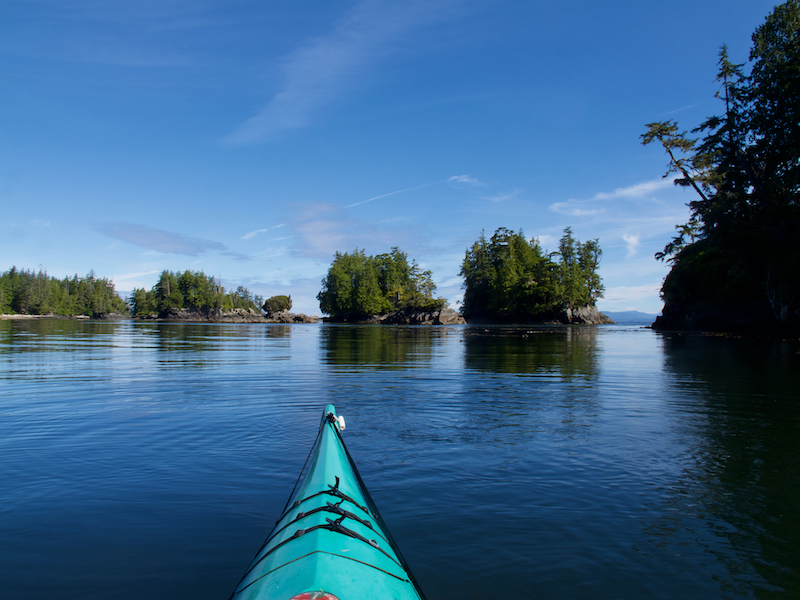
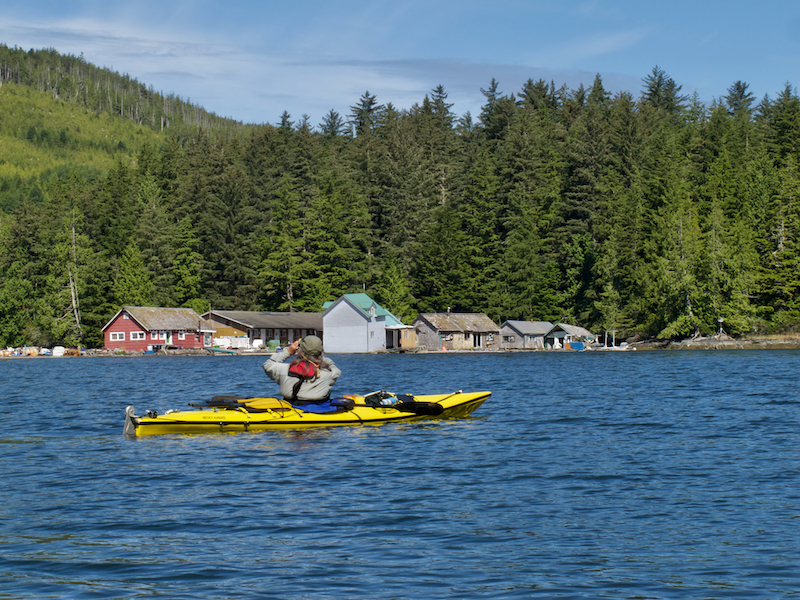
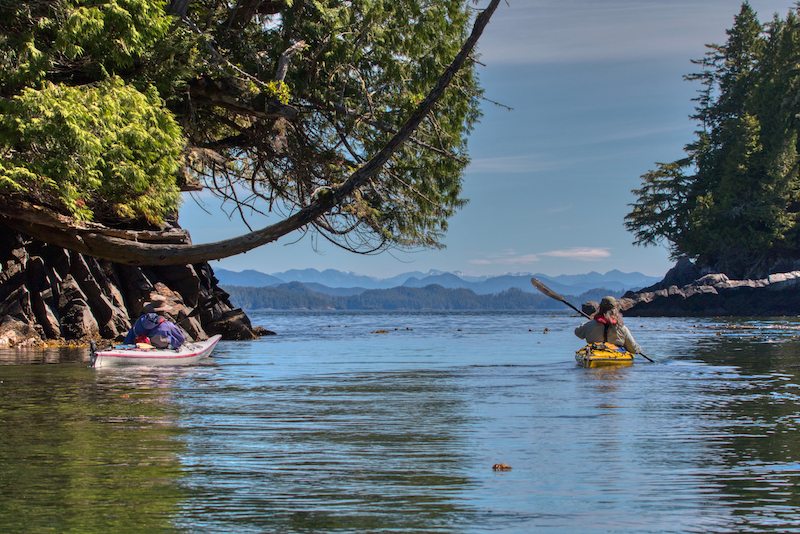
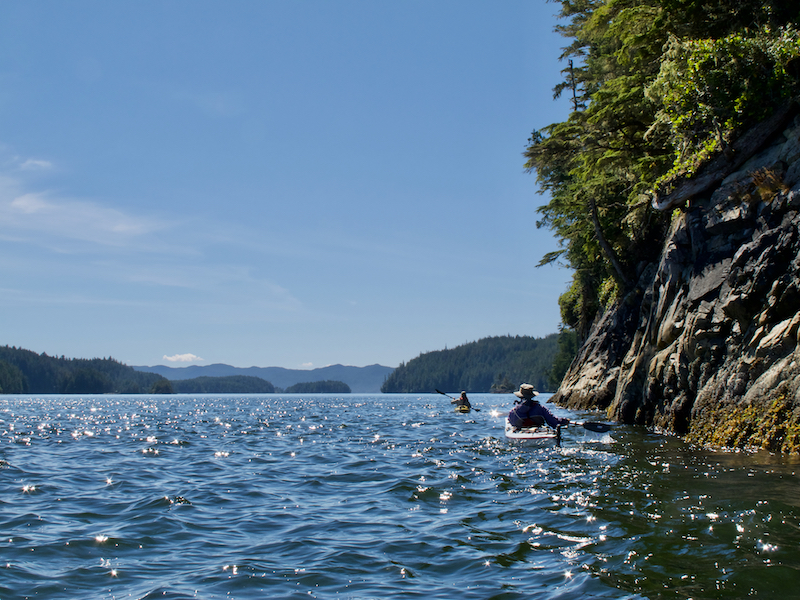
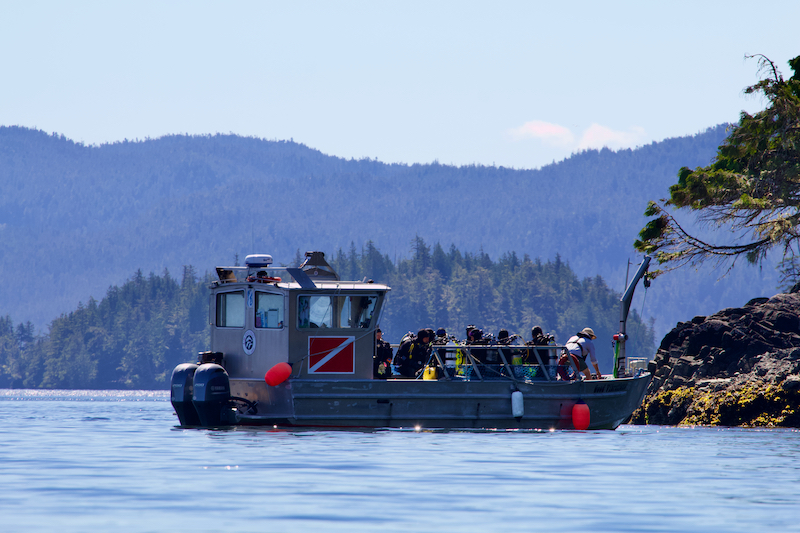
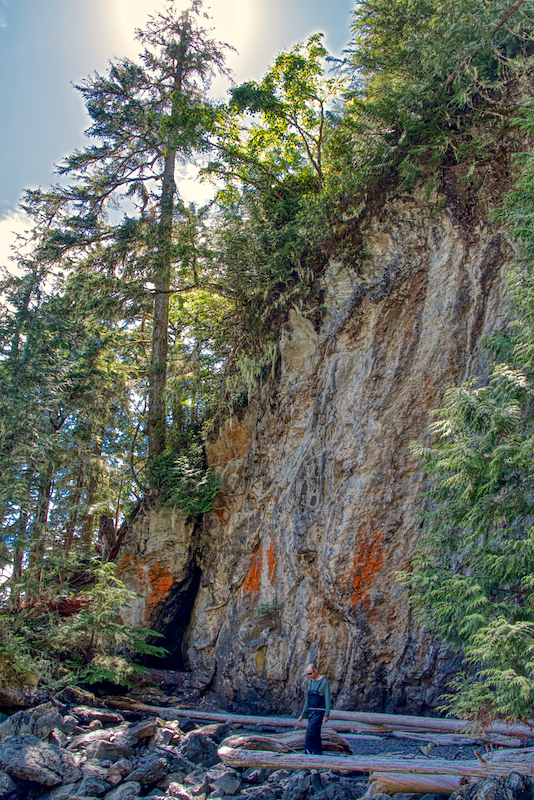
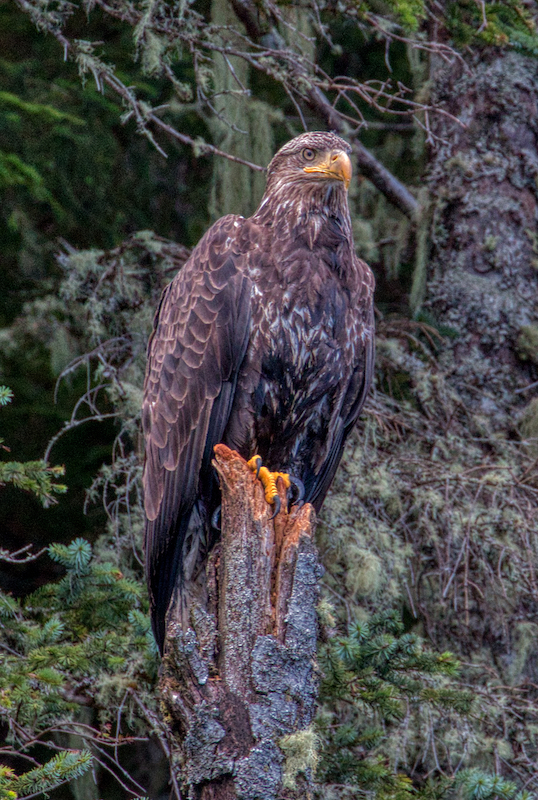
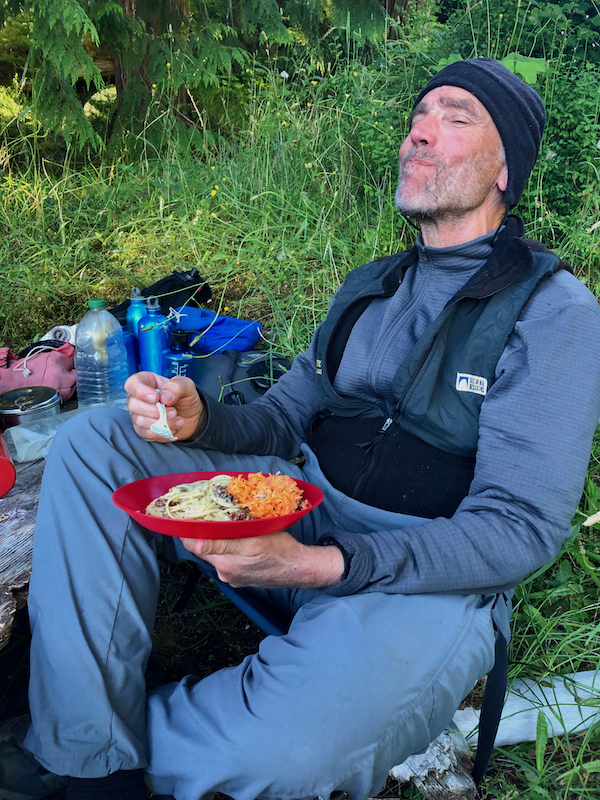
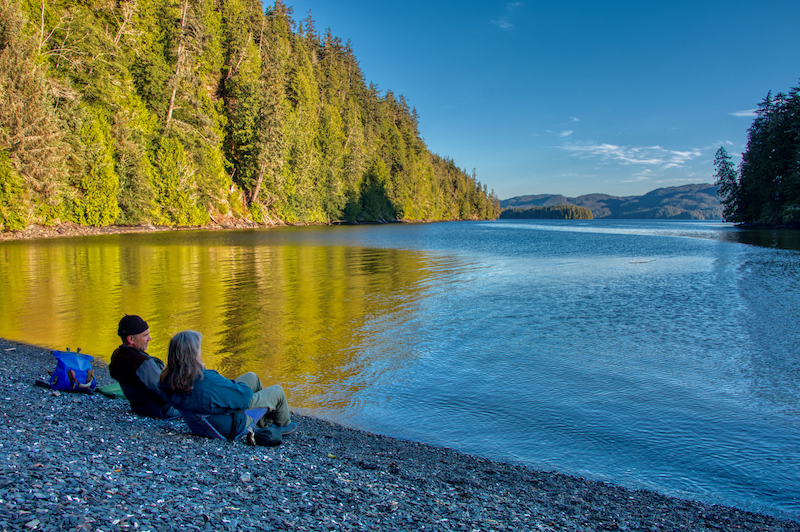
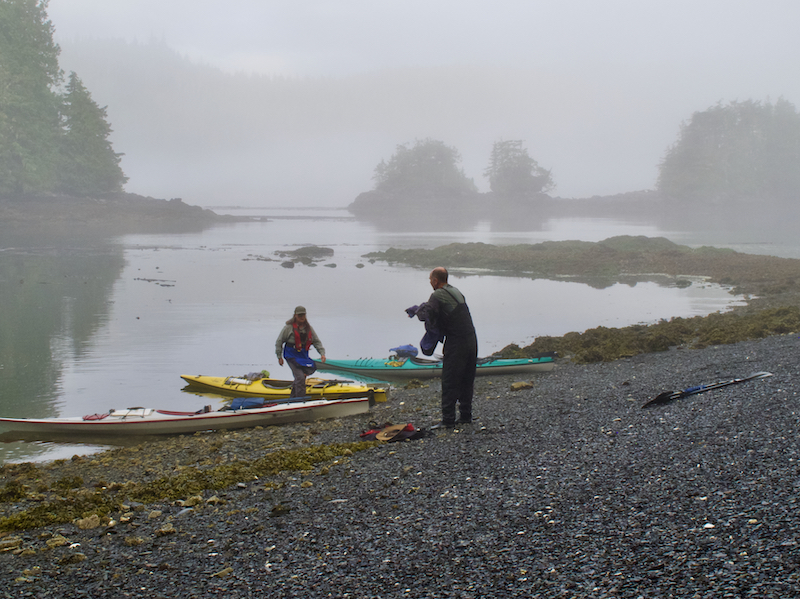
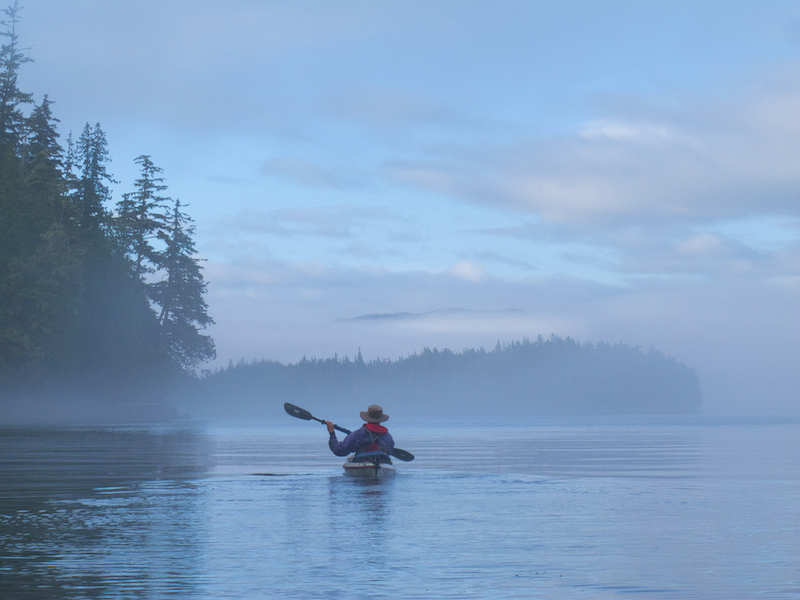
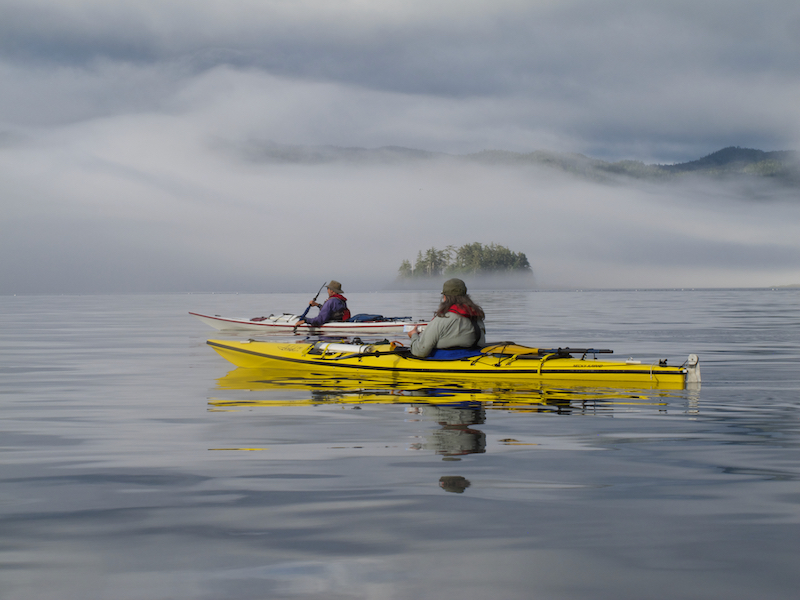
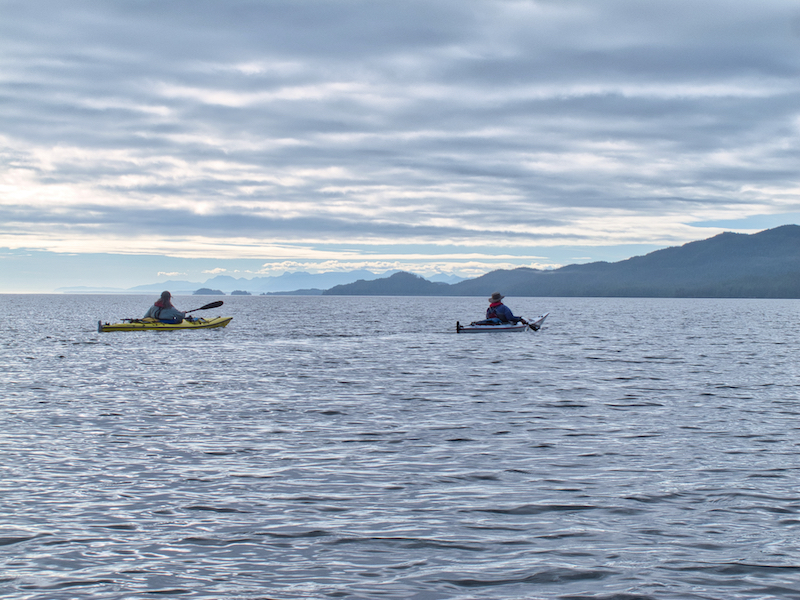
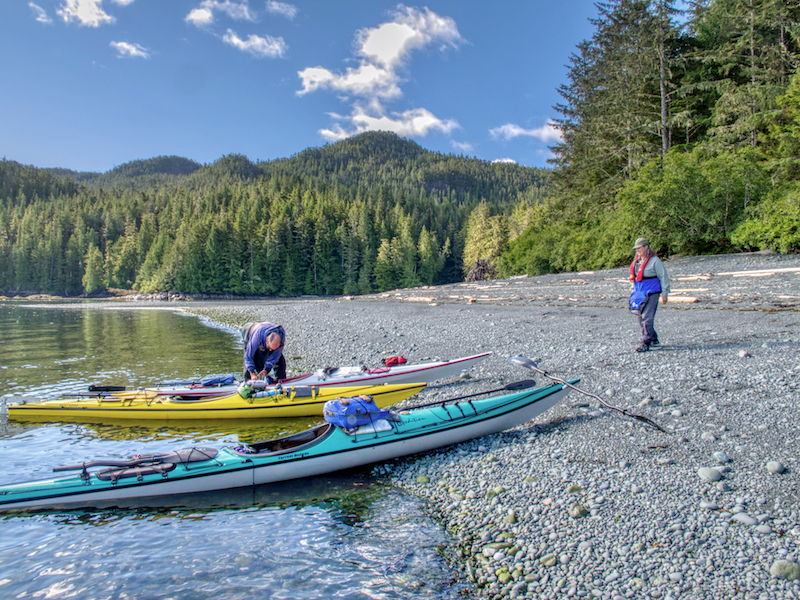
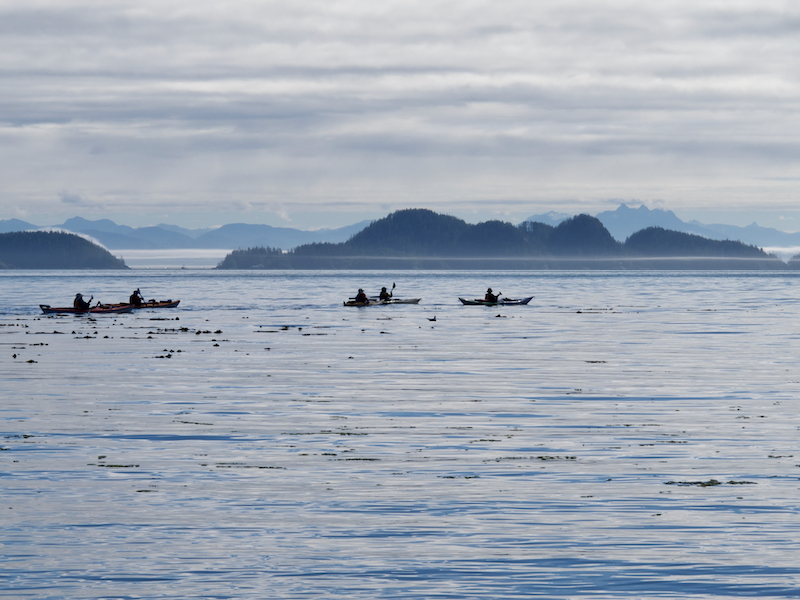

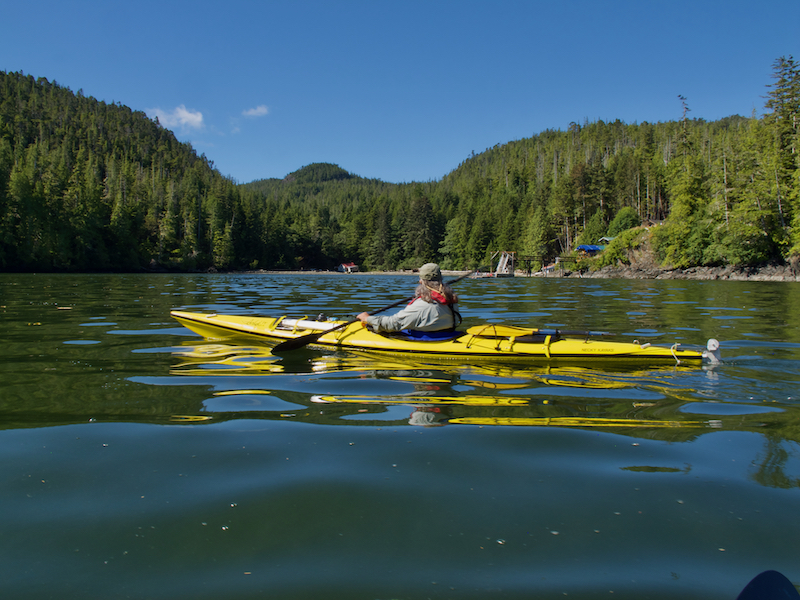
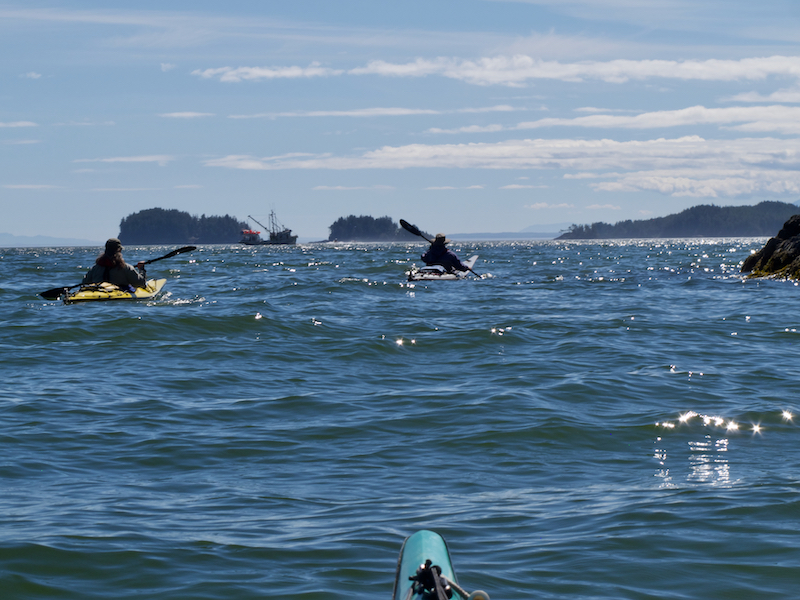
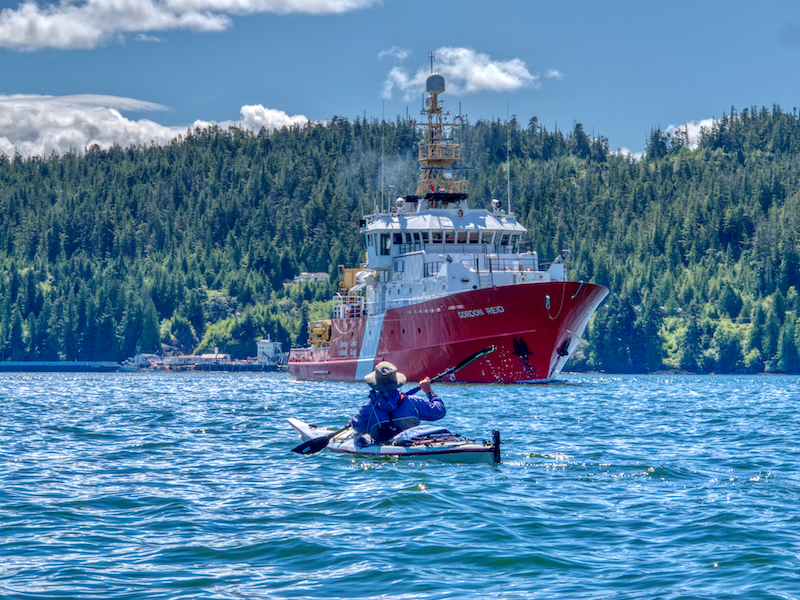
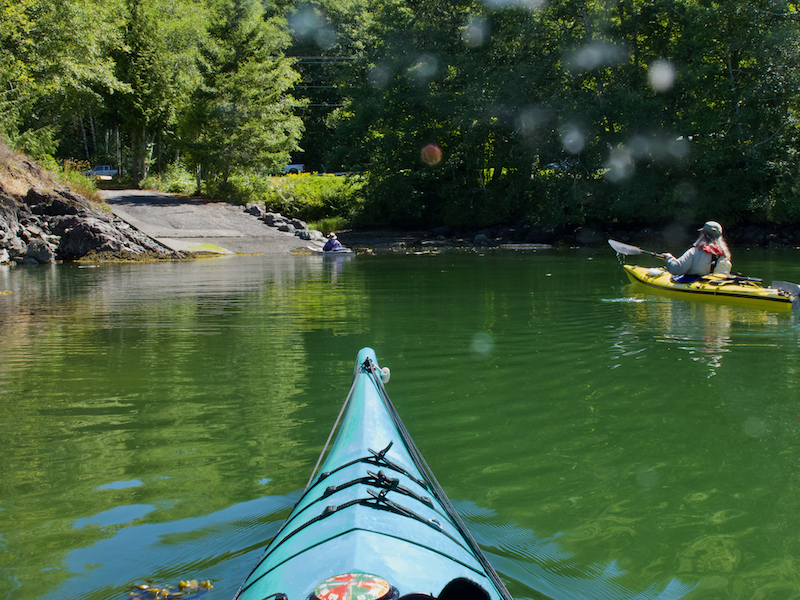

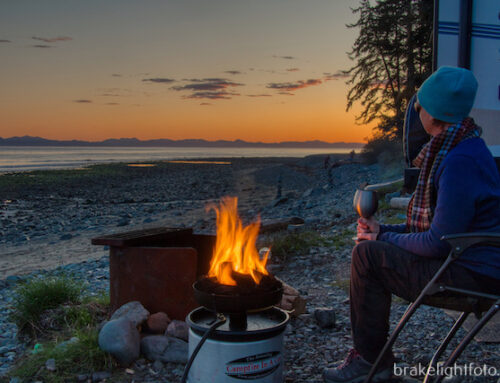
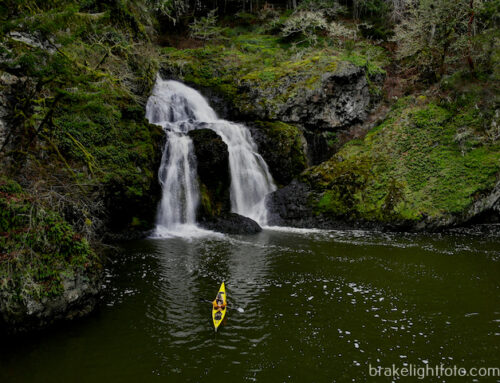
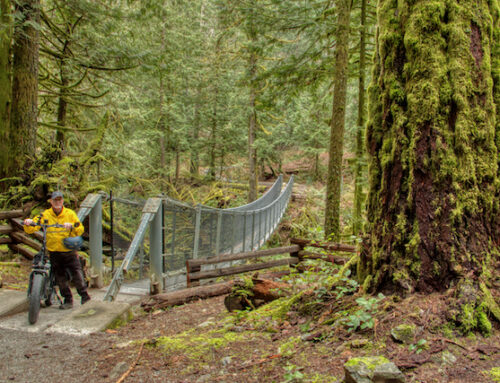
I thoroughly enjoyed looking at the many photos of the kayaking trip in the Port Hardy area. My grandfather and his brother took a portable sawmill by barge from Saanich to Duval Island where they cut down enough trees to build a house in Saanich where my father was born. My dad always told us that Duval Island was named after my grandfather and his brother but after getting in touch with the government it looks like it was named before they travelled there. Does anyone know who Duval Island was named after?
Thanks.
Jim Duval
jimduval@dccnet.com
Thanks so much Jim, and sorry for the late response to your comment, but I don’t know who Duval Island was named after. I dd do a bit of searching on the history, but unfortunately didn’t come up with anything. Cheers!